Safari Can’t Find The Server? 7 Ways To Fix It
Have you been facing the Safari can’t find the server error on your browser often? It’s frustrating, more so, even when the internet seems to be working fine. There are several reasons for this error, such as wrong DNS settings, outdated app, incorrect URL, etc.
So, I have jotted down everything you need to know to help you fix this issue and get you back to browsing on Safari.

How To Fix Safari Can’t Find The Server on Your macOS
Safari is by far the best browser I have used, but there are times such as these that might make you rethink some alternatives. Opera One , for example, is a great option because it has one of the highest speed scores that help the websites load faster, making your browser experience as seamless as possible. Nonetheless, we can still fix this. Let’s check out some methods you can try.
1. Disable Advanced Tracking and Fingerprinting Protections
Apple introduced a new privacy and security feature for all Safari users to protect against trackers while browsing different websites. However, this might interfere with certain websites and prevent them from loading, so you have been getting the Safari can’t find the server error.
Time needed: 4 minutes
Let’s look at the steps to disable this.
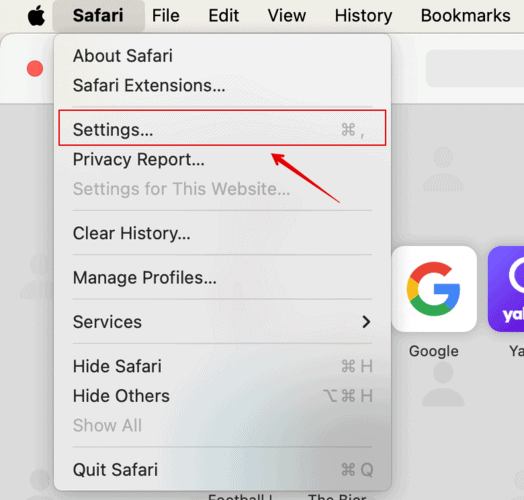
2. Check Your Internet Connection
Before jumping over to trying some difficult methods, you must start by checking your Internet connection. Here are some of the steps you can follow to check Internet connection on your Mac.
- Open another tab on Safari, try Google.com, and see if it works.
- Check with another browser, such as Google Chrome.
- Reconnect your Wi-Fi on your Mac.
- Restart your Router to be on the safe side.
Once you have tried all of this, open the Safari browser again and see if it works.
3. Change DNS Settings
If your internet connection works perfectly fine, you should check your DNS settings and make the necessary changes to it.
Here is what you can do.
- Go to the Apple menu on the top-left corner of your desktop.
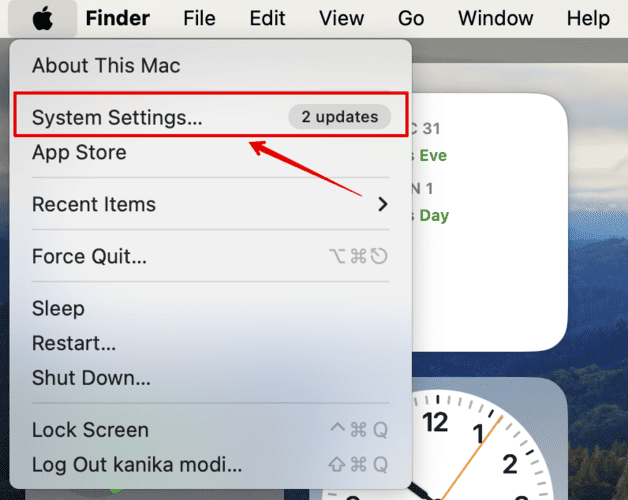
- Click on DNS on the left.
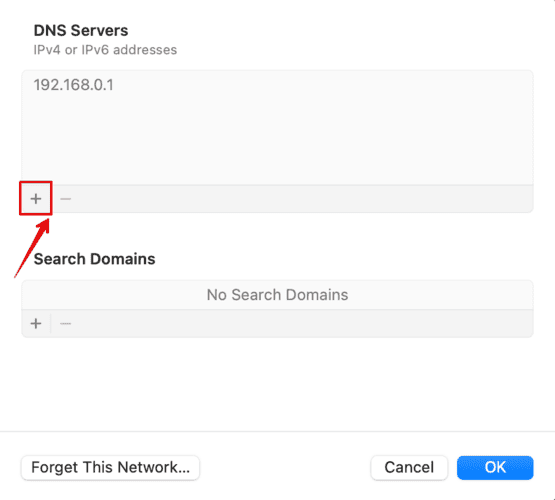
- Click on OK to confirm.
Wait for the signal to refresh and check if Safari is working again.
4. Disable VPN
Have you been using any VPN on your system? Well, VPNs route the traffic through their servers, which can occasionally cause connectivity issues. Hence, disabling the VPN if you are currently using it is best. Once done, reconnect the Wi-Fi and start using Safari again.
5. Remove Cache and Cookies
If none of the above methods has worked for you, you must clear the cache and cookies saved on your Safari browser. The saved data is sometimes outdated or even corrupted, which might cause Safari server errors. Let’s check out the steps to remove the cache and cookies.

- Click on Remove Now on the dialog box on your screen to confirm.
To save the changes, click on done.
6. Renew DHCP Lease
This method worked for me like a charm. If your device is still facing any network-related issues, you must renew the DHCP lease. It will help resolve any communication issues with the server.
- Go to TCP/IP on the left sidebar.
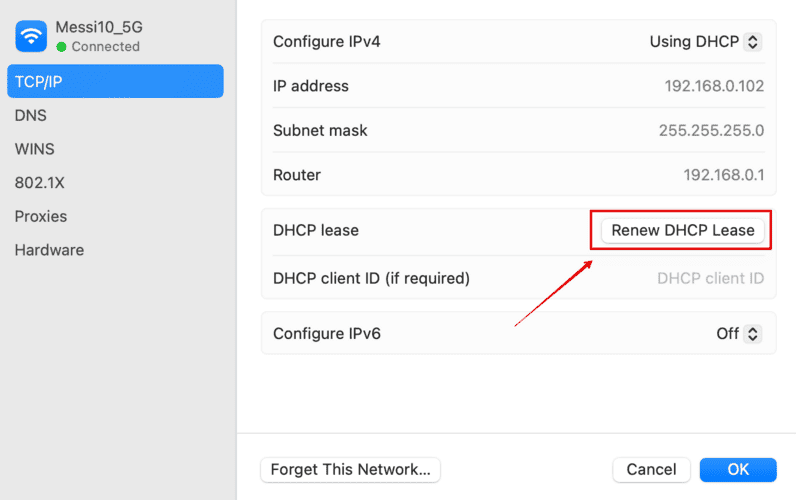
- On the dialog box, select Apply.
Wait for the network settings to process in the background. Once done, try reconnecting to your Wi-Fi and check if the Safari error has been resolved.
7. Update Your macOS
Did any of the methods above work for you? If not, then you should try updating your macOS with the latest version that might contain bug fixes.
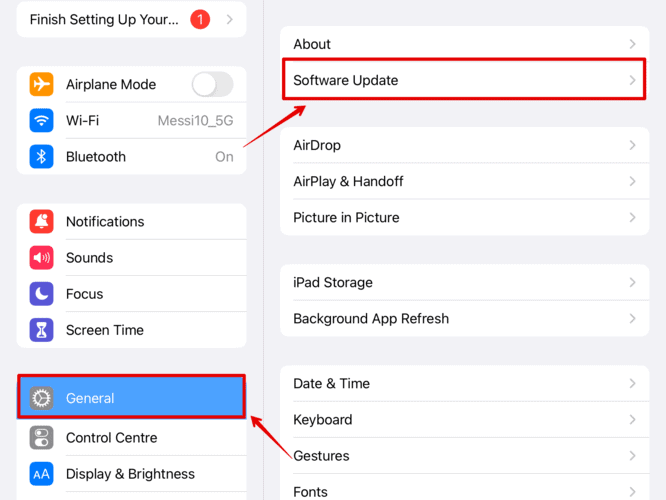
Wait for the system to check for updates, then install the latest version. The system will then restart to save the changes.
Furthermore, go to the App Store from the Dock below and check for any Safari updates that might be available. All the above methods have been tried and tested since I have had the same issue multiple times with Safari. Simply restarting your Mac might work, or you might have to change the DNS settings.
Leave a Reply Cancel reply
You must be logged in to post a comment.
This site uses Akismet to reduce spam. Learn how your comment data is processed .
- Kanika Modi

How to Fix “Safari Can’t Find the Server” Error on Mac
Parth Shah is an evergreen freelance writer covering how-tos, app guides, comparisons, listicles, and troubleshooting guides on Android, iOS, Windows, Mac, and smart TV platforms. He has over five years of experience and has covered 1,500+ articles on GuidingTech and Android Police. In his free time, you will see him binge-watching Netflix shows, reading books, and traveling.
Arshmeet has been a tech tinkerer since childhood, but she realized her love for technology and writing about 5 years ago. Since then, she has been honing her skills and helping people figure out how things work, troubleshoot problems, choose the right app and products, and dig deep into the new and old concepts of technology. She is a self-professed Apple Enthusiast who loves debating what’s good and what’s not. It is her passion for finding techniques, hacks, apps, and products that make everyday life simpler.
- Firstly, you should try some basic fixes, say, check if the website is down or blocked, restart the router, disable VPN, etc.
- Next up clear Safari Cache to remove any glitches or issues caused due to it.
- Lastly, you could flush DNS cache, modify DNS Settings, Disable content blocker, etc., in an attempt to fix the issue.
Why Can’t Safari Connect to Server on Mac
If your Mac has network connection issues, Safari can’t connect to the server normally. You will keep running into the ‘Safari can’t find server’ error. Apart from Wi-Fi problems, here are several reasons behind the irritating problem.
- Wi-Fi connectivity issues
- Router malfunction
- Outdated Safari browser on Mac
- iCloud Privacy Rely outage
- Issues from a specific website
- An active VPN network
- Incorrect URL
Basic Fixes
- Double check URL – Did you type the correct URL of the website? Even a single typo in a web address leads to the ‘Safari can’t find server’ issue on Mac. You should recheck the web URL, fix any typos, and try reloading the webpage.
- Check your network connection – You should ensure a stable network connection on your Mac. Most Macs support dual-band Wi-Fi frequency. We recommend connecting to a 5GHz Wi-Fi frequency on your Mac.
- Check if the website is down or blocked – Every website stores the content and other data on a third-party or company’s server. And these servers do face occasional outrage. You can confirm the issue from Downdetector , if the issue is with the server, you just have to wait it out.
- Restart router – Do you face the ‘Safari can’t find server error’ on iPhone and other devices too? If your home or office router is acting up, internet connectivity won’t work. You should turn off the router, remove it from the power plug, and switch it on again.
- Disable VPN – An active VPN connection may interfere with some websites from specific regions. You have two options here. If you want to continue with VPN, connect to another server. Or completely turn off the VPN and try again.
- Update macOS – Notably, Apple bundles Safari with macOS updates. You can update macOS to the latest version to enjoy all the new Safari add-ons and bug fixes.
Fix 1. Clear Safari Cache
Clearing Safari data is one of the effective ways to troubleshoot common browser issues on Mac.
Step 1: Open Safari on Mac. Select Safari at the top and open Settings .
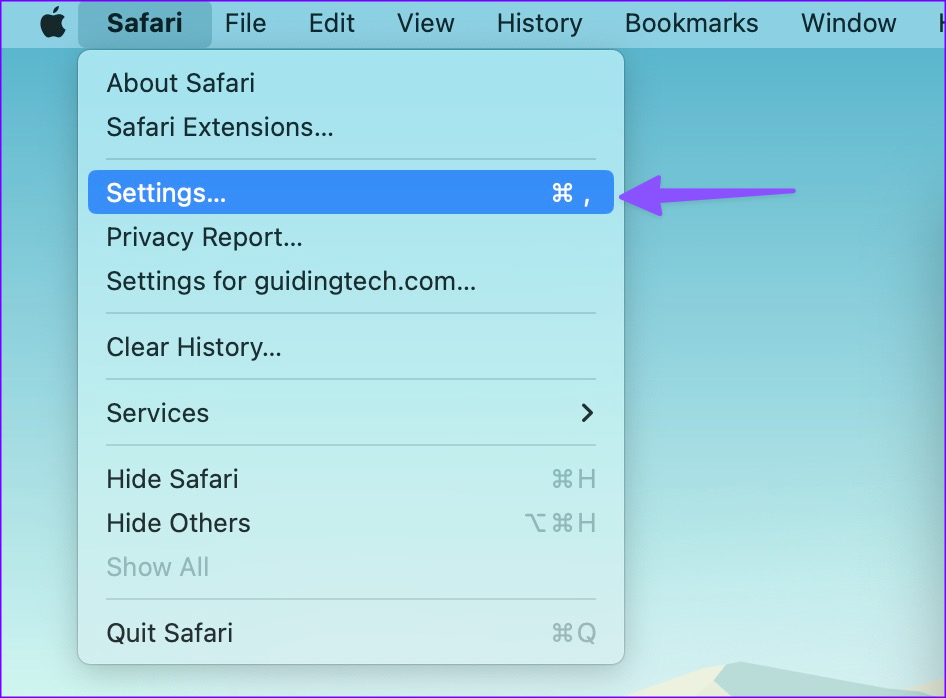
Step 2: Move to the Privacy tab . Click Manage Website Data .
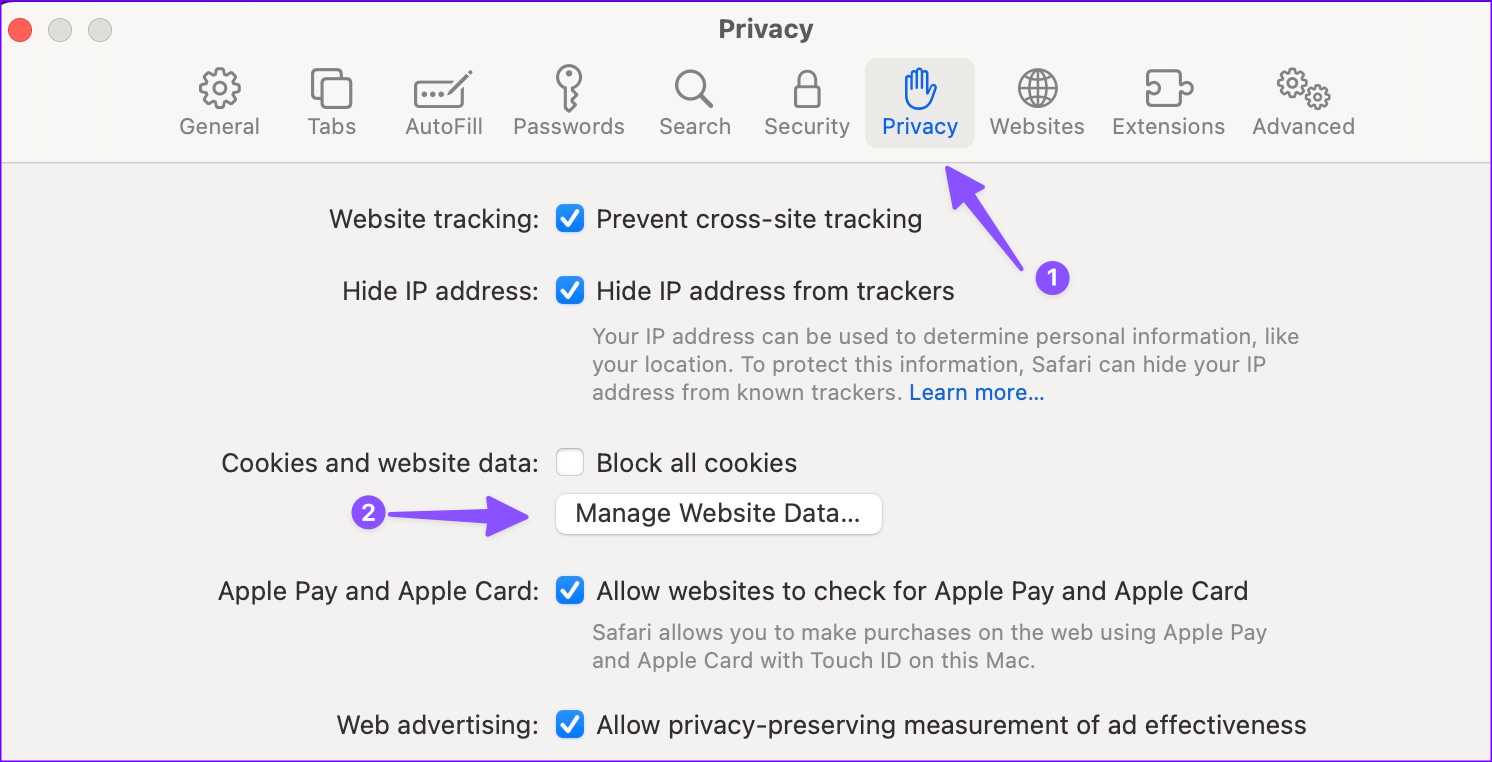
Step 3: Select Remove All and hit Done .
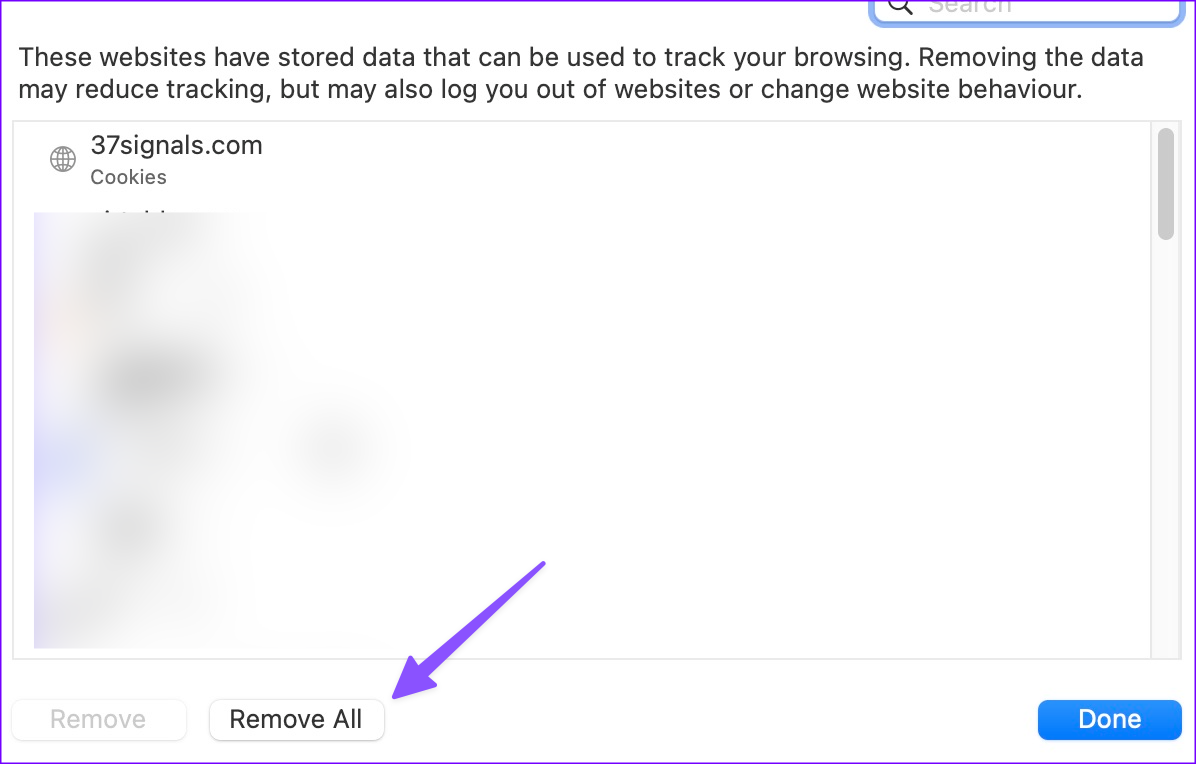
Tip: You can also delete website trackers from Safari to be thorough.
Fix 2. Flush DNS Cache on Mac
When facing connectivity issues resetting the DNS cache can help. The process is a bit different from when flushing DNS on Windows , on Mac, we’ll use a Terminal command.
Step 1 : Open Terminal . You can either launch Spotlight and search for Terminal or go to Finder → Go → Utilities → Terminal.
Step 2 : Type in the following command into Terminal and press return .
Step 3 : Enter your device password and press return .

And just like that the DNS cache will reset immediately. Notably, there will be no indication for the same, it is just carried out in the background silently.
Fix 3. Renew DHCP Lease
If your device employs the Dynamic Host Configuration Protocol (DHCP), maybe the issue is caused due to it. You can renew DHCP Lease or reset it to resolve the issue.
Step 1 : Open the System Settings menu on your Mac.
Step 2 : Click Network from the sidebar. Select the Wi-Fi from the right-side window and click Details .

Step 3: Select TCP/IP from the sidebar. Click Renew DHCP Lease .
Step 4 : Click OK

Fix 4. Modify DNS Settings
You can tweak the default DNS settings with Google’s public DNS and browse Safari without any issues. It’s one of the neat ways to fix the ‘Safari can’t open Google’ issue.
Step 1: Go to Mac System Settings /System Preferences. Select Wi-Fi and open Details /Network → Advanced menu.
Step 2: Click DNS . Select + and enter Google’s public DNS entries , i.e.,
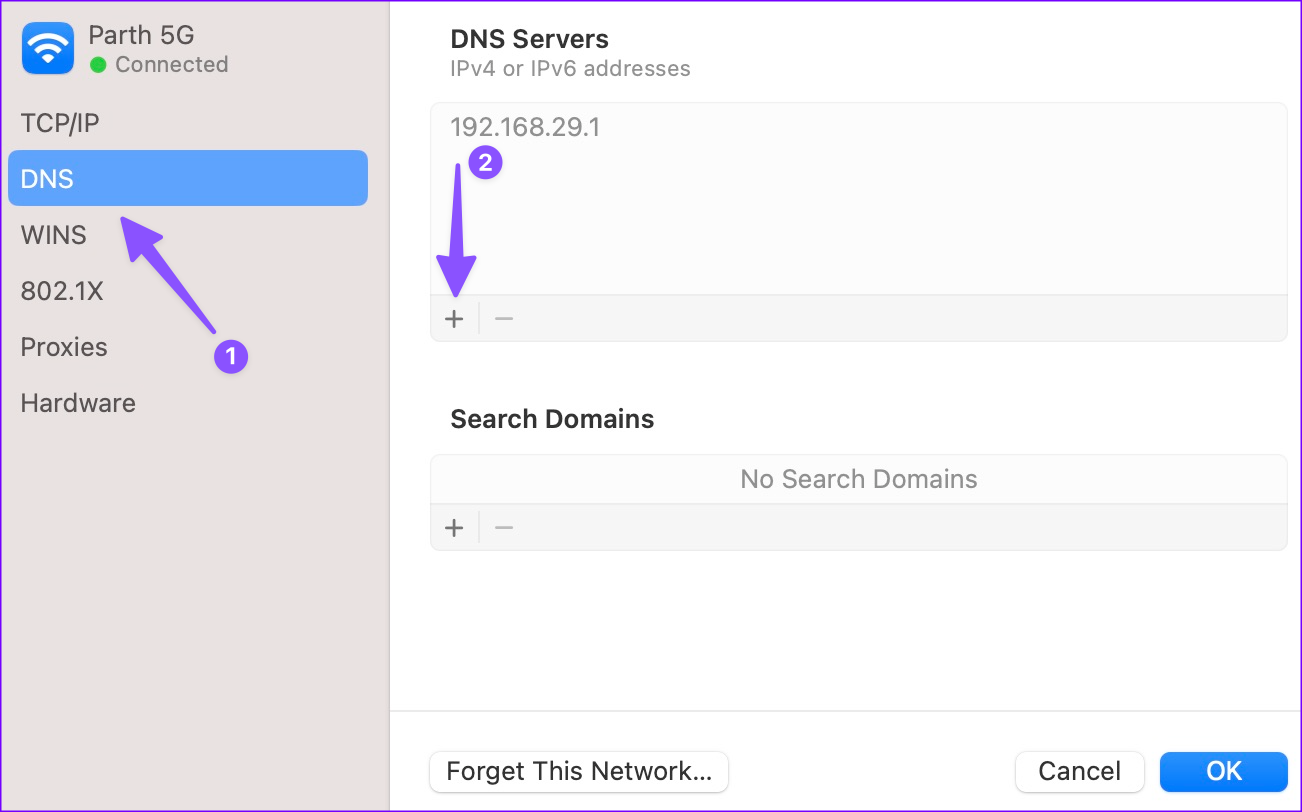
Step 3: Click OK and close the app.
You can now check if Safari is working fine.
Fix 5. Disable Content Blocker for the Website
While content blockers may offer a better reading experience on the Safari browser, they heavily affect the website revenue. That’s why some websites won’t let you read an article unless you disable the content blocker for them.
In this case, you are connecting to a server in the Safari browser. But you won’t be able to browse anything on the website. Here’s what you need to do.
Step 1: Hover the mouse to the search bar at the top and right-click on it. If you are using a trackpad, then use a two-finger click on the trackpad.
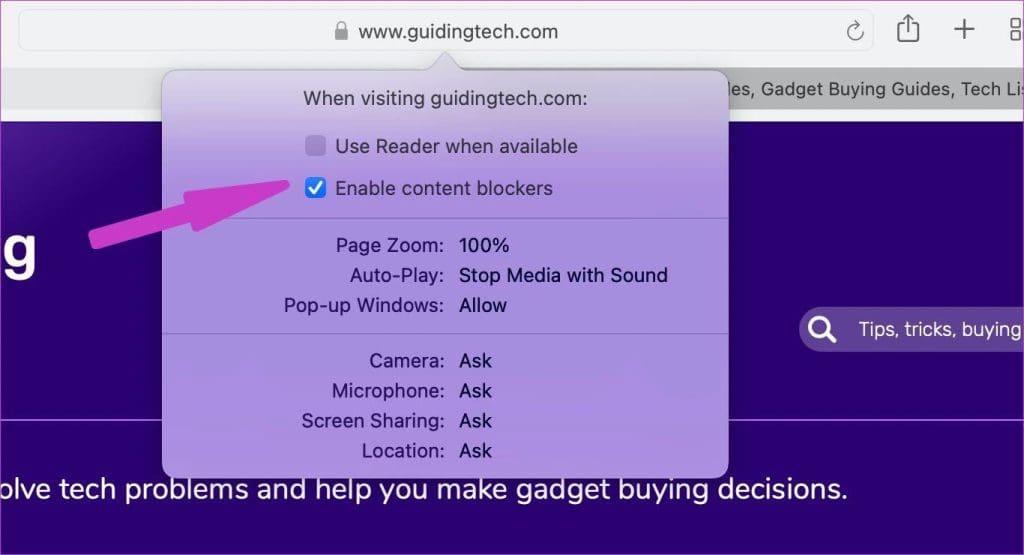
Step 2: It will open a pop-up menu to modify website settings. Disable the content blocker on it. Reload the website, and you are all set to read the post.
Fix 6. Disable iCloud Private Relay
With the macOS Monterey update, Apple has enabled iCloud Private Relay for iCloud+ subscribers. It reroutes the internet traffic through an Apple-branded server and protects your exact location.
Some location-based websites may require your exact location and have problems working with iCloud Private Relay enabled.
Thankfully, Apple allows users to disable iCloud Private Relay for a specific Wi-Fi connection on a Mac. Here’s how to do it.
Step 1: Open the System Settings /System Preferences menu on Mac.
Step 2: Select Wi-Fi and open Details . In the older version of macOS go to Network → Wi-Fi
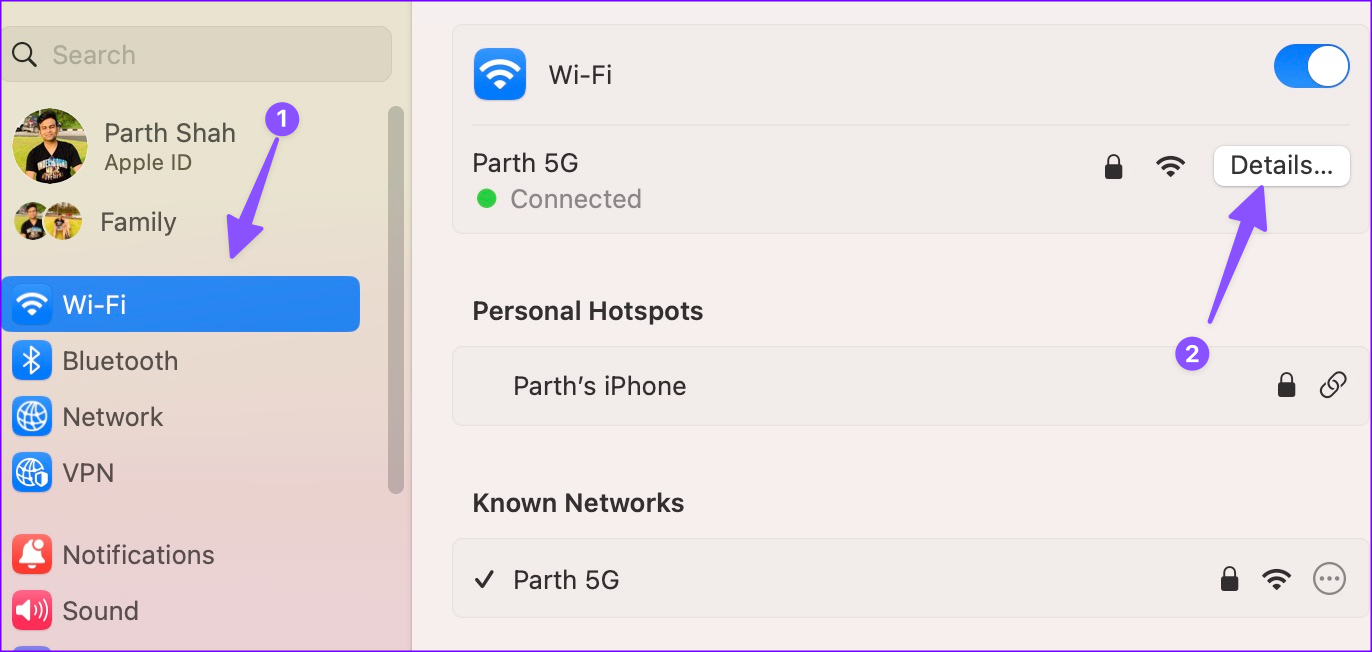
Step 3: Disable the ‘ Limit IP address tracking ‘ toggle or iCloud Private Relay (for older macOS)
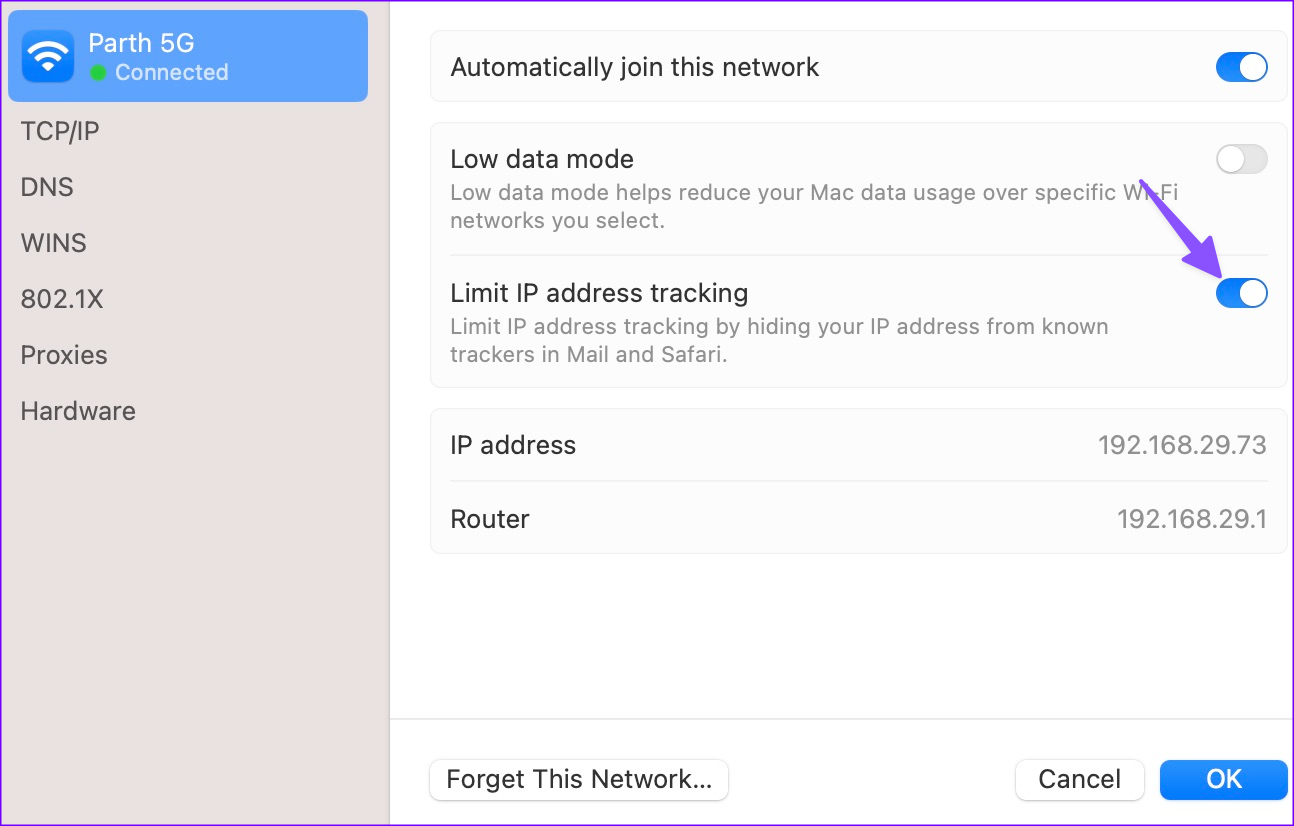
Notably, some websites may not be properly optimized for Safari on Mac. You can temporarily switch to Google Chrome and check if it’s working
Was this helpful?
Last updated on 20 June, 2024
The above article may contain affiliate links which help support Guiding Tech. However, it does not affect our editorial integrity. The content remains unbiased and authentic.
None of these worked for me I would love to play EverQuest again but can’t find the server
How do I find dns on ventura?
None of these worked for me. I can’t disable ad blockers on the website that I’m unable to access because the lock doesn’t come up in the search bar. Right clicking simply asks copy or paste but that’s it
My result is exactly the same as Bryana’s 🙁
Leave a Reply Cancel reply
Your email address will not be published. Required fields are marked *
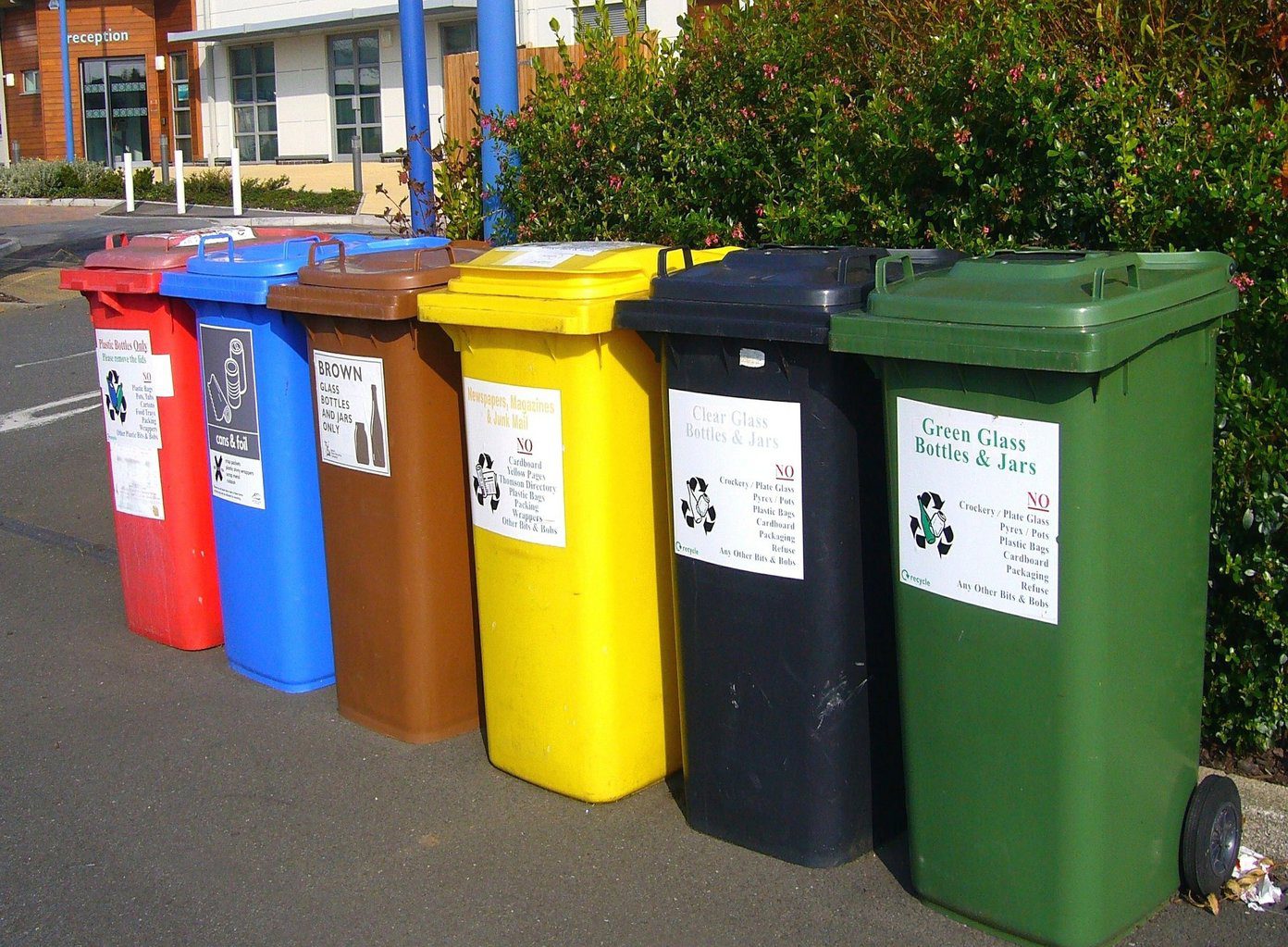
The article above may contain affiliate links which help support Guiding Tech. The content remains unbiased and authentic and will never affect our editorial integrity.
DID YOU KNOW
More in Mac

3 Ways to Schedule Shutdown Timer on Mac

4 Fixes for Macbook Not Outputting in High Refresh Rate to External Monitor
Join the newsletter.
Get Guiding Tech articles delivered to your inbox.
How to Fix the “Safari Can’t Establish a Secure Connection to the Server” Error (6 Solutions)
When you’re browsing the web, the last thing you want is to run into an error message. If you’re a macOS user, one of the issues you might come across is: “Safari can’t establish a secure connection to the server” error.
While it may seem intimidating at first, this is a relatively common problem with a few simple solutions. All it usually takes is a little bit of troubleshooting before you’re able to effectively (and safely) access the site.
This post will explain what this Safari error message is and some of its common causes. Then we’ll provide you with six easy ways to fix the problem.
Let’s get started!
What’s the “Safari Can’t Establish a Secure Connection to the Server” Error?
Some of the best features of Mac devices are their built-in security settings . Apple has created an experience designed to keep you and your device safe, especially while browsing the web.
This is why its native browser, Safari, will sometimes prevent you from accessing a website that it doesn’t deem as secure. When this happens, you’ll likely see an error message that says, “Safari can’t establish a secure connection to the server.”
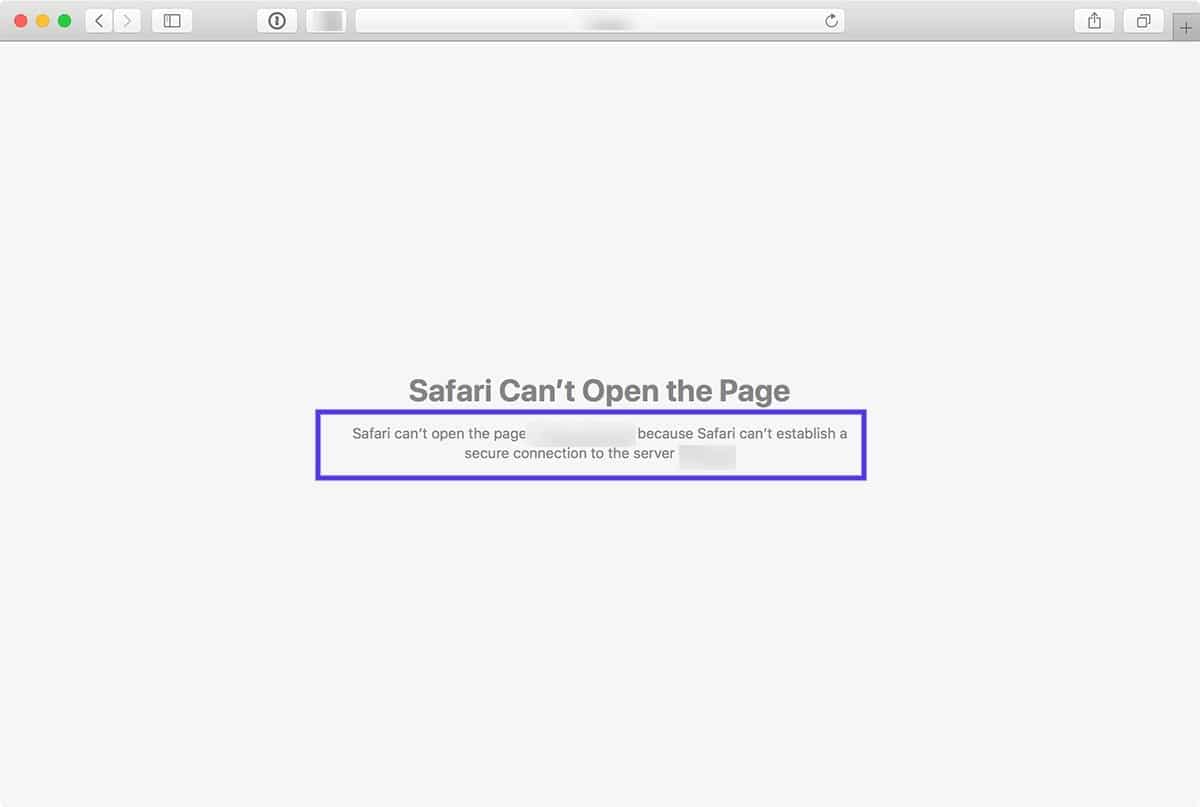
The specific wording of the error may vary. For example, as you can see in the image above, you might also come across a notification letting you know that “Safari Can’t Open the Page.”
In a nutshell, this error message means that the browser doesn’t trust the encrypted data on the site. Alternatively, Safari could not access and verify the information successfully. For example, this might happen when a site doesn’t have a Secure Sockets Layer (SSL) certificate properly configured.
Using SSL and Secure Shell Access (SSH) is critical for websites today. This is especially true when you have a site that handles sensitive customer data, such as a WooCommerce store .
However, if you know the site that you’re accessing is secure, the problem is likely with Safari. Many people experience this error message when accessing popular websites, such as Facebook, YouTube, and Google.
What Causes “Safari Can’t Establish a Secure Connection to the Server” Error?
There are many different reasons you might be seeing this error message. As we mentioned, the main explanation is that Safari can’t verify that the website you’re trying to access is secure enough to protect your data.
However, it’s essential to understand why it deems the site unsecured to know how to resolve it. Sometimes, you may not know what the culprit is until you try troubleshooting it.
With that said, there are a handful of common causes behind the “Safari can’t establish a secure connection” message. For example, the issue may be attributed to a third-party extension or add-on you have installed on your browser. It could be something as simple as having outdated cache data. However, it could be a more complicated problem, such as the Internet Protocol (IP) version you’re using.
How To Fix the “Safari Can’t Establish a Secure Connection to the Server” Error (6 Solutions)
Now that we understand more about the issue and its potential causes, it’s time to look at how to fix it. Below are six solutions you can use to resolve the “Safari can’t establish a secure connection” error.
1. Clear Your Browser Data
When you visit websites, Safari will store some of the information in the browser cache and cookies. If this data includes outdated details relating to the site’s SSL or encryption , it can be the reason you see the error message.
Therefore, one of the quickest and simplest methods you can use to resolve this error is to clear your browser cache . To do that in Safari, you can start by opening up the browser.
Next, click on Preferences > Privacy , then select Remove All Website Data .
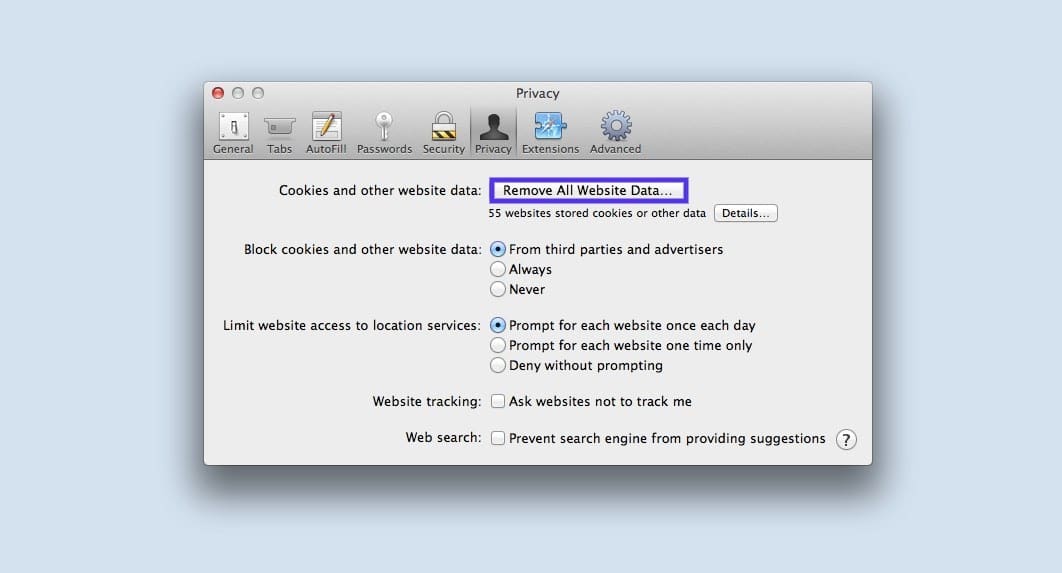
After it finishes loading (it may take a minute or two), you can decide which websites to clear the data from. For example, you can select them all or simply the one you’re having trouble accessing.
When done, click on the Done button at the bottom of the screen.
Next, to clear your entire browsing history, you can navigate to Safari > History > Clear History .
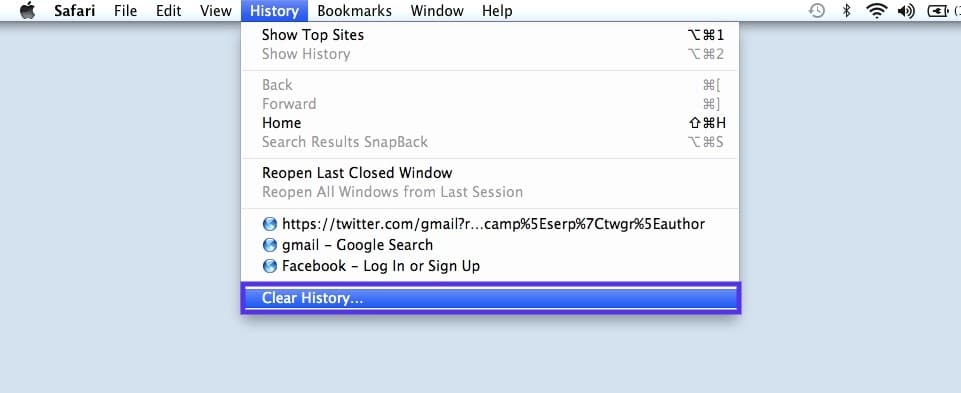
When finished, try revisiting the site that was showing the error message. If it’s still there, you can move on to the next solution.
2. Check Your Device’s Date and Time
While it may seem odd, sometimes having the incorrect date and time on your Mac device can cause some issues within Safari. Therefore, it’s essential to ensure that yours is set to the correct time zone and date.
To get started, you can click on the Apple icon, then navigate to System Preferences > Date & Time .
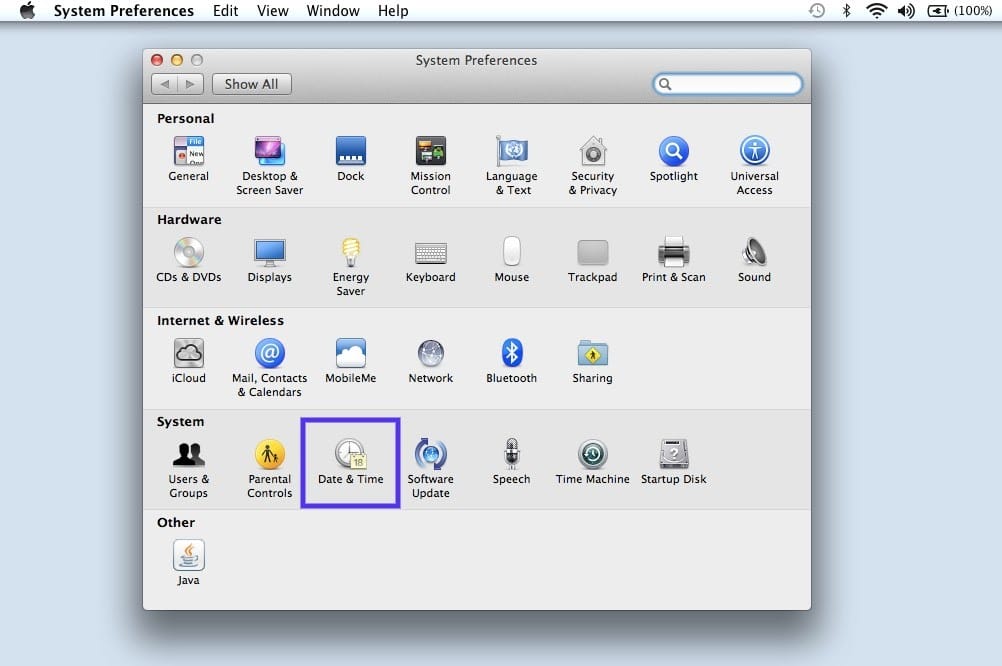
From here, you can verify that you’re using the right date and time.
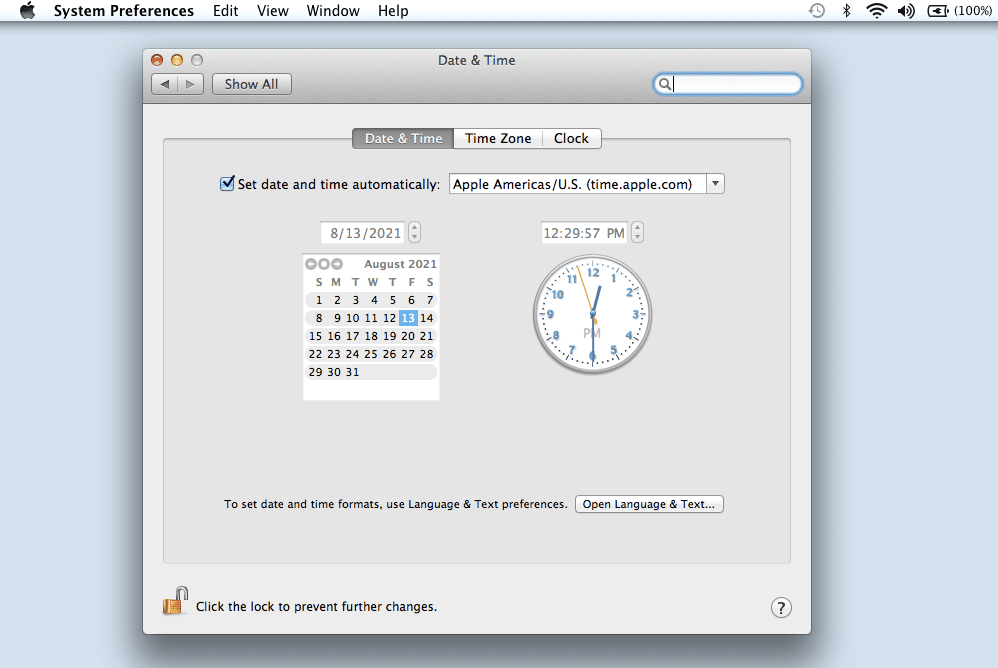
Under the Time Zone tab, you can also enable your device to sync to your current location automatically. When you’re done, you can exit the window and try re-accessing the site.
3. Change Your DNS Settings
If the error is still there, you might want to check out your Domain Name Server (DNS) settings. In a nutshell, your DNS acts like a phonebook that allows devices and sites to reach each other. Safari uses your DNS settings to connect to websites.
If there are issues with your DNS settings, it might be why you see the “Safari can’t establish a secure connection to the server” message. To see if this is the case (and resolve it), you can try changing your DNS addresses. For example, you could use Google’s Public DNS.
To get started, browse to Apple > System Preferences > Network .
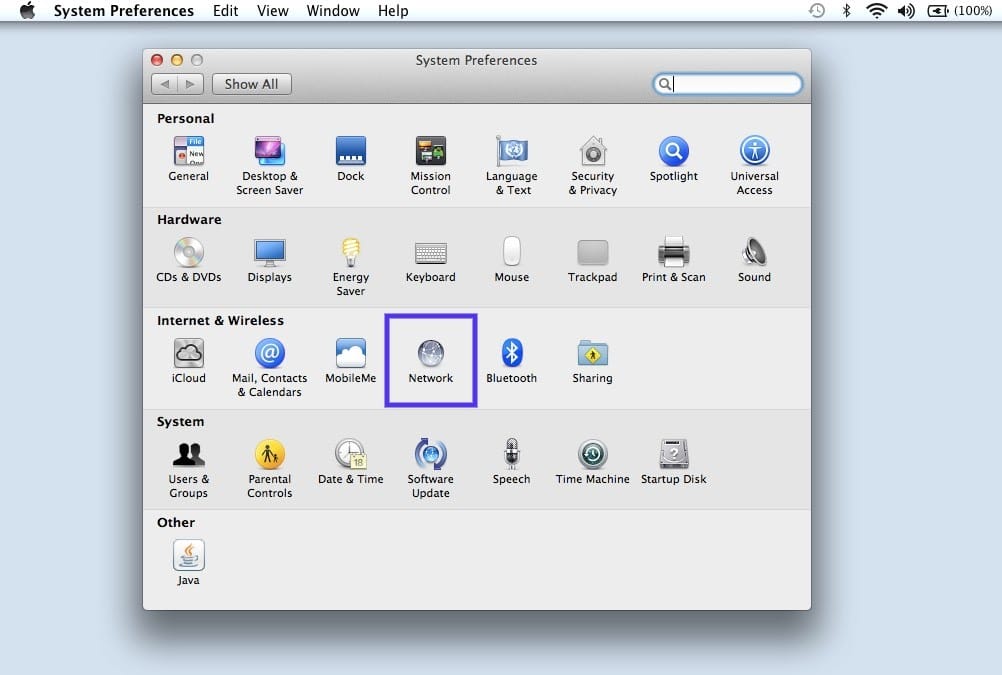
From this window, select your connection, then click on the Advanced tab, followed by DNS . Next, click on the (+) icon next to IPv4 or IPv6 addresses .
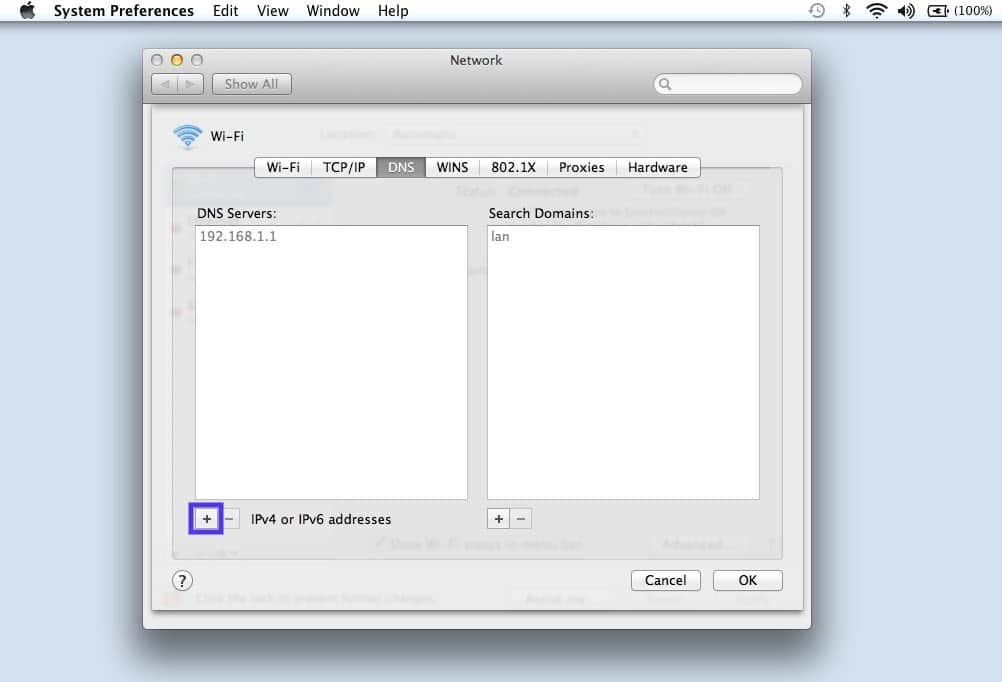
Then you can enter the new DNS IP addresses. For example, if you want to use Google’s Public DNS, you can enter “8.8.8.8” and “8.8.4.4”.
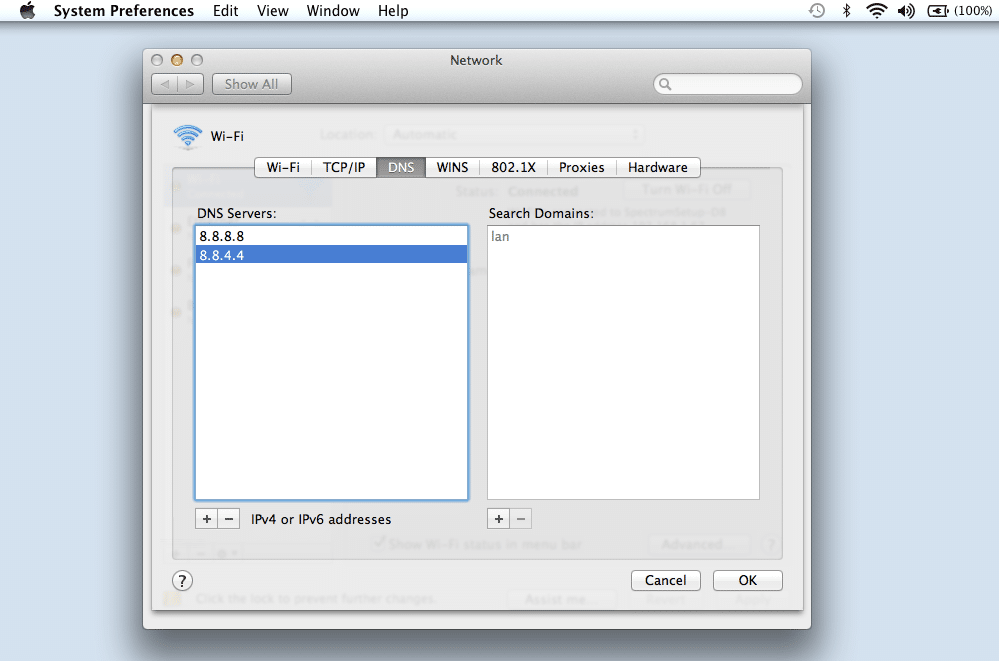
When you’re finished, click on the OK button. Recheck the website to see if this process removed the error message.
4. Uninstall or Disable Your Browser Extensions
As we mentioned earlier, an extension or add-on in your browser may be conflicting with Safari’s ability to connect to a site securely. Sometimes, this is common with anti-virus programs and security-related extensions.
Therefore, the next step is to try deactivating all your browser extensions. To do this, you can open Safari, then navigate to Preferences and click on the Extensions tab.

A list of your extensions will display in the left column. You can click on the checkmark next to the add-on name to disable it.
Once you’re done, try revisiting the site. If this solves the problem, you’ll need to pinpoint which extension was to blame. You can do this by systematically enabling each add-on and visiting the site after each time.
5. Disable IPv6
Internet Protocol (IP) is a set of rules that controls how data moves across the internet. IPv6 is a newer protocol version. However, some websites still use the older version, IPv4. If this is the case, it might be why you’re running into the “Safari can’t establish a secure connection” message.
Therefore, you can try disabling IPv6 on your network. To do so, navigate to System Preferences > Network once again, then click on your network connection, followed by the Advanced button.
Under the TC P/IP tab, click on the dropdown menu under Configure IPv6 and select Manually .

When you’re done, click on the OK button. This should resolve the issue if IPv6 were the problem. If not, there’s one last solution you can try.
6. Make Sure Keychain Trusts the Certificate
Earlier, we mentioned how Safari could sometimes present the connection error message if it cannot verify the validity of the site’s SSL certificate. If this is the case, you can bypass the issue by configuring settings in your macOS’s Keychain Access app.
Keychain Access is the application that stores your passwords , account details, and application certificates. It keeps your data secure and can control which sites are trusted by your device. As such, you can tell it to accept a site’s SSL certificate moving forward.
To do this, you can go to the website showing the error message, then click on the lock icon to the left of the address bar, followed by View/Show Certificate > Details .
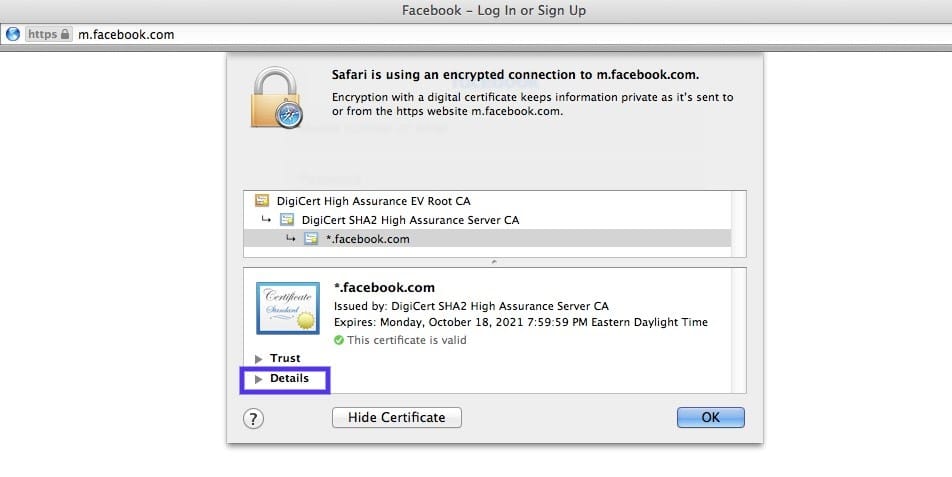
With the Details panel expanded, click Control + Space Bar . A Spotlight Search bar will appear in the top right-hand corner of your screen. Enter “Keychain” in the search field.
Next, on the left, click on System Roots . Search for the website’s certificate. Once you locate it, go to the Trust section. Then click on the dropdown menu next to When using this certificate section and select Always trust :
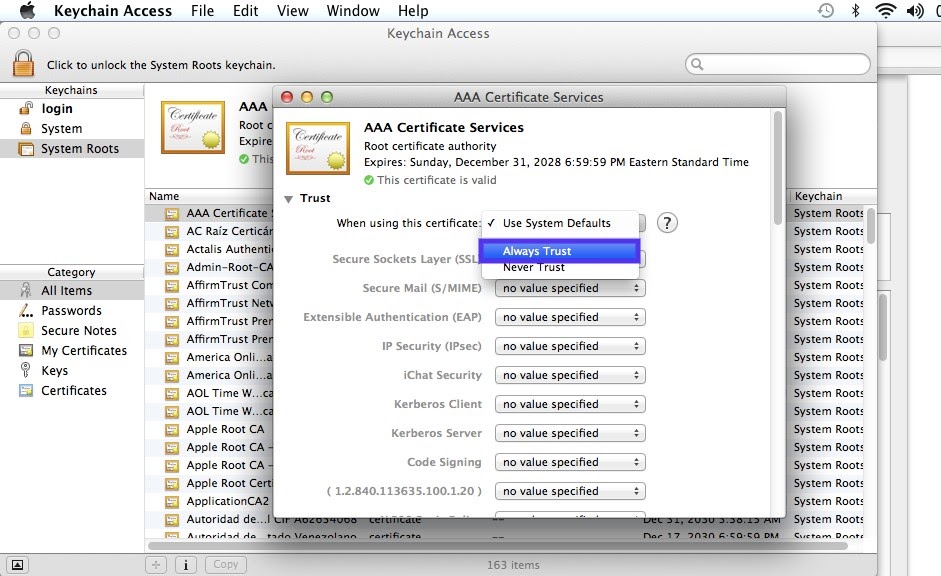
That’s it! You should now be able to access the site successfully.
Trying to access a website only to be met with an error message can be highly frustrating. While Safari is simply trying to keep your data protected, sometimes it can get misconfigured. In this case, the browser may unnecessarily present a security notification such as “Safari can’t establish a secure connection.”
There are six methods you can use to fix this issue when it happens:
- Clear your browser data, including the cache and cookies.
- Check your device’s data and time.
- Change your DNS settings.
- Uninstall or disable your browser extensions and add-ons.
- Disable IPv6.
- Make sure Keychain trusts the SSL certificate.
Do you have any questions about fixing the Safari secure connection issue? Let us know in the comments section below!
Content & Marketing Editor at Kinsta, WordPress Web Developer, and Content Writer. Outside of all things WordPress, I enjoy the beach, golf, and movies. I also have tall people problems ;).
Related Articles and Topics

Powerful Managed WordPress Hosting

DuckDuckGo Review: The Privacy-Focused Search Engine
- Website Security
- Web Development
Tried as much of this as possible, and Safari still doesn’t work. Couldn’t try some things, because I’m running it on a PC, and not on a Mac.
However, I am able to access all sites with FireFox, so teh problem does seem to be with Safari. Too bad.
Thank you so much!!! My date was wrong and it fixed the issue thank u ❤️👍
I tried all six of the fixes you offered. All seemed to work – except I did not fully grasp the extensions one. Also cannot get to the lock on the website I’m trying to open (gov.uk) because that website won’t open so no lock is shown.
Fixing date and time worked for me
Great information. I went through every step and got to the SSl certificate section. There is no certificate for the site I’m attempting to visit. Safari will not allow me to visit many sites. So it isn’t just the one site.
Leave a Reply Cancel reply
By submitting this form: You agree to the processing of the submitted personal data in accordance with Kinsta's Privacy Policy , including the transfer of data to the United States.
You also agree to receive information from Kinsta related to our services, events, and promotions. You may unsubscribe at any time by following the instructions in the communications received.
Plug into Innovation with PlugTechy
5 Possible Reasons Safari Can’t Find Server and How to Fix It?
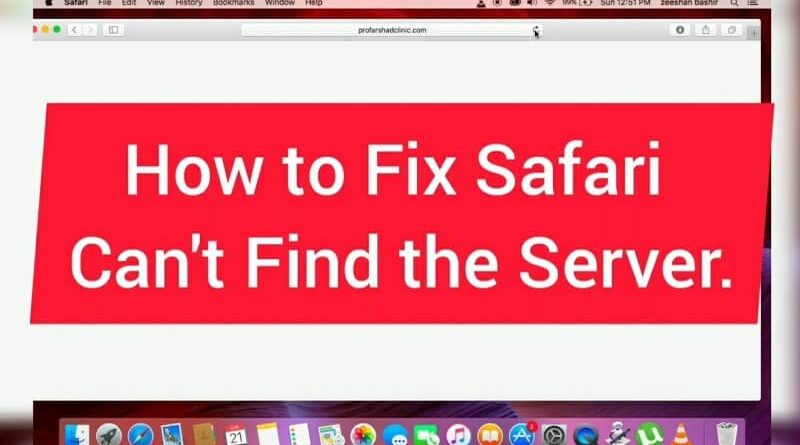
Table of Contents
Have you ever tried to surf the internet and received the annoying notice “Safari can’t find server”? It can be extremely annoying when you’re conducting crucial research or trying to access a website and encountering this error. But fear not—there are fixes for this widespread problem.
Apple’s Safari creation boasts impressively rapid responsiveness and an easygoing design flare. Although it may seem flawless, it faces challenges with all software. Frequently encountered by Safari users, the error message implies the absence of a server.
On encountering this error notice, users receive salient information about insufficient server presence.
Here, you may find long-term solutions to overcome issues like these. Various troubleshooting strategies and fixes addressing the “Safari can’t locate server” mistake will be presented here.
We have you covered whether you use a Mac, an iPhone, or an iPad. Let’s begin resolving this problem so you can bid farewell to the aggravation of being unable to access your favorite websites.
5 Possible Reasons Behind This Problem
1. poor internet connection.
The foundation of any successful web browsing experience is a stable internet connection. Your internet connection should be checked first if Safari has trouble locating the server. It can be sluggish or sporadic, which would make connecting to the server for the website difficult.
2. DNS Server Issues
Domain Name System (DNS) servers are crucial in translating human-readable website addresses into IP addresses that computers can understand. Due to DNS server issues, Safari may occasionally have trouble locating the server.
To resolve this, consider switching to a more dependable DNS server configuration, such as Google’s DNS or OpenDNS.
3. Firewall or virus protection software
Your computer must have a firewall and antivirus software to be protected from online dangers. However, they occasionally interfere with reputable website connections, preventing Safari from locating the server.
To resolve this, check your firewall and antivirus settings to ensure they are not blocking Safari. You may need to create exceptions for Safari or temporarily disable these security features to test if they are the cause.
4. Outdated Browser
Outdated web browsers and additional software may give rise to various issues if updating your browser is necessary due to Safari’s inability to find the server. Developers frequently release updates to fix issues and enhance website compatibility.
Updating Safari can resolve server connection problems and improve your browsing experience.
5. Incorrect URL or Typo
Sometimes, the simplest explanation is the correct one. Safari may need help finding the server because you entered an incorrect URL or made a typo. Verify the website address again in the address bar to be sure it is correct.
Because URLs are case-sensitive, be particularly careful with your spelling and capitalization. Any URL mistakes should be fixed to remedy the problem.
For more detailed information, watch the video below.
Safari Troubleshooting Steps
1. check your internet connection.
The most basic but often overlooked solution is to ensure your internet connection is active and stable. This error can simply be a result of a weak or interrupted connection. Try loading other websites or using different devices to confirm if it’s a network issue.
2. Clear Safari’s Cache and Cookies
Sometimes, cached data and cookies can cause conflicts with website loading. To fix this, navigate to Safari’s settings, find the “Clear History and Website Data” option, and clear your browsing history, cookies, and cached data.
3. Disable VPN and Proxy Settings
A VPN or proxy server may prevent Safari from connecting to the server if you use one. Disable these services momentarily, then try refreshing the website. If it works, consider reconfiguring your VPN or proxy settings.
4. Check DNS Settings
In terms of domain name system (DNS) settings within your web browser, there may be consequences for server location detection. Update your domain name system (DNS) settings with a trustworthy and fast DNS provider like Google DNS or OpenDNS.
This frequently helps to fix the probl e m.
5. Disable Browser Extensions
Browser extensions can sometimes cause conflicts and prevent websites from loading correctly. Try disabling your extensions individually to identify if any of them are the culprit. If you find the problematic extension, either update it or uninstall it.
6. Update Safari
Outdated browser versions may have bugs that cause server-related errors . To update Safari, follow these steps:
First, look for updates
Go to System Preferences > Software Update from the Apple Menu.
Update Safari
To install a Safari update, click “Update Now” if one is available.
Not alarming, Safari might need help finding the server on occasion. Following these 6 procedures guarantees simpler issue fixing and heightened online navigation fluency.
Q1: Why does Safari sometimes fail to find the server?
This issue can occur due to various reasons, including network problems, cached data conflicts, VPN settings, DNS issues, or problematic browser extensions.
Q2: How do I know if it’s a network problem causing the error?
Try accessing other websites or using different devices on the same network. If they work fine, it’s likely not a network issue.
Q3: Will another browser resolve Safari’s error?
Feel free to give any other browsers (such as Google Chrome & Mozilla Firefox) a whirl; they might just grant you temporary entry.
Q4: Explain the basics about DNS – perhaps you could enlighten me on adjustments, too?
Web address translations occur through DNS settings. Amending your network settings by modifying the DNS server address to more dependable choices, especially Google DNS (8.8.8.8), might help stabilize your online activities for better performance.
Q5: Is it safe to clear Safari’s cache and cookies?
It’s safe to clear your browsing history, cookies, and cached data in Safari. However, remember that you’ll lose saved passwords and website preferences.
- ← Troubleshooting Dev Error 11588: 5 Solutions You Should Try
- Check Wireless Earbuds thesparkshop.in:product/earbuds-for-gaming-low-latency-gaming-wireless-bluetooth-earbuds →
You May Also Like

The Ultimate Quad Air Drone Reviews: Find the Perfect Flying Companion for You

Quick and Effortless: How to Cancel your OnlyFans Subscription And Get Money back

Don’t Pay Anymore: Learn How to Cancel Paramount Plus Subscription Today
Looks like no one’s replied in a while. To start the conversation again, simply ask a new question.
Safari can't connect to the server on Mac
Safari can't connect to the server on my MacBook Pro. It will connect to apple.com, google.com, and a few other select websites. However, I'm unable to visit the majority of the websites I visit on a frequent basis. This problem does not exist on my iPad Pro.
Your thoughts?
I have already followed the following suggestion:
- It may suggest ways to solve the problem or include information you need to solve it.
- Make sure you’re using the correct address for the webpage.
- If you copied and pasted the address, make sure it doesn’t have extra characters or missing characters at the beginning or end.
- If the website requires a VPN connection, make sure it’s functioning properly.
- See Connect your Mac to a VPN .
- Try entering /index.html or /index.htm at the end of the address.
- Choose View > Reload Page.
- If the page still won’t open, quit Safari, reopen it, then try again.
- Try again at a different time.
- The website server may be busy, or the website may be unavailable temporarily.
- Contact your network administrator for help.
- If you connect to the internet using a corporate or enterprise network, the network may have a firewall that prevents you from opening the webpage.
- If your computer or network is protected by a firewall, you may need to specify proxy servers to access some internet sites.
- See Set up a proxy server using Safari .
- Contact the website’s owner to find out if the web server has a problem, or if the website is incompatible with Safari.
- For example, Safari can’t open a website that uses a protocol other than http or https.
- Use the latest version of Safari. See Keep your Mac up to date .
- The page might be blocked by a Content Blocker you have installed.
MacBook Pro 15″, macOS 10.15
Posted on Sep 30, 2020 9:38 PM
Posted on Sep 30, 2020 9:56 PM
" Safari can't connect to the server on Mac "
Some Thoughts:
- Restart Mac
- Create and try a different Administrator user
- Boot in to Safe Mode (hold down shift upon boot)
- Reset your SMC and your NVRAM
- Clear History and Cache
Similar questions
- Safari not opening Any Web Sites Each time any web site is put into Safari a message comes up Reload Web Page and despite quitting Safari and reloading, the same thing happens. The computer is connected to wi-fi network ok. Can anyone help please. 465 1
- Safari Can’t Open The Page Safari can’t open the page “https://www.youtube.com/results?search_query=violet+grohl” because the server where this page is located isn’t responding. I get the same error with every page I try to open. This has just started in the last 30 minutes with my MacBook Air. I’ve never had this problem before. All 3 iPads and 2 iPhones still work with no issue. I’ve shut down the computer and router, but nothing helps. Thanks. Misha [Personal Information Edited by Moderator] 386 1
- Safari can't open the page. The error is: " The operation couldn't be completed. Invalid Argument" (NSPOSIXErrorDomain:22) As I am in China, sometimes I have to use VPN to access Facebook and Youtube. Suddenly my Safari stopped working saying "Safari can't open the page. The error is: The operation couldn't be completed. Invalid Argument" (NSPOSIXErrorDomain:22). My Google Chrome is still working. How can I solve the problem? Thanks in Advance. Korban 935 3
Loading page content
Page content loaded
Sep 30, 2020 9:56 PM in response to mnau
How to fix Safari can’t find the Server issue [11 Methods]

Web browsers are important tools that help you browse the internet. Every device out there has its own web browser – whether it’s preinstalled or your personal favorite one. With regards to Apple devices including Macs, the default web browser in these devices is Safari. Safari is indeed a very good web browser as it works flawlessly. However, there can be times when it might not work right. One of the most common issues that the Safari Web browser runs into is when it can’t find the server. If you are someone that has an Apple device and uses Safari as your main web browser, this is the guide for you to solve this issue.
Now, when Safari popup this message, there can be many reasons as to why it’s showing you this message. The bad part is you won’t be able to browse the particular web page. Well, the good part about this is the fact that you can easily fix this issue. You can read through this guide to know how you can solve the issue when Safari says Safari Can’t find the server.
Fix Safari Can’t Find the Server Issue
There are multiple ways you can try to fix the issue when Safari Can’t find the Server message. So, feel free to try any of the methods that have been mentioned in order to solve this issue.
Restart your Device
The most simple and popular troubleshooting method that is universally followed by everyone is to restart the device. Simply press and hold the volume and power button to slide across and restart the device. Older devices can press and hold the power button followed by dragging the slider to restart.

Check Your Internet Connections
Whether you are on mobile data or on WiFi, internet connections at times can be spotty. So, if you feel like a particular web page does not load and Safari throws up the Can’t find server message, it might be best to check your internet connectivity. Switch from mobile data to wifi or vice versa and see if the problem persists. If so, you might have to try out the next solution.
Ensure that the link is correct
If you might have been in a hurry to type in the website link or copied the link incorrectly, there are high chances that Safari would simply display the cant reach server message. So, always check and even, double-check the links for any spelling mistakes. It would also be advisable to check for the links to be properly formatted, as incorrectly formatted links will refuse to open.
Reload the Webpage
Now, this is similar to the first troubleshooting method that we mentioned. Well, as we said earlier, if you have a spotty internet connection, there are high chances of your webpage not loading at all because of poor coverage or super slow internet speeds. A quick reload of the webpage should help fix this issue.
Use a VPN Service
While there are a ton of websites for you to browse through using Safari, there can be a possibility of a few websites that have been blocked by your carrier or your ISP. These websites could be blocked either for reasons or simply just blocked out of the blue. If it is a website that you would regularly visit and get access to, it would be advisable to install a VPN and then visit the particular web page. If it does open, it could be that your website has been blocked and the only way to access it is by using a VPN.
Clear Safari Cache and Data
Just like a number of apps out there, Safari relies on the cache files and data that has been stored by it to load up the websites that you frequently visit. Sometimes, there could be a problem with the cache files which contributes to Safari displaying the Can’t Connect to Server message. Clearing the cache files and data is a troubleshooting method you can follow to fix this issue.
Do note that when you clear the cache and files, you will lose all data that is stored in Safari. This will include your history, saved passwords, and bookmarks. You will be able to restore the data provided you sign in with the same account that was previously used with Safari. You can follow the steps mentioned below to clear the cache files and data from Safari.

- Open the Settings app on your device.
- Scroll and select Safari from the list.
- With the Safari page open, all you need to do is tap on Clear History and Website Data.
- All the data and cache files will now be cleared from your Web Browser.
- Simply launch Safari and visit the website that you weren’t able to visit earlier.
- You should now be able to load the website and browse through it without any problems.
Check your DNS Settings
There are many reasons why you might want to change the DNS settings on your device. It could either be for faster connections, blocking unwanted content or just to have better protection. If you feel like the DNS settings that have been set up automatically arent perfect and you keep getting the Can’t connect to server message on Safari, it might be time to change the DNS Settings on your device. Follow these steps.

- Open the Settings app.
- Now, tap on WiFi.
- You will now see all the available wifi networks as well as the WiFi Network that you are currently connected to.
- Next to the network that you are connected to, you will see a small icon. Tap on the icon.
- You should see an option that says Configure DNS. Tap on it.
- If the DNS is set to Automatic, tap on Manual.
- Tap on the Add Server option.
- Over here you will be able to enter in any valid DNS that is publicly available.
- Or, you can simply enter 8.8.4.4 or 8.8.8.8 which is DNS Server for Google.
- Tap on the Save button and reload the web page on Safari. You should now be able to launch the webpage without the error message popping up.
Reset Network Settings
If you feel like some of the network setting that you might have made changes to are incorrect or you simply want to revert back to the default settings, Resetting your network settings should work perfectly.

- Launch the Settings app on your Apple device.
- Now, tap on General.
- Scroll and you should see an option that says Reset Network Settings.
- Tap on it. It will now ask if you confirm resetting your network settings. Simply tap on Confirm and your network settings have been reset to default.
- Now, connect your device to the internet and reload the webpage that wouldn’t load on Safari.
- You should now not have any issues or problems whatsoever.
Check for Updates
Updating your device software to the latest available version should help fix any bugs or issues with the device itself as well as the apps including Safari. Since Safari is a preinstalled app, it usually gets updated along with the OS. Here is how you can check for updates on your device.

- Open Settings on your iOS device.
- And finally, tap on Software Update.
- If there are any updates available tap on Download and install. The updates should now be downloaded and installed onto your device.
- Now, check and reload the web page on Safari. It should now be working as expected.
Switch to another browser
If you feel like none of the above troubleshooting methods worked, it would be time to switch to a better web browser. You can choose between Microsoft Edge , Mozilla Firefox , or even Google Chrome . If the particular websites load up correctly in other web browsers, then you already know what you should be switching to.
Reset your device
If for any reason whatsoever you only prefer to use Safari as your go-to web browser, it might be worth trying to perform a factory reset on your device to see if the issue repairs itself.
- Open the Settings app and tap on General.
- Now, select the transfer or Reset iPhone option.
- And finally, choose Reset.
- All you need to do now is tap on Erase All Content.
- Your iPhone will now begin to rest itself. The reset process can take some time.
- Once the rest has been completed, complete the one-time setup and finally launch Safari.
- You should now be able to use Safari without any issues and neither be seeing the Can’t connect to server message.
These are the various troubleshooting methods that you can follow to solve the issue with Safari displaying the Can’t connect to server message. We hope at least one of the methods that have been mentioned above helps you solve the issue. If you have any queries or questions, feel free to leave them in the comments below.
Related Articles:
- How to get Apple Watch widget on iPhone
- Download iOS 16 Wallpapers
- Download macOS Ventura Wallpapers

Joshua D'souza
Leave a Comment Cancel reply
- iPhone Data Recovery
- Android Data Recovery
- iPhone Passcode Unlocker
- iOS System Recovery
- iOS Location Changer
- Free iOS Backup & Restore
- Excel Password Recovery

- Data Recovery iPhone Data Recovery Android Data Recovery
- Unlock & Repair iPhone Passcode Unlocker iOS System Recovery
- Utilities iOS Location Changer Free iOS Backup & Restore Excel Password Recovery PDF Editor

11 Tips to Fix Safari Cannot Connect to Server on iPhone
Safari is the most preferred browser for Apple users. Not only because it is the default browser of iPhone or iPad, but users also love it for its fast, reliable, and smooth performance. However, one disturbing thing you might encounter while using the browser is the " Safari cannot connect to server " error.
This error can appear because of a variety of reasons. Below, we will let you know why Safari can’t connect to the server on your iPhone and what you can do to fix this error with ease.
Why Does My Safari Says Cannot Connect to Server?
As we said above, several things can prevent the Safari browser from connecting to the server. Some of the reasons are as follows:
- Weak Internet Connection : The most common reason that prevents Safari from connecting to the server is weak internet. If your Wi-Fi or mobile data is extremely weak, Safari will fail to establish a connection to the server.
- Typos in Website Address : It also occurs when you enter a misspelled website address.
- Corrupted Data and Cache : Sometimes, the corrupted data and caches can cause conflict and prevent the browser from connecting to the server.
- Wrong DNS Server Settings : Changing the DNS settings might also cause this error.
Simple Tips When Safari Cannot Connect to Server
2.1 check internet connection.
As mentioned earlier, Safari fails to connect to the server mostly because of the issues with your internet connection. Make sure that the Wi-Fi or cellular data is turned on. Also, make sure that the Airplane mode is turned off. Another thing you can do is to restart the Wi-Fi or cellular data to fix the connection.
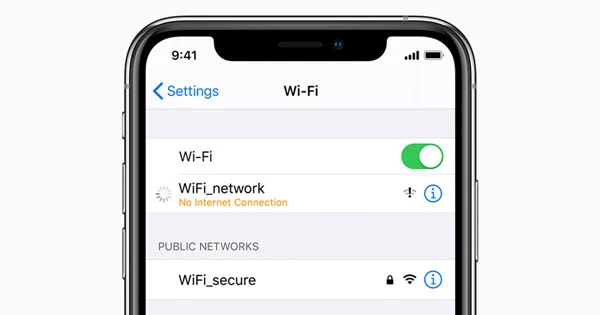
2.2 Use Correct Webpage URL
Make sure that you have entered the correct webpage address. Sometimes we forget the correct URL and enter the misspelled one. Many of us make the same mistake while trying to visit a website when we are in a hurry. This may lead to the “safari cannot connect to server” error.
2.3 Reload Your Page
When you try to load a webpage, the browser sends several requests to its server. However, sometimes the server fails to send a response immediately, and the browser fails to connect to the server, which leads to this error. Refreshing may help to solve the issue in such cases.
2.4 Clear Safari History and Data
Your browsers save website history, cache, and data to provide you with a personalized and faster browsing experience. Sometimes, the saved data conflicts or becomes corrupted, which causes the error. Cleaning these data should solve it.
Here is how to remove website cache and data on Safari browser:
- Open the browser and go to "Settings."
- Now go to "Safari" and press "Clear History and Website Data."
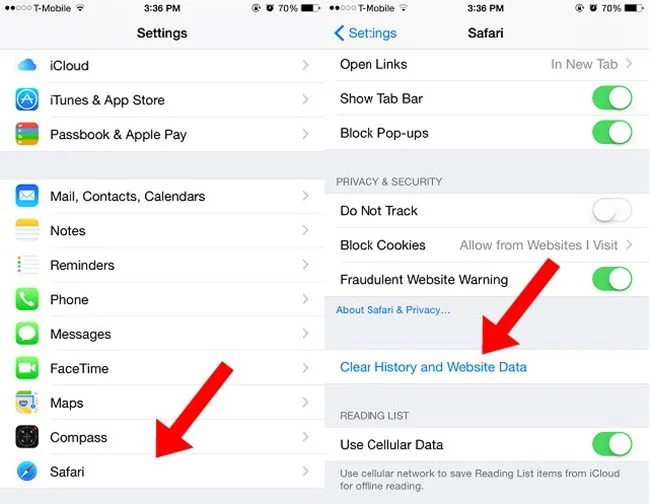
If the issue is with cache and website data, the web page should load perfectly after the cleanup.
2.5 Use IP Address
If the problem is because of the DNS issue, you can consider visiting the webpage through its IP address instead of the domain URL. Some online tools enable you to find the site's IP address. We will also let you know how to fix the DNS issue below.
2.6 Modify DNS Settings
When you visit a website by entering its URL, the DNS server you are using converts the URL to its IP address. If you are using a problematic DNS server, it may fail to convert the URL sometimes, which will cause the error.
Steps you need to follow for modifying the DNS settings are as follows:
- Open "Settings" on your iPhone and go to "Wi-Fi." Press on the "i" icon aside from the network you are connected to.
- Select “Manual” instead of “Automatic” under the “Configure DNS” option.
- Now press “Add Server” and enter 8.8.8.8 (Google’s DNS server). You are done!
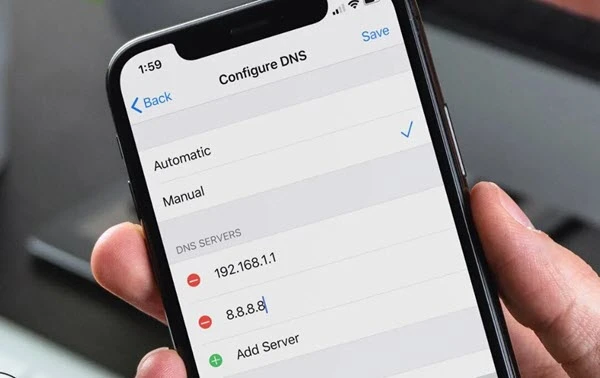
2.7 Reset Network Settings
Consider resetting the network settings if you are still encountering the issue even after trying all the solutions above. If there are any issues with the network settings, resetting should solve the error. Here is what to do:
- Go to “Settings”> “General”> “Reset”.
- Now press “Reset Network Settings” under the Reset option.
- Confirm the operation from the popup.
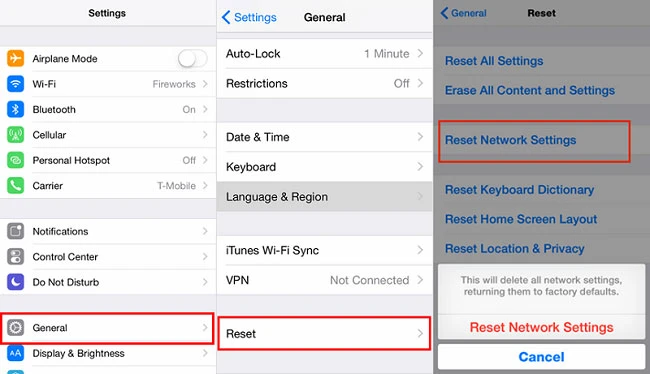
2.8 Restart iPhone
Another thing you can do is restart the iPhone. Sometimes, the Safari browser cannot connect to the server due to minor iOS system issues. Restarting the device usually solves these errors.
Here is how to restart: If you are using iPhone 8 or earlier, tap and hold the Top or Side buttons. For the newer iPhone devices, tap and hold the side button and either volume buttons. You will need to hold the button until the slider occurs for both cases.
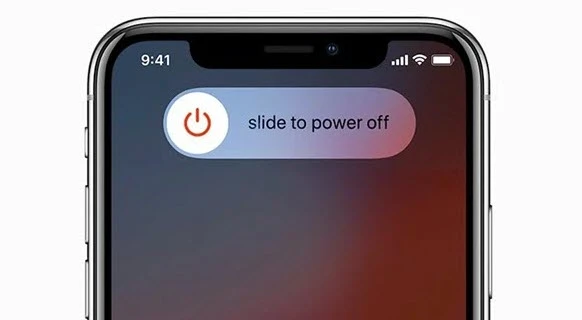
2.9 Update Your iPhone
Another simple fix you can try to solve the issue is to update your iOS version. If Safari is failing to connect to the server because of bugs in the operating system, the update should solve it. Here is how to update your iOS:
- First, open the "Settings" of your iPhone and go to "General."
- Find and press on "Software Update."
- Check for iOS updates and if available, tap “Download and Install” to complete the update.
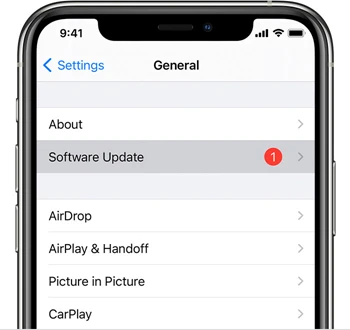
Advanced Ways If Safari Still Cannot Connect to Server
3.1 fix safari can’t connect to server without data loss.
If you cannot solve the Safari error by following the above simple methods, there might be some issues with your iPhone's system software. In such a case, tools like FoneGeek iOS System Recovery can be very beneficial. It is a powerful tool that enables you to fix more than 200+ issues in iOS devices.
Here are some features of the FoneGeek iOS System Recovery tool :
- Fix iOS issues like Safari error, iPhone black screen, boot loop, etc.
- Fix your iOS system without losing any data.
- You can downgrade the iOS version without jailbreaking.
- Compatible with all the new iOS versions and devices like iOS 16 and iPhone 14/13.
- Easy to use and ensures high success rate.
- Recommended by Filehorse , GetDroidTips , Lera Blog , Webku , TechTricksWorld and many other media sites.
Here is how to install and use the FoneGeek iOS System Recovery tool to fix the Safari cannot connect to server error:

Step 1 : Download and install FoneGeek iOS System Recovery on your Windows or Mac computer. Launch the program. Select “Standard Mode” from the app UI.
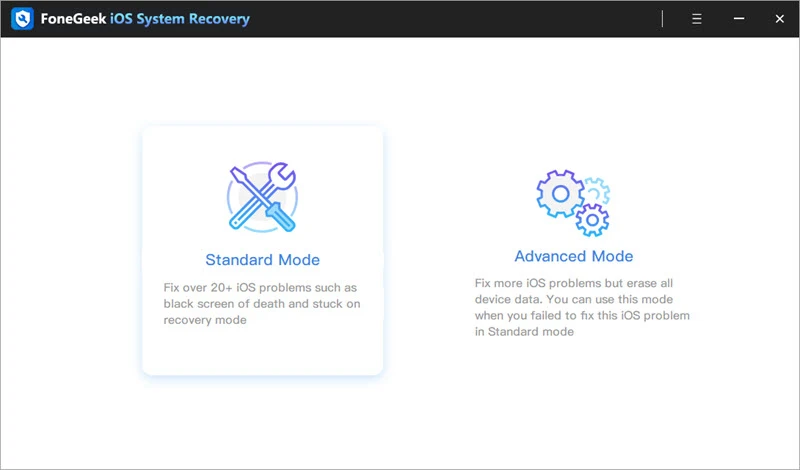
Step 2 : Connect your iPhone to the PC through a USB. If the phone is running in normal mode, unlock it and press "Trust" on the device’s screen.
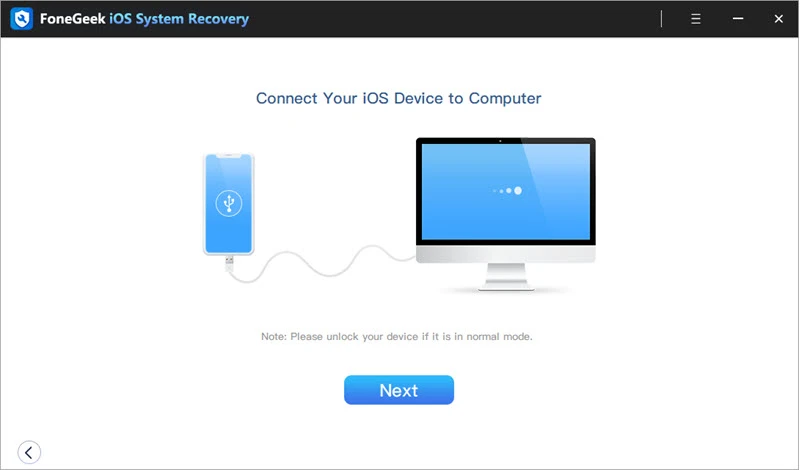
Sometimes, the tool might not be able to detect the device. In such a case, you will need to boot the device to DFU or recovery mode by following the on-screen guide.
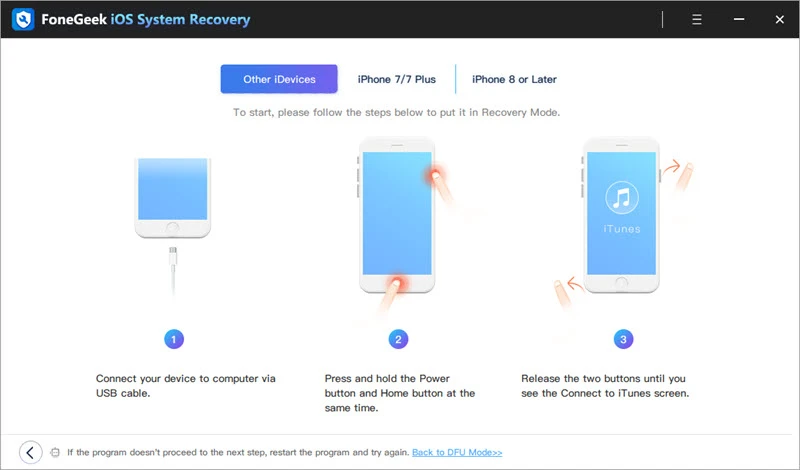
Step 3 : In the next window, you will see the model of your device and the available firmware package for it. Select the preferred version of firmware and press "Download."
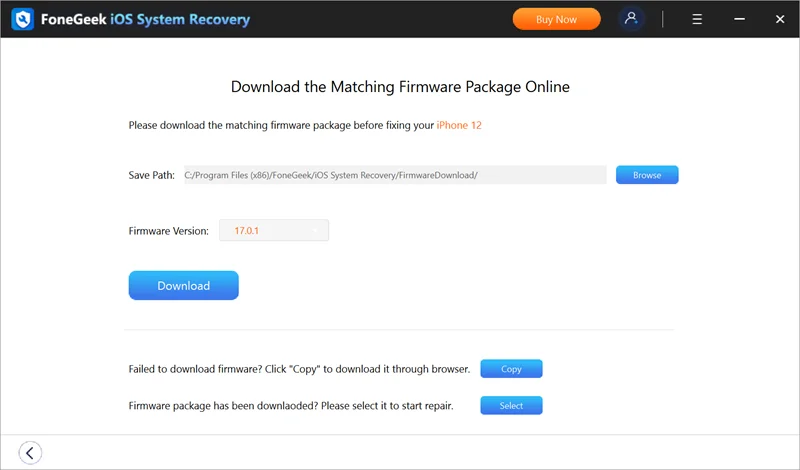
Step 4 : The download will take a while to complete. Once the firmware download extraction is completed, you will see the confirmation on the screen. Press "Fix Now" to start solving the iOS issue.
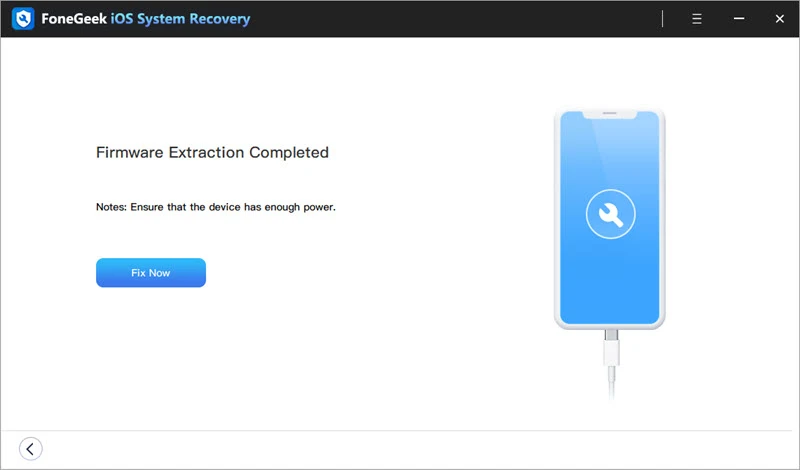
That’s it; you are done!
3.2 Restore iPhone via iTunes (Data Loss)
You can also use iTunes to solve the Safari cannot open page because server cannot be found issue, but this will erase all the data from your iPhone. Make sure to backup all the current data before restoring the device.
You need to launch the latest version of iTunes from your computer and then connect your iPhone via USB. Then you can perform the reset from the iTunes interface.
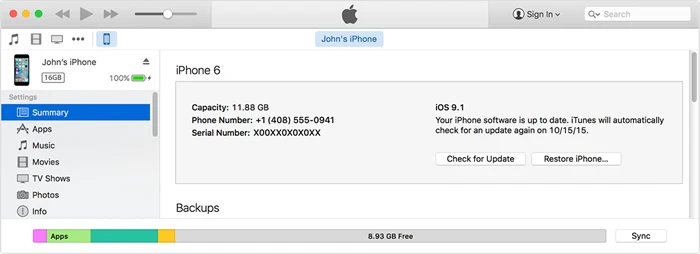
The Verdict
We know how disturbing it is when you cannot visit the preferred website because Safari cannot connect to the server. However, thanks to the methods mentioned above, now you should be able to fix the problem quickly.
If you don't want to go through the hassle of trying all the mentioned methods, we will suggest utilizing the FoneGeek iOS System Recovery tool. By using the advanced tool, you should be able to efficiently fix the browser error and any other system issues of your iPhone.
Fay J. Melton has explored the area of technology and software for more than 5 years and he is enthusiastic about helping users solve various technology issues.

Leave a Reply
Your email address will not be published. Required fields are marked *
Table of Content
- 1 Why Does My Safari Says Cannot Connect to Server?
- 2 Simple Tips When Safari Cannot Connect to Server
- 3 Advanced Ways If Safari Still Cannot Connect to Server
- Company About us Contact us Privacy Policy Refund Policy Terms of Use EULA Cookie Policy
- Star Products iPhone Data Recovery Android Data Recovery iPhone Passcode Unlocker iOS System Recovery iOS Location Changer Free iOS Backup & Restore Excel Password Recovery PDF Editor
- Support Support Store How-to Tutorials Sitemap

- Privacy Policy
- Refund Policy
- Terms of Use
- Cookie Policy
- How-to Tutorials
Copyright © 2024 FoneGeek Software Co., Ltd. All Rights Reserved
Safari Cannot Connect to Server – How to Troubleshoot This Problem?
December 10, 2021
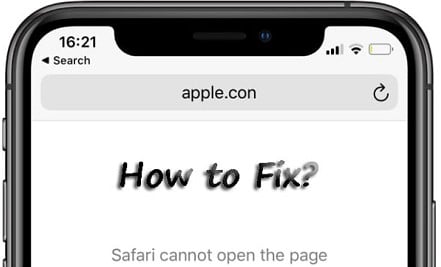
Apple users prefer Safari over other browsers because of its simple interface and fast speed. This browser’s loading speed and security wall make it stand out from the shoddy browsers that bombard you with useless ads and data threats.
But, despite being so competent and fast, Safari can also put you through some problems. Safari cannot connect to server or Safari can’t find server are two common issues you might face with this browser. The reason your iPhone or iPad Safari cannot connect can be related to the device or your internet connection; figuring it out might take time.
But luckily, this Safari cannot open the page because the server cannot be found error is not that serious – you can fix it with a few easy steps. So, if you’re struggling with Safari cannot connect to the server issue, we have got you covered.
Stick around till the end to know more about this glitch and its solution!
Table of Contents
Why Do You Face “Safari Cannot Connect to the Server” Error?
Before we proceed to solve the “safari server cannot be found” problem, it’s smart to learn why you face it. Here are the primary reasons you’re facing the Safari not connecting to the server trouble:
- Weak/Unavailable internet
- iOS bugs and glitches
- Data restrictions
- Content blockers
- Broken links
- Location-related problems
Although it’s difficult to pinpoint the exact reason every time the page reads “safari server cannot be found,” you can look into these points to decide whether a more intense repairing haul is needed.
How to Fix Your iPhone’s Safari Cannot Connect to the Server?
Now that we know what can possibly go wrong with your device’s Safari browser if it fails to connect with the server, let’s find a solution for this nuisance. No, you don’t have to take your iPhone, iPad, or Mac to an Apple outlet if its Safari cannot connect to the server; a few easy troubleshooting tips will do.
Below listed are some fast and effective solutions you can follow to use the Safari browser on your device without any interruption:
Ensure Your iPhone Has a Reliable Internet Connection
Start with the basics. Does your iPhone have a stable internet connection when you try to access a URL? If not, you’ll face the Safari cannot connect to the server problem.
1. Open your iPhone’s settings and locate the Wi-Fi/mobile data button.
2. If your phone is connected to the internet and is receiving interrupted coverage, you don’t have to do anything afterward.
3. But if the signal bar on your iPhone’s Wi-Fi icon is blinking or dull, disconnect it from the network and then reconnect it.
Once your iPhone starts receiving strong internet signals, reload the URL you were trying to access earlier and see if the issue is resolved.
Use the Correct URL While Accessing the Server
The next method you can use if your iPhone or iPad Safari cannot connect to the server is checking if the URL you’re using is correct. When we manually type a link into the browser, we tend to miss spaces or add incorrect spelling, leading to the Safari not connecting to the server problem. Therefore, make sure the link you’re trying to open is correct before moving on to another fixing method.
Reload the Browser
Reloading the Safari browser on your iPhone is another quick tip to ensure it has a strong connection to the server. If it’s been a while and Safari can’t find the server you’re trying to access, reload it. Tap the reloading icon on your screen’s top right corner and wait for a few seconds before it loads. If everything is okay with your device and the only reason Safari cannot find the server is a slow loading speed, this trick will do the job.
Disable Content Blockers on Your iPhone
If you have set some content blockers on your iPhone, they can impact your user experience with the Safari browser. Since you need to allow this browser to access most things on the internet if you wish to use it, disabling the content blockers is mandatory.
1. Open your iPhone control panel and locate the “use content blockers” toggle from its iOS menu.
2. Once the content blockers are disabled, reload the Safari browser on your device and see if it’s working fine now.
3. Clear browser cache and history of improving its speed.
4. If you regularly use the Safari browser and don’t clear its cache from your device’s history, it can get slow with time. So, if you’ve been using your device for a long time, remove the unnecessary cache and website data from it to improve its working.
5. Launch your iPhone’s control panel and find the Safari button from it.
6. Open the Safari browser menu on your device and scroll down to find the “clear cache and history” option.
7. Click it to delete the unnecessary cache and website data.
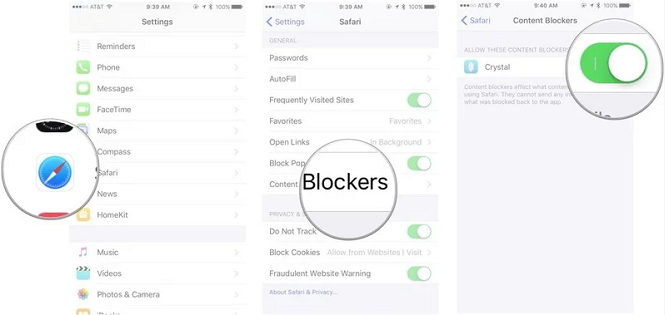
This simple step will increase your Safari browser’s speed and improve its working if everything else is okay with it.
Reset Network Settings
The next troubleshooting method on our list to fix the Safari cannot connect to the server issue is resetting the network settings. Sometimes your iPhone is connected to an internet network but still doesn’t work because of a lag in the network. That’s when resetting the network settings can help resolve the browser-related problem.
1. Open your iPhone’s settings and tap “general” from its main menu.
2. Tap the Wi-Fi/mobile network button and press the reset button.
3. Select the “reset network settings” option from your control panel’s sub-section and wait for a few seconds.
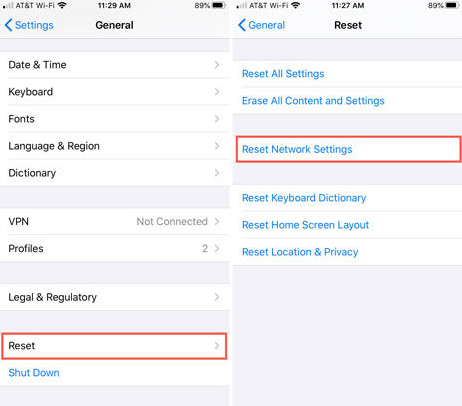
These steps will reset your iPhone’s network settings. Reconnect your phone to the internet connection and open the Safari browser again to see if it connects to the server or not.
Reset DNS Settings
Unconfigured DNS settings are the main reason the Safari browser cannot find the server. This happens when you try to access an unsafe URL, and your browser hinders your access to protect against any potential data breach.
1. Launch your iPhone’s central control panel and open the Wi-Fi menu.
2. Touch the blue icon you’ll see in front of the Wi-Fi button and launch it.
3. In the next menu, you’ll see an option saying “configure DNS,” click it.
4. You’ll be directed to another menu where you have to locate an option saying “manual,” open it.
5. Scroll to the DNS server in this menu and click the “select server” option.
6. You’ll now have to type 8.8.8.8 in the select server menu and save it to add a safe Google server to your Safari browser.
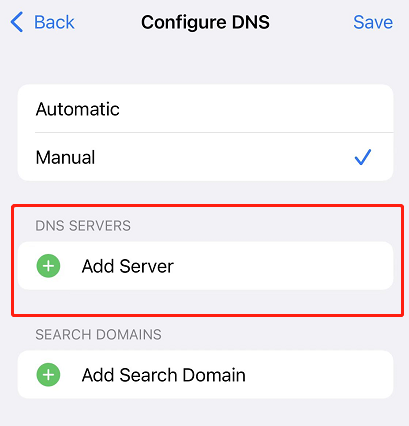
This method might seem difficult, but you can do it within a few seconds by following the on-screen instructions and redeeming your Safari browser for future use.
Update the iOS on Your iPhone
Pending iOS updates and bugs in the latest updates can affect many of your iPhone’s functions; its Safari browser is no exception. So, if you haven’t updated the iOS on your phone in a while, do so to improve its speed.
1. Launch the Settings menu on your iPhone and open its general section.
2. If you locate a pending update in the iOS/software menu, complete it to ensure your phone works fine.
But if you’re facing the Safari browser not connecting to a server after a recent iOS upgrade, you can downgrade it to revive its seamless working.
Restart Your iPhone
This is the most basic but quite helpful trick to improve an iPhone’s working. If your iPhone has a stable internet connection and nothing is wrong with its other functions, restarting it can fix its Safari browser’s performance. Disconnect your iPhone from its existing internet connection and restart it.
Once your iPhone turns on, connect it to a stable internet network and open a URL through its Safari browser to see if the issue is resolved.
Use a Third-party iPhone Repair Tool
Another effective way to fix your safari issue is using a third-party iOS repair tool like Kakasoft Fixet. It is capable of fixing all kinds of iOS issues and save your iPhone or iPad out of a lot of troubles within a few clicks. And more importantly, it won’t cause data loss to your device while fixing. Here is how to use it to fix safari not connecting to server:
Step 1: Download and Install Fixet in your computer.
You can go to Kakasoft Fixet home page to download the free version, or directly click the button below to get it:
Step 2: Choose a fixing mode.
There are two fixing modes on Fixet: Standard Mode and Advanced Mode. For all issues happened on apple products, we recommend using the standard mode first. If it does not work as expected, then you can try the Advanced Mode to have deeper troubleshooting, which will erase all your data in the device.
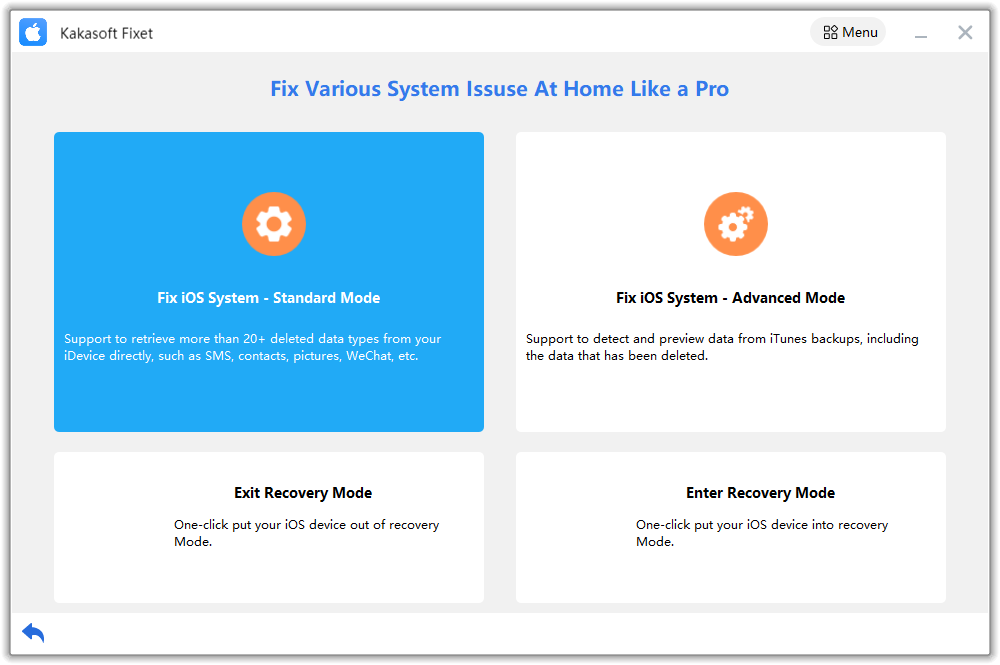
Step 3: Connect your iPhone/iPad to PC.
You can use a USB cable to connect your iPhone to your computer. If the connection is successful, Fixet will detect your device and proceed.
If it is stuck in the following page, you have to follow the step-by-step guide on the screen to fix the connection issue.
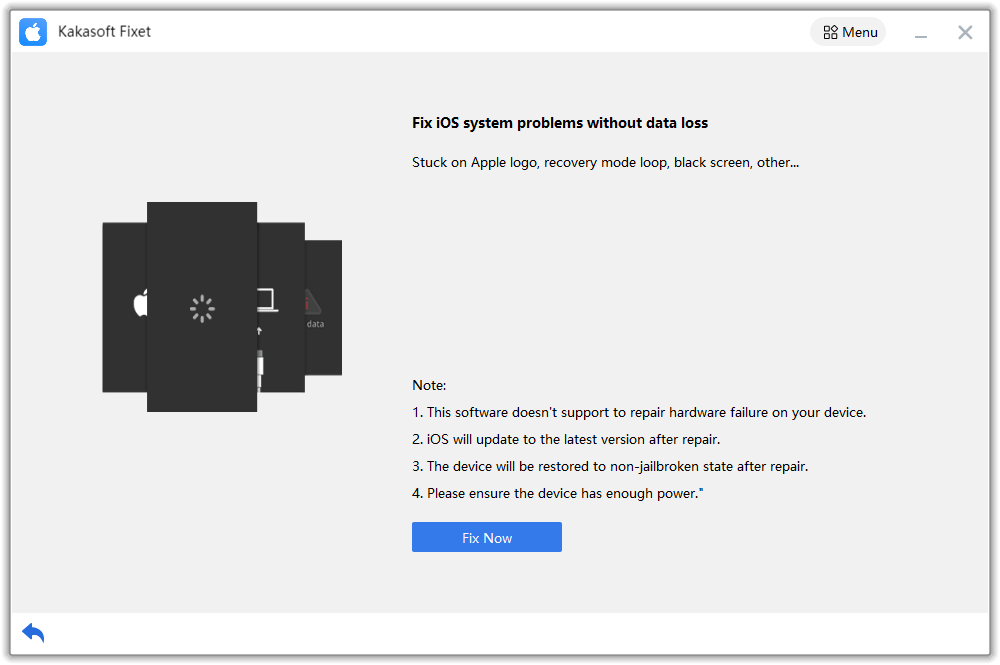
Step 4: Download firmware.
When Fixet has recognized your device and proceeded to the next page, you will see all available iOS/iPadOS firmware packages to be downloaded. Choose one and click on the Download Button.
After the firmware download is completed, you can proceed to start fixing your device.
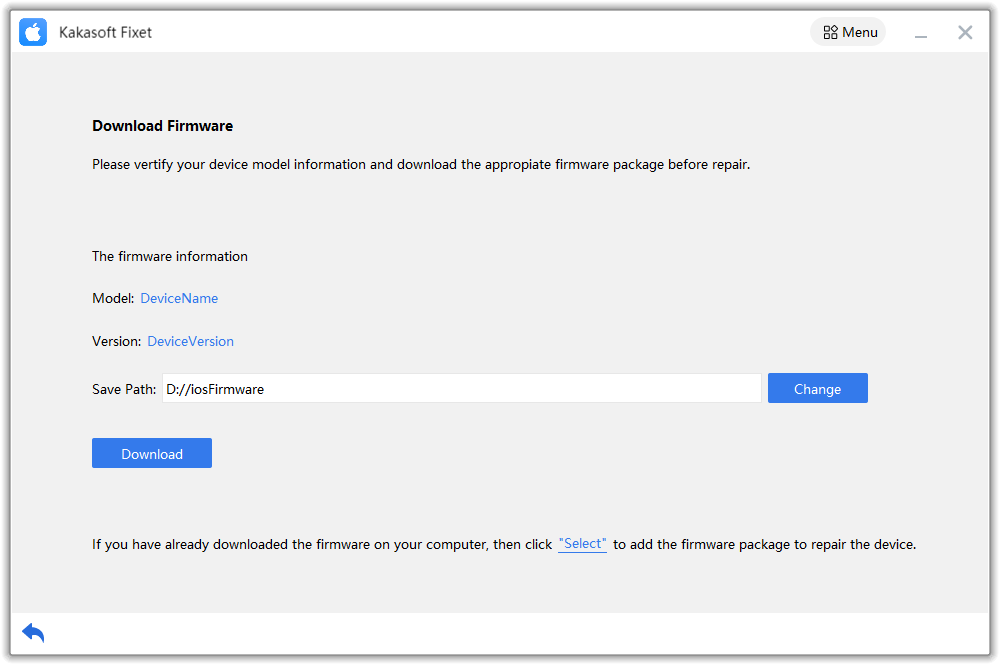
Step 5: Start fixing.
Depending on the issue itself and your device, the time needed to complete the fixing process varies. Normally, it will take from a few minutes to more than half an hour. So, please be patient and wait until it’s done.
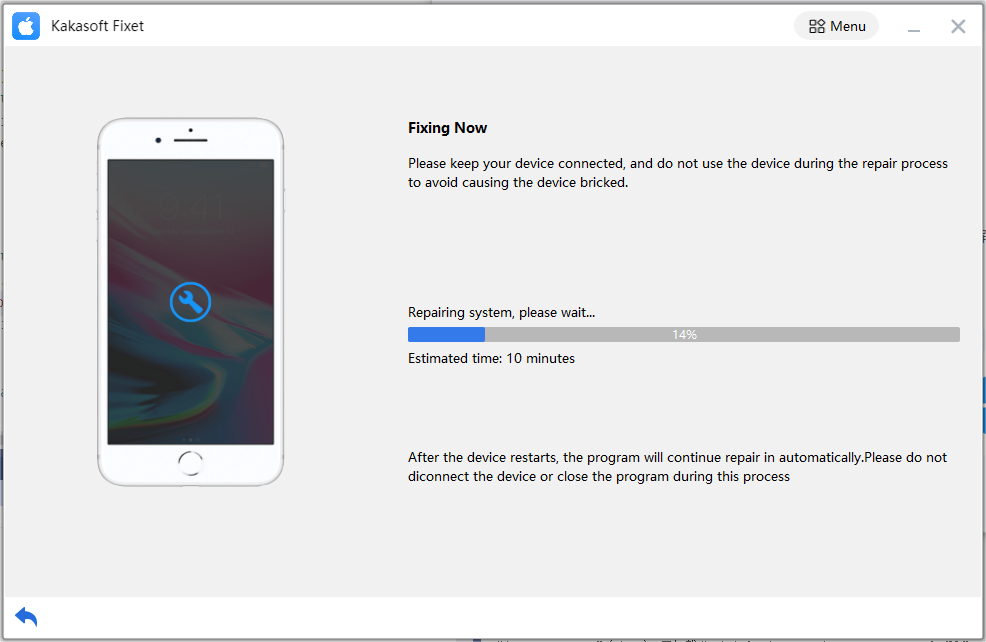
After Fixet completes the fixing, you will come to the page notifying you that your iPhone or iPad has been fixed successfully.
iPhone browser not connecting to a server is an annoying problem as it impacts your user experience. Your iPhone’s default browser is pretty fast and efficient, but when it stops working, you might have to find third-party software for your browsing needs.
If your iPhone browser doesn’t work or you face the Safari cannot connect to a server error, it calls for a quick solution . Therefore, we compiled this guide to resolve the browser-related issues on your iPhone.
Make sure your iPhone has a stable internet connection and there’s no pending iOS update in the system. Once you’re sure that nothing is wrong with your iPhone but its Safari browser still won’t work, follow any of the above-listed methods to fix this problem. You can overcome this problem by configuring DNS settings on your iPhone and clearing its cache from time to time.
However, if nothing from the above-explained methods works out for your iPhone, contact Apple Support or take your iPhone to a repairer to get an expert opinion. You can also download another browser on your iPhone if the Safari browser’s speed and functionality-related issues are recurring.
Related posts:
- How to Fix iPhone Incorrect WiFi Password Issue?
- What to Do When My iPhone Stuck on Verifying Update?
- “Hey Siri” Not Working – How to Fix the Issue?
- What to Do when iPhone Went Black with a Loading Screen?
- How to Fix iPhone Stuck in Boot Loop?
- iPhone Quick Start Is Not Working – Quick Guide
KakaSoft.com
Folder lock.
USB Security
Folder Protector
Private Disk
Shared Folder Protector
iPhone L ocation Changer
i OS System Recovery
Copy protection.
USB Copy Protection
Video DRM Protection
About KakaSoft
KakaSoft - Secure and Simplify Your Digital Life
KakaSoft was first released in 2008 and now serves more than 30+ million users worldwide. Our products are sold to more than 100 countries and regions.
Copyright © 2008-2021 KakaSoft.com. All rights reserved.
refund policy | Privacy Policy | Terms of Use
Blazing fast. Incredibly private.
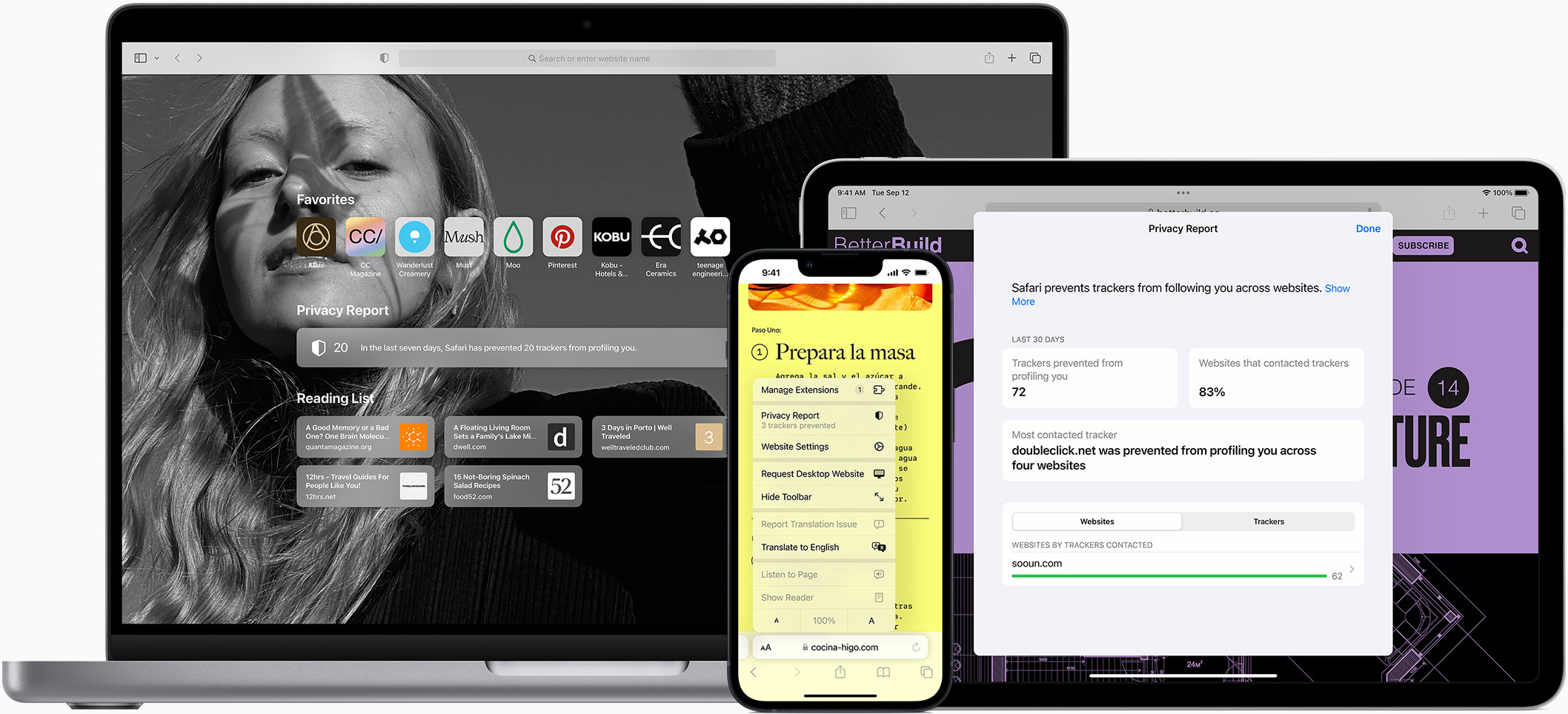
Safari is the best way to experience the internet on all your Apple devices. It brings robust customization options, powerful privacy protections, and optimizes battery life — so you can browse how you like, when you like. And when it comes to speed, it’s the world’s fastest browser. 1
Performance
More with the battery. less with the loading..
With a blazing-fast JavaScript engine, Safari is the world’s fastest browser. 1 It’s developed to run specifically on Apple devices, so it’s geared to make the most out of your battery life and deliver long-lasting power.

Increased performance
We’re always working to make the fastest desktop browser on the planet even faster.
Improved power efficiency
Safari lets you do more online on a single charge.
Up to 4 hours more streaming videos compared with Chrome 3
Up to 17 hours of video streaming 3
Best-in-class browsing
Safari outperforms both Mac and PC browsers in benchmark after benchmark on the same Mac. 4
- JetStream /
- MotionMark /
- Speedometer /
JavaScript performance on advanced web applications. 4
Safari vs. other Mac browsers
Safari on macOS
Chrome on macOS
Edge on macOS
Firefox on macOS
Safari vs. Windows 11 browsers
Chrome on Windows 11
Edge on Windows 11
Firefox on Windows 11
Rendering performance of animated content. 4
Web application responsiveness. 4
4K video streaming
See your favorite shows and films in their best light. Safari supports in-browser 4K HDR video playback for YouTube, Netflix, and Apple TV+. 5 And it runs efficiently for longer-lasting battery life.

Privacy is built in.
Online privacy isn’t just something you should hope for — it’s something you should expect. That’s why Safari comes with industry-leading privacy protection technology built in, including Intelligent Tracking Prevention that identifies trackers and helps prevent them from profiling or following you across the web. Upgrading to iCloud+ gives you even more privacy protections, including the ability to sign up for websites and services without having to share your personal email address.

Intelligent Tracking Prevention
Safari stops trackers in their tracks.
What you browse is no one’s business but your own. Safari has built‑in protections to help stop websites and data-collection companies from watching and profiling you based on your browsing activity. Intelligent Tracking Prevention uses on‑device intelligence to help prevent cross‑site tracking and stops known trackers from using your IP address — making it incredibly difficult to learn who you are and what you’re interested in.
Privacy Report
Safari makes it simple to see how your privacy is protected on all the websites you visit. Click Privacy Report in the Safari menu for a snapshot of cross-site trackers currently prevented from profiling you on the website you’re visiting. Or view a weekly Privacy Report to see how Safari protects you as you browse over time.

Customization
Putting the you in url..
Safari is more customizable than ever. Organize your tabs into Tab Groups so it’s easy to go from one interest to the next. Set a custom background image and fine-tune your browser window with your favorite features — like Reading List, Favorites, iCloud Tabs, and Siri Suggestions. And third-party extensions for iPhone, iPad, and Mac let you do even more with Safari, so you can browse the way you want across all your devices.

Safari Profiles allow you to separate your history, extensions, Tab Groups, favorites, cookies, and more. Quickly switch between profiles for topics you create, like Personal and Work.

Web apps let you save your favorite websites to the Dock on Mac and to the Home Screen on iPhone and iPad. A simplified toolbar and separate settings give you an app-like experience.
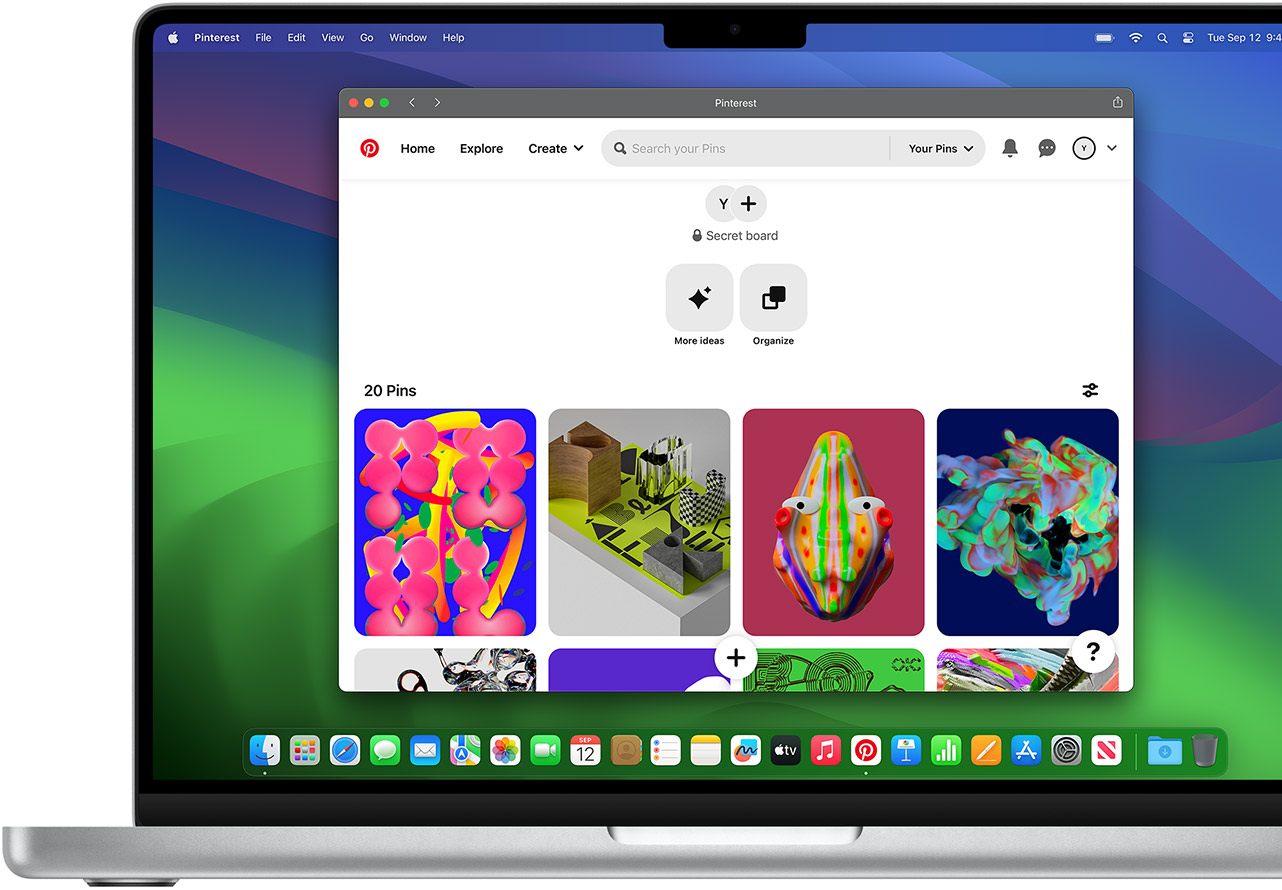
Safari Extensions add functionality to your browser to help you explore the web the way you want. Find and add your favorite extensions in the dedicated Safari category on the App Store.

Save and organize your tabs in the way that works best for you. Name your Tab Groups, edit them, and switch among them across devices. You can also share Tab Groups — making planning your next family trip or group project easier and more collaborative.
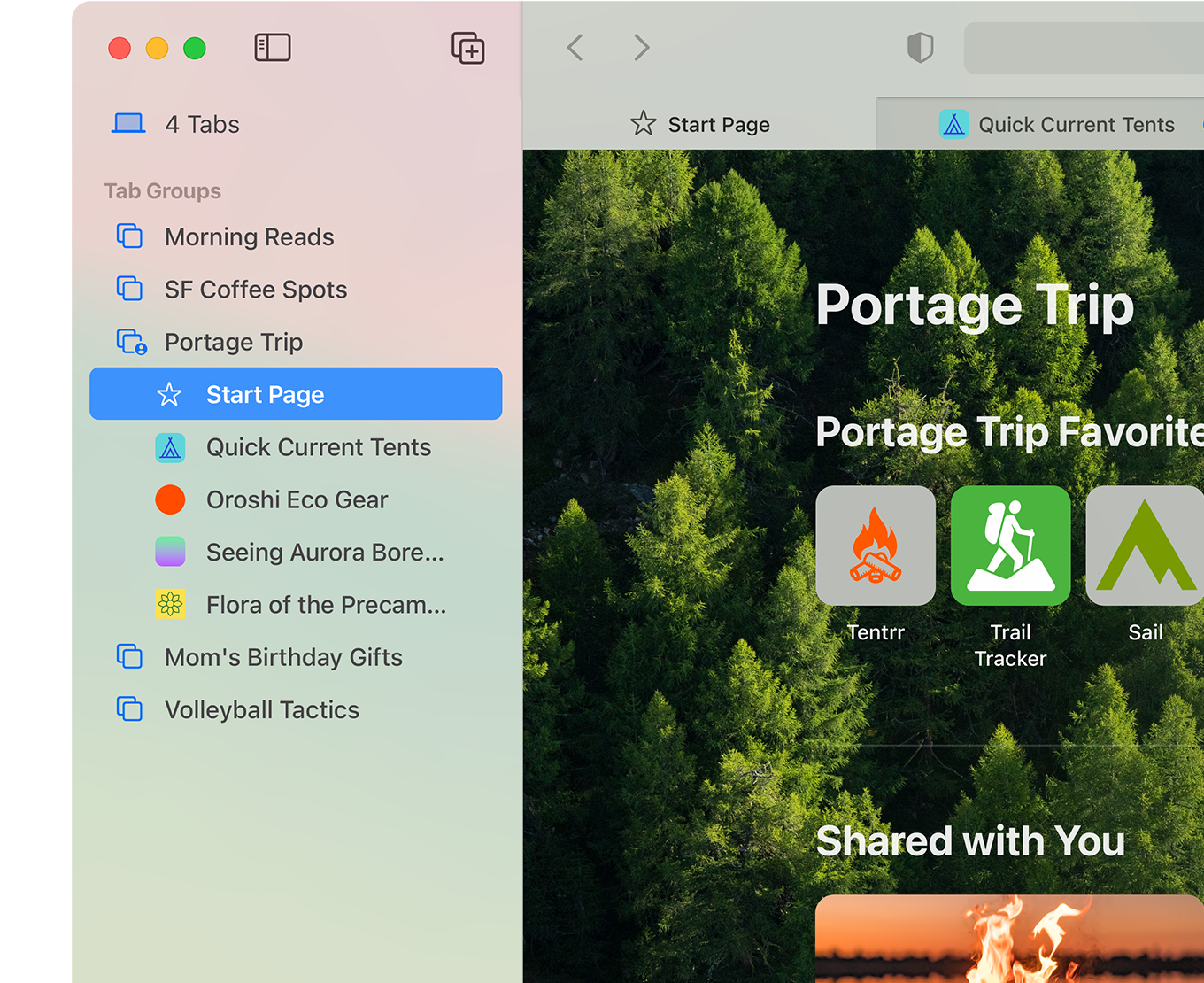
Smart Tools
Designed to help your work flow..
Built-in tools create a browsing experience that’s far more immersive, intuitive, and immediate. Get detailed information about a subject in a photo with just a click, select text within any image, instantly translate an entire web page, and quickly take notes wherever you are on a site — without having to switch apps.

Notes is your go-to app to capture any thought. And with the Quick Note feature, you can instantly jot down ideas as you browse websites without having to leave Safari.

Translation
Translate entire web pages with a single click. You can also get translations for text in images and paused video without leaving Safari.
Interact with text in any image or paused video on the web using functions like copy and paste, translate, and lookup. 6

Visual Look Up
Quickly learn more about landmarks, works of art, breeds of dogs, and more with only a photo or an image you find online. And easily lift the subject of an image from Safari, remove its background, and paste it into Messages, Notes, or other apps.

Surf safe and sound.
Strong security protections in Safari help keep you safe. Passkeys introduce a safer way to sign in. iCloud Keychain securely stores and autofills passkeys and passwords across all your devices. Safari also notifies you when it encounters suspicious websites and prevents them from loading. Because it loads each web page in a separate process, any harmful code is always confined to a single browser tab so it won’t crash the entire application or access your data. And Safari automatically upgrades sites from HTTP to the more secure HTTPS when available.
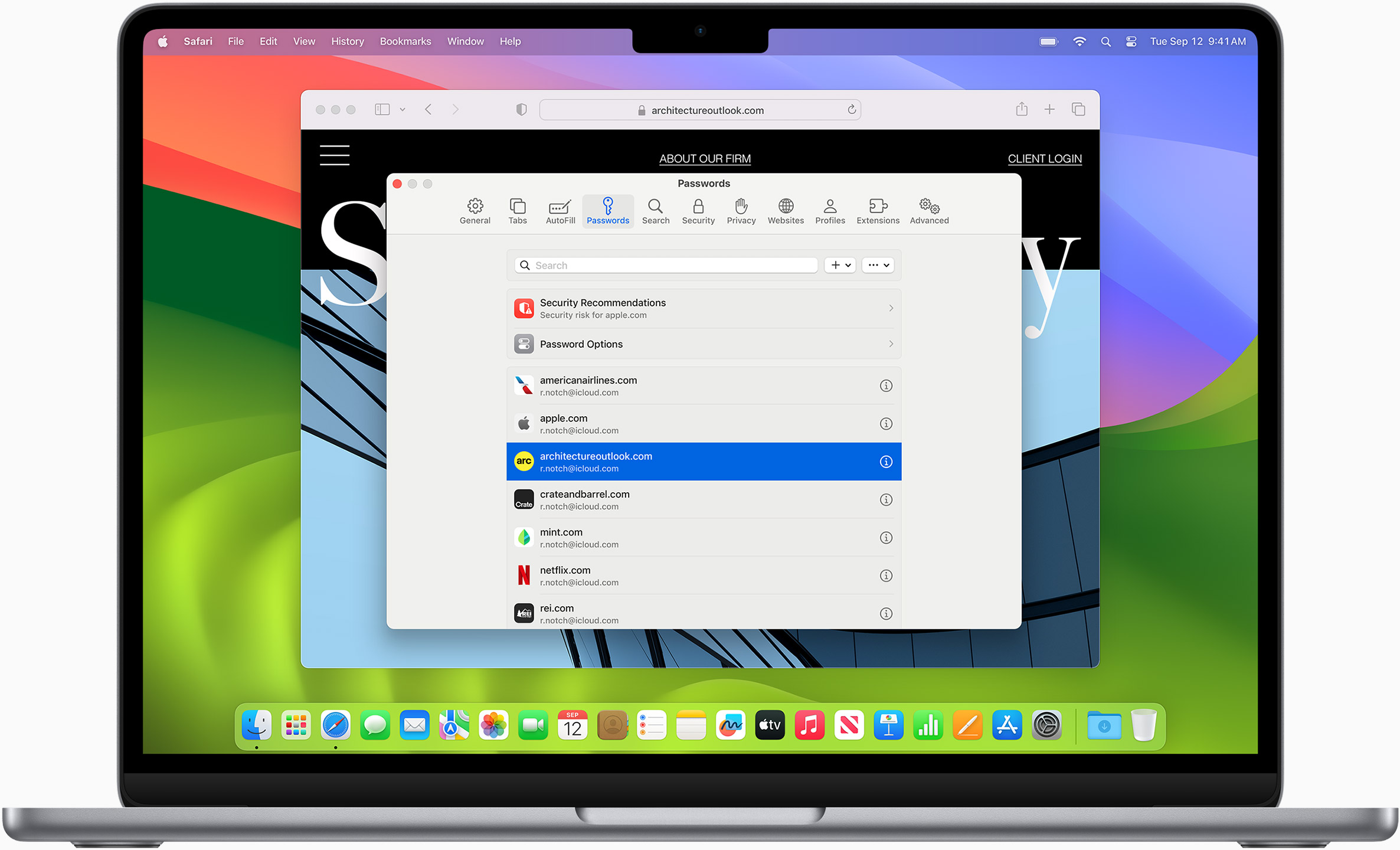
Passkeys introduce a more secure and easier way to sign in. No passwords required.
Passkeys are end-to-end encrypted and safe from phishing and data leaks, and they are stronger than all common two-factor authentication types. Thanks to iCloud Keychain, they work across all your Apple devices, and they even work on non-Apple devices.
Learn more about passkeys
Apple Pay and Wallet make checkout as easy as lifting a finger.
Apple Pay is the easiest and most secure way to shop on Safari — allowing you to complete transactions with Face ID or Touch ID on your iPhone or iPad, with Touch ID on your MacBook Pro or MacBook Air, or by double-clicking the side button on your Apple Watch.
Learn more about Apple Pay
With AutoFill, you can easily fill in your previously saved credit card information from the Wallet app during checkout. Your credit card details are never shared, and your transactions are protected with industry-leading security.
Same Safari. Different device.
Safari works seamlessly and syncs your passwords, bookmarks, history, tabs, and more across Mac, iPad, iPhone, and Apple Watch. And when your Mac, iOS, or iPadOS devices are near each other, they can automatically pass what you’re doing in Safari from one device to another using Handoff. You can even copy images, video, or text from Safari on your iPhone or iPad, then paste into another app on your nearby Mac — or vice versa.

When you use Safari on multiple devices, your tabs carry over from one Apple device to another. So you can search, shop, work, or browse on your iPhone, then switch to your iPad or Mac and pick up right where you left off.
Save web pages you want to read later by adding them to your Reading List. Then view them on any of your iCloud-connected devices — even if you’re not connected to the internet.
iCloud Keychain securely stores your user names, passkeys, passwords, and credit card numbers and keeps them up to date on your trusted devices. So you can easily sign in to your favorite websites — as well as apps on iOS and iPadOS — and quickly make online purchases.
Designed for developers.
Deep WebKit integration between Mac hardware and macOS allows Safari to deliver the fastest performance and the longest battery life of any browser on the platform, while supporting modern web standards for rich experiences in the browser. WebKit in macOS Sonoma includes optimizations that enable even richer browsing experiences, and give developers more control over styling and layout — allowing for more engaging content.
Make Safari your default browser
Customize your start page, view your browsing privacy report, monitor your saved passwords, use apple pay in safari, view your tabs across all your devices, read the safari user guide, get safari support.
Why Does It Say Safari Cannot Connect To The Server

- Software & Applications
- Browsers & Extensions
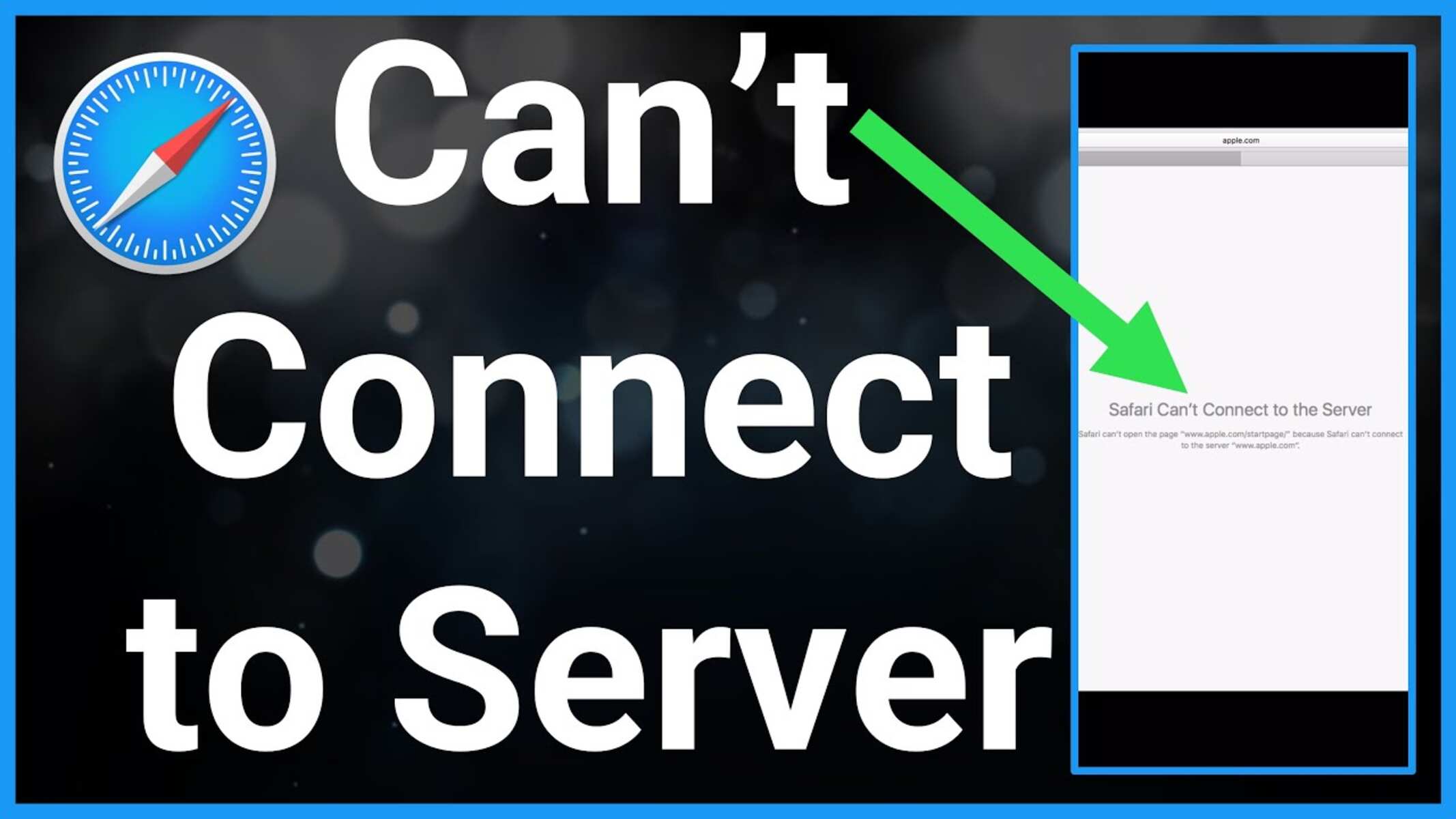
Introduction
When you're eagerly trying to access a website using Safari, only to be met with the frustrating message "Safari cannot connect to the server," it can be a real buzzkill. This error can throw a wrench into your browsing experience, leaving you scratching your head and wondering what went wrong. But fear not, as we're here to shed light on this common issue and guide you through the troubleshooting process.
The "Safari cannot connect to the server" error typically occurs when the browser is unable to establish a connection with the website's server. This can happen for a variety of reasons, ranging from simple network glitches to more complex configuration issues. Understanding the potential causes of this error is the first step toward resolving it and getting back to seamless browsing.
In the following sections, we'll delve into the common culprits behind this error and provide you with practical troubleshooting steps to help you overcome it. Whether you're a casual Safari user or rely on it for your daily browsing needs, having a clear understanding of how to tackle this issue can save you time and frustration in the long run. So, let's roll up our sleeves and dive into the world of Safari troubleshooting to conquer the "Safari cannot connect to the server" error once and for all.
Common Causes of the Error
The "Safari cannot connect to the server" error can stem from various underlying issues, each warranting a unique approach to resolution. Understanding these common causes is crucial in effectively troubleshooting the error. Here are the primary culprits behind this vexing issue:
Network Connectivity Problems : One of the most prevalent reasons for encountering this error is a disruption in network connectivity. This can occur due to a weak or unstable Wi-Fi signal, network congestion, or even a complete loss of internet connection. When Safari fails to establish a connection with the server due to network issues, it promptly displays the "Safari cannot connect to the server" message.
DNS Configuration Issues : The Domain Name System (DNS) plays a pivotal role in translating domain names into IP addresses, allowing browsers to locate websites. If there are discrepancies or malfunctions in the DNS configuration, Safari may struggle to resolve the website's IP address , leading to the server connection error.
Server Unavailability : At times, the website's server itself may be experiencing downtime or maintenance, rendering it temporarily inaccessible. When Safari attempts to connect to a server that is unavailable, it promptly notifies the user with the "Safari cannot connect to the server" message.
Firewall or Security Software Restrictions : Overzealous firewall settings or stringent security software configurations can impede Safari's ability to establish a connection with certain servers. In such cases, the browser may interpret these restrictions as an inability to connect to the server, triggering the error message.
Proxy Configuration Issues : If Safari is configured to use a proxy server and encounters complications in communicating with it, the "Safari cannot connect to the server" error may manifest. Proxy misconfigurations or malfunctions can disrupt the browser's ability to reach the intended server.
Browser Cache and Cookies : Accumulated cache and cookie data within Safari can occasionally interfere with the browser's ability to establish a connection with a server. Outdated or corrupted cache files and cookies may lead to the server connection error, necessitating a cleanup to restore normal browsing functionality.
Understanding these common causes provides a solid foundation for effectively addressing the "Safari cannot connect to the server" error. By identifying the specific root cause, users can proceed with targeted troubleshooting steps to resolve the issue and restore seamless browsing capabilities.
Troubleshooting Steps
Resolving the "Safari cannot connect to the server" error involves a systematic approach to address the underlying causes. By following these troubleshooting steps, you can effectively diagnose and resolve the issue, restoring your browsing experience to its seamless state.
1. Check Network Connectivity
Begin by verifying your network connectivity. Ensure that your device is connected to a stable and reliable network, whether it's Wi-Fi or cellular data. If using Wi-Fi, consider moving closer to the router to improve signal strength. Additionally, try accessing the website using a different network to rule out any network-specific issues.
2. Restart Safari and Device
Sometimes, a simple restart can work wonders. Close Safari and relaunch it to see if the error persists. If the issue lingers, consider restarting your device to refresh the network connection and clear any temporary glitches that may be affecting Safari's performance.
3. Verify DNS Settings
Check the DNS settings on your device to ensure they are configured correctly. Consider using alternative DNS servers, such as Google DNS or OpenDNS, to bypass potential DNS-related issues. This can be done through the device's network settings or router configuration.
4. Disable Proxy Settings
If you have proxy settings enabled in Safari, try disabling them temporarily to see if it resolves the error. Navigate to Safari's preferences, select the "Advanced" tab, and then click on "Change Settings" next to Proxies. Disable any active proxies and attempt to access the website again.
5. Clear Browser Cache and Cookies
Accumulated cache and cookies can sometimes interfere with Safari's ability to connect to a server. Clearing these data can help resolve the issue. In Safari, go to Preferences > Privacy, and click on "Manage Website Data." Remove the cache and cookies associated with the affected website, and then attempt to access it again.
6. Disable Security Software Temporarily
If you have security software or a firewall installed, consider temporarily disabling it to check if it's causing the connection issue. Be cautious when doing this and ensure that you have alternative security measures in place to protect your device during the troubleshooting process.
7. Update Safari and Operating System
Ensure that you are using the latest version of Safari and that your device's operating system is up to date. Software updates often include bug fixes and security enhancements that can address underlying issues affecting Safari's connectivity.
By systematically working through these troubleshooting steps, you can pinpoint the root cause of the "Safari cannot connect to the server" error and take the necessary actions to resolve it. If the issue persists after following these steps, consider reaching out to your internet service provider or seeking further technical assistance to diagnose and address any network-related issues.
These proactive measures can help you overcome the frustration of encountering this error, empowering you to enjoy uninterrupted browsing on Safari.
In conclusion, encountering the "Safari cannot connect to the server" error can be a perplexing experience, disrupting your browsing activities and leaving you in a state of frustration. However, armed with a deeper understanding of the common causes behind this issue and the systematic troubleshooting steps outlined above, you are well-equipped to tackle this challenge head-on.
By recognizing the potential culprits, such as network connectivity issues, DNS configuration discrepancies, server unavailability, firewall restrictions, proxy misconfigurations, and browser cache and cookie interference, you gain valuable insights into the intricate web of factors that can lead to this error. This awareness is pivotal in guiding your troubleshooting efforts toward a swift and effective resolution.
The troubleshooting steps provided offer a clear roadmap for diagnosing and addressing the underlying causes of the error. From verifying network connectivity and DNS settings to clearing browser cache and cookies, each step is designed to methodically eliminate potential issues, ultimately restoring Safari's seamless connectivity to the intended servers.
It's important to approach these troubleshooting steps with patience and diligence, as the resolution may vary depending on the specific cause of the error. Additionally, staying proactive with software updates and maintaining a secure yet flexible approach to security software configurations can contribute to a more resilient browsing experience.
By following these steps and remaining vigilant in your approach to resolving the "Safari cannot connect to the server" error, you can reclaim the smooth and uninterrupted browsing experience that Safari is renowned for. Should the issue persist despite your best efforts, seeking assistance from technical support or your internet service provider can provide further insights and solutions tailored to your specific circumstances.
Ultimately, by arming yourself with the knowledge and proactive measures outlined in this guide, you can navigate the challenges posed by the "Safari cannot connect to the server" error with confidence, ensuring that your browsing experience remains seamless and enjoyable.
Remember, in the ever-evolving landscape of technology, encountering occasional hiccups is not uncommon. What truly matters is your ability to adapt, troubleshoot, and emerge with a deeper understanding of the tools and systems you rely on. With this mindset, you are well-prepared to conquer any browsing challenges that come your way, ensuring that your Safari experience remains a gateway to a world of seamless exploration and discovery.
Leave a Reply Cancel reply
Your email address will not be published. Required fields are marked *
Save my name, email, and website in this browser for the next time I comment.
- Crowdfunding
- Cryptocurrency
- Digital Banking
- Digital Payments
- Investments
- Console Gaming
- Mobile Gaming
- VR/AR Gaming
- Gadget Usage
- Gaming Tips
- Online Safety
- Software Tutorials
- Tech Setup & Troubleshooting
- Buyer’s Guides
- Comparative Analysis
- Gadget Reviews
- Service Reviews
- Software Reviews
- Mobile Devices
- PCs & Laptops
- Smart Home Gadgets
- Content Creation Tools
- Digital Photography
- Video & Music Streaming
- Online Security
- Online Services
- Web Hosting
- WiFi & Ethernet
- Browsers & Extensions
- Communication Platforms
- Operating Systems
- Productivity Tools
- AI & Machine Learning
- Cybersecurity
- Emerging Tech
- IoT & Smart Devices
- Virtual & Augmented Reality
- Latest News
- AI Developments
- Fintech Updates
- Gaming News
- New Product Launches
5 Ways to Improve IT Automation
- What is Building Information Modelling
Related Post
Sla network: benefits, advantages, satisfaction of both parties to the contract, what is minecraft coded in, how much hp does a diablo tuner add, what is halo-fi, what is halo lock iphone, related posts.
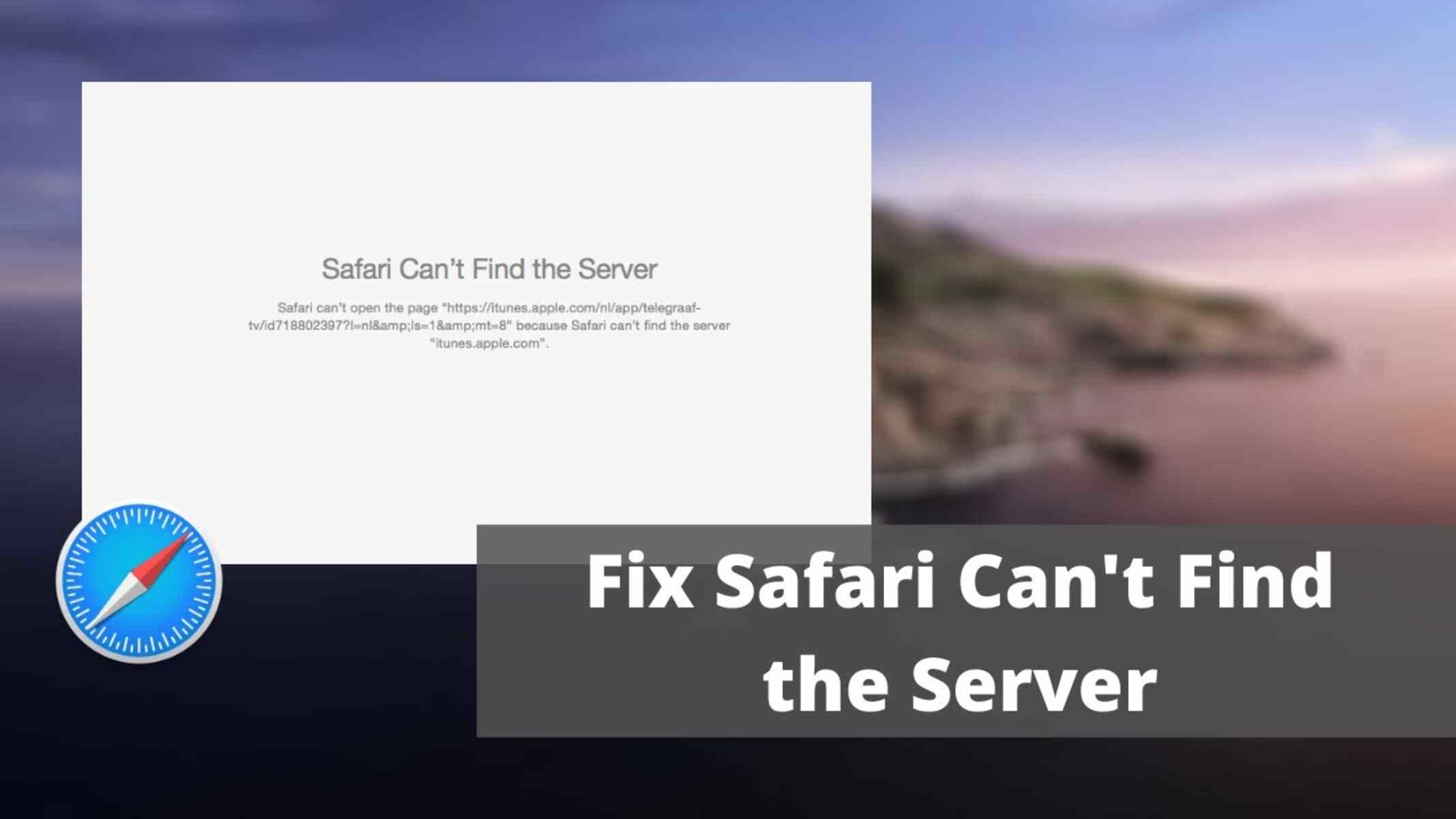
Why Safari Cannot Find Server

Why Does Hulu Keep Freezing (Troubleshoot Guide)
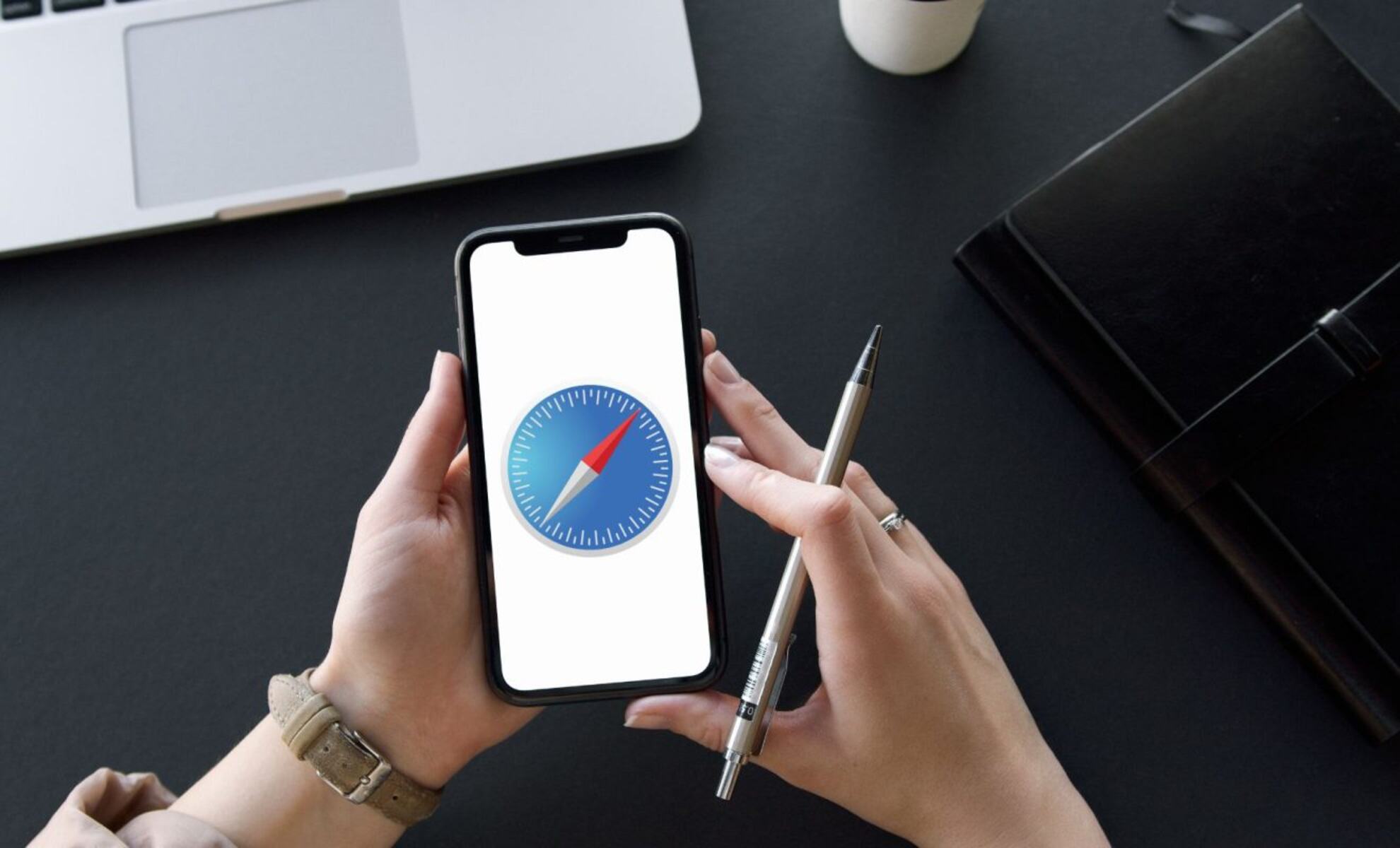
What Does It Mean When Safari Cannot Connect To The Server

Disney Plus Error Code 83 Guide: How To Fix It
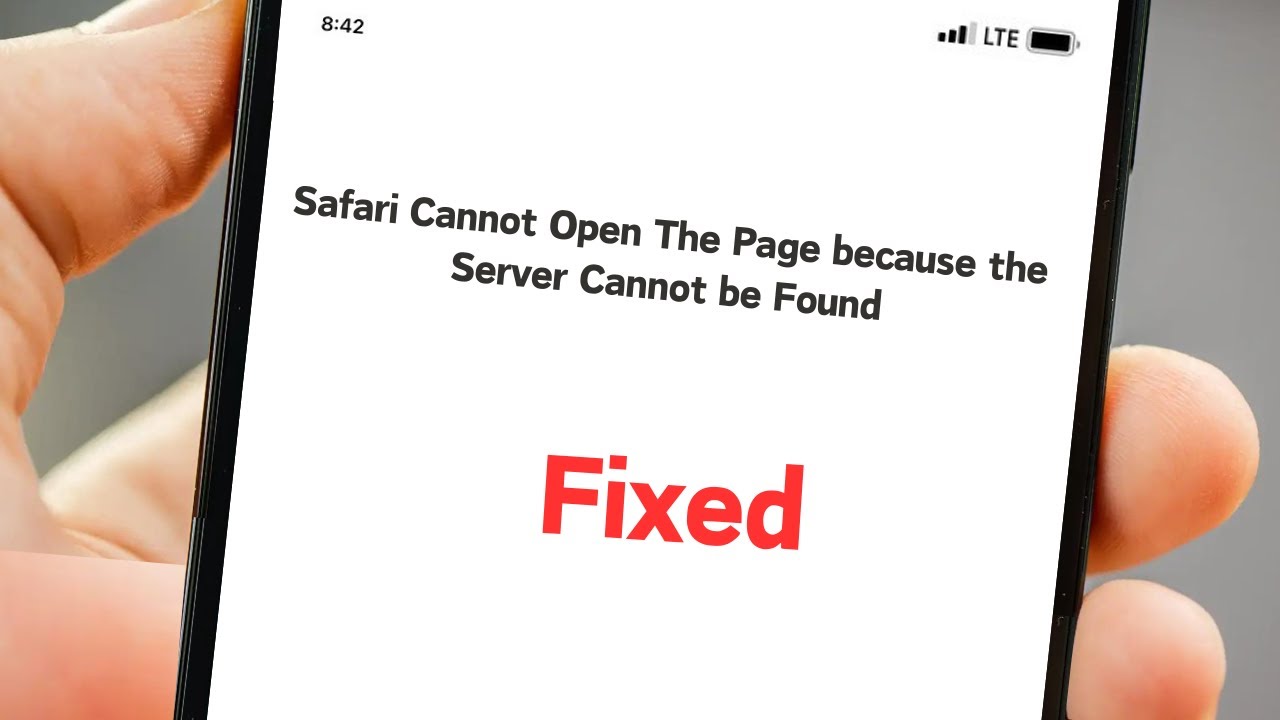
Why Is Safari Saying Server Cannot Be Found

How Do I Enable Javascript On My Browser
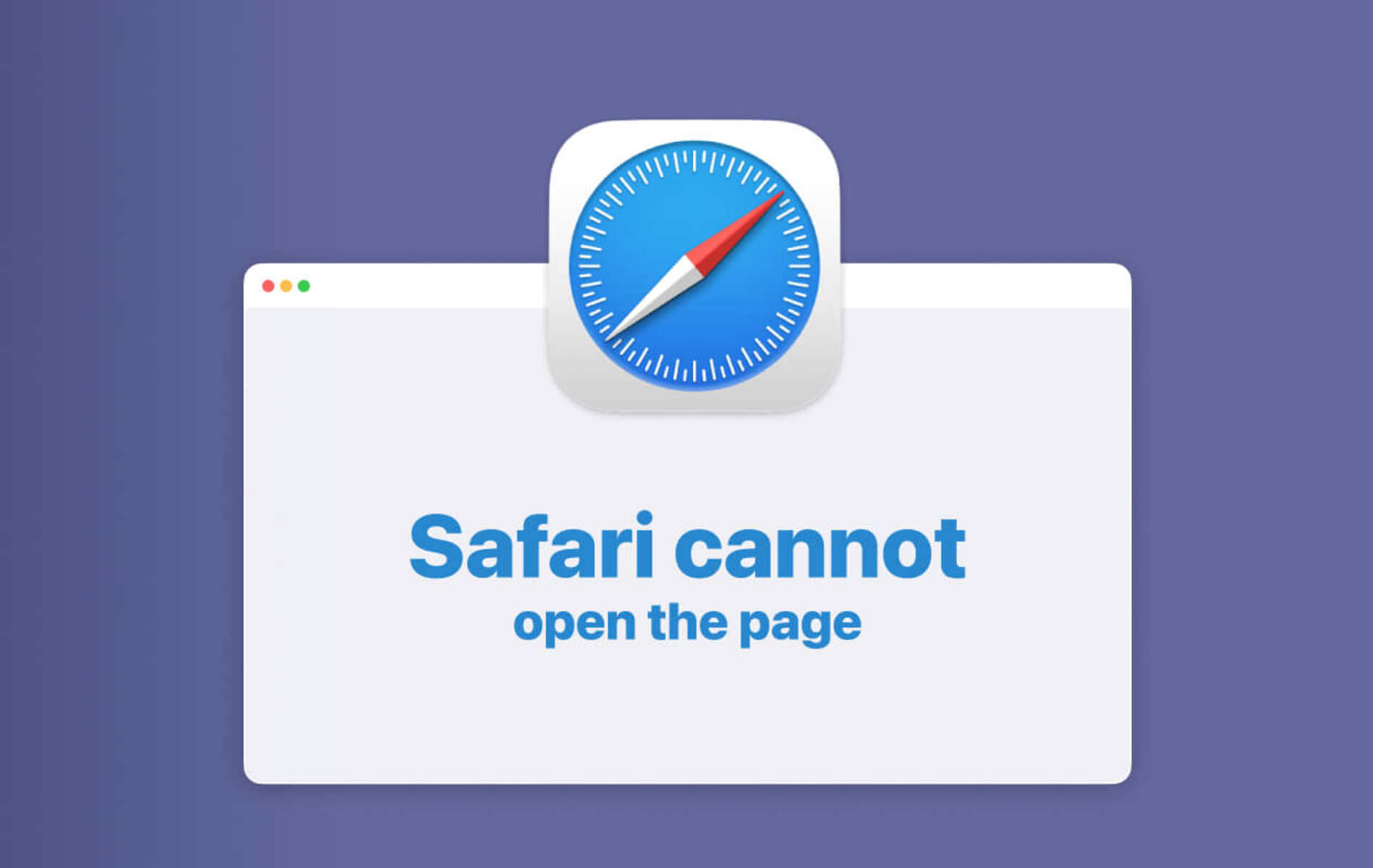
Why Safari Cannot Open Page
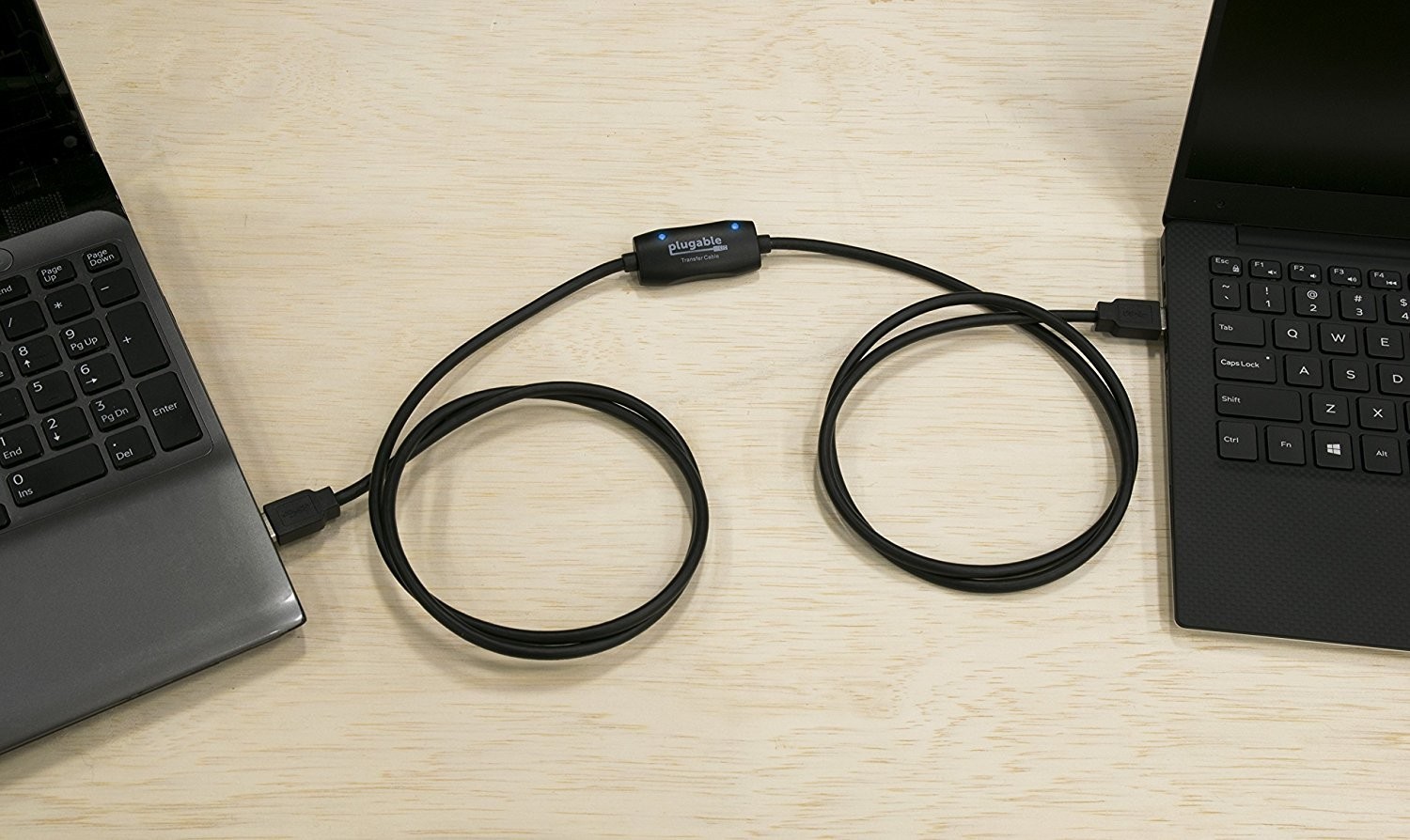
How To Tell If You Are Using A Proxy Server
Recent stories.

What is Building Information Modelling?

How to Use Email Blasts Marketing To Take Control of Your Market

Learn To Convert Scanned Documents Into Editable Text With OCR

Top Mini Split Air Conditioner For Summer

Comfortable and Luxurious Family Life | Zero Gravity Massage Chair

Fintechs and Traditional Banks: Navigating the Future of Financial Services

AI Writing: How It’s Changing the Way We Create Content

- Privacy Overview
- Strictly Necessary Cookies
This website uses cookies so that we can provide you with the best user experience possible. Cookie information is stored in your browser and performs functions such as recognising you when you return to our website and helping our team to understand which sections of the website you find most interesting and useful.
Strictly Necessary Cookie should be enabled at all times so that we can save your preferences for cookie settings.
If you disable this cookie, we will not be able to save your preferences. This means that every time you visit this website you will need to enable or disable cookies again.
WebKit in Safari 18 beta">News from WWDC24: WebKit in Safari 18 beta
Jun 10, 2024
by Jen Simmons, Jon Davis, Karl Dubost, Anne van Kesteren, Marcos Cáceres, Ada Rose Canon, Tim Nguyen, Sanjana Aithal, Pascoe, and Garrett Davidson
Web apps for Mac
Safari extensions, spatial media, web inspector, deprecations, bug fixes and more, help us beta test.
The last year has been a great one for WebKit. After unveiling Safari 17 beta at WWDC23, we’ve shipped six releases of Safari 17.x with a total of 200 new web technologies. And we’ve been hard at work on multiple architectural improvement projects that strengthen WebKit for the long-term.
Now, we are pleased to announce WebKit for Safari 18 beta. It adds another 48 web platform features, as well as 18 deprecations and 174 bug fixes. Test it today on iOS 18 beta, iPadOS 18 beta, visionOS 2 beta, and macOS Sequoia beta.
Safari 18 for visionOS 2 beta adds support for immersive WebXR . Now you can create fully immersive experiences and deliver them on the web to people using Apple Vision Pro . Safari on visionOS 2 beta supports immersive-vr sessions. WebXR scenes are displayed using hardware-accelerated graphics driven by WebGL .

Safari for visionOS 2 beta supports the new WebXR transient-pointer input mode. It lets you make the most of natural input on visionOS, and allow your users to interact with a look and a pinch.

If you want to animate a 3D model of the user’s hands, Safari for visionOS 2 beta also includes support for WebXR hand tracking . To ensure privacy, permission to allow hand tracking will be requested from users at the start of their WebXR session.
Learn all about WebXR on visionOS 2 beta by watching Build immersive web experiences with WebXR at WWDC24, available Wednesday June 12. And learn more about transient-pointer input mode by reading Introducing natural input for WebXR in Apple Vision Pro .
View Transitions
WebKit added support for the View Transitions API in Safari 18 beta. It provides an optimized browser API to animate elements from one state to another. Safari supports the CSS View Transitions Module Level 1 specification that adds new CSS properties and pseudo-elements for defining transition animations, along with a new browser API to start transition animations and react to different transition states. It works by capturing the current (old) state of the page and applying an animated transition to the new state. By default, the browser applies a cross-fade between the states.
Call the document.startViewTransition() method to initiate the capture. You can pass a callback function as the first argument to make DOM state changes between the old and new captures. The method returns a ViewTransition object which contains promises that can be used to track when the view transition starts or ends.
Once the states are captured, a pseudo-element tree is built which can be targeted with CSS, allowing you to modify the CSS animations used for the transitions. The animations out of the old page state and into the new page state can be modified via the ::view-transition-new(*) and ::view-transition-old(*) selectors. You can also ask the browser to independently track state changes for a specific element by naming it with the CSS view-transition-name property. You can then use the pseudo-element to customize animations for it.
The example below demonstrates state management with tabbed navigation. Each tab view has a custom transition animation out and a subtly different animation in, while the tabs themselves rely on the default page transition.
Style Queries
WebKit for Safari 18 beta adds support for Style Queries when testing CSS Custom Properties. Similar to how developers can use Sass mixins, Style Queries can be used to define a set of reusable styles that get applied as a group.
Here, if the --background custom property is set to black, then certain styles will be applied — in this case to make the headline and paragraph text color white.
Don’t forget to pay attention the HTML structure. By default, Style Queries reference the styles on the direct parent element. You can create a different reference through the use of Container Query names.
currentcolor and system color keywords in Relative Color Syntax
Support for Relative Color Syntax shipped in Safari 16.4 . It lets you define colors in a more dynamic fashion, creating a new color from an existing color. The value lch(from var(--color) calc(L / 2) C H) for instance uses the lch color space to take the variable --color and calculate a new color that’s half its lightness, calc(L / 2) .
Now, starting in WebKit for Safari 18 beta, you can reference the currentcolor or a system color keyword as you define the new color. For example, this code will set the background color to be the same color as the text color, only 4 times lighter, as calculated in the oklch color space.
Being able to reference system color keywords opens up another world of options. System colors are like variables that represent the default colors established by the OS, browser, or user — defaults that change depending on whether the system is set to light mode, dark mode, high contrast mode, etc. For example, canvas represents the current default background color of the HTML page, while fieldtext matches the color of text inside form fields. Find the full list of system colors in CSS Color level 4 .
Relative Color Syntax lets you define dynamic connections between colors in your CSS, lessening the need to control color through variables in a tightly-regimented design system. Learn more about Relative Color Syntax by watching this portion of What’s new in CSS from WWDC23.
Animating display
WebKit for Safari 18 beta adds support for transition animation of the display property.
Many developers are excited to use @starting-style along with transition-behavior and display: none interpolation. WebKit for Safari 17.4 added general support for transition-behavior , including transition-behavior: allow-discrete . WebKit for Safari 17.5 added support for @starting-style , letting you define starting values for transitioning an element as it’s created (or re-created). Now in WebKit for Safari 18 beta, you can use these features together to transition the display property.
Shaping interaction regions on visionOS
As a web developer, you’re very familiar with how link styling works on the web. For decades you’ve been able to use CSS to style text-decoration , color and more for :link , :hover , :active , and :visited states. You’ve also been able to adjust the size of the invisible tap target through use of padding.
Apple Vision Pro adds a new dimension to how links work — tap targets are visible on visionOS. Anytime a user looks at an interactive element, it’s highlighted to let them know that it can be tapped. And you as a designer or developer can intentionally design how an interaction region looks. You may want to add padding, for instance, or even a rounded corner to the otherwise invisible box.
Now in Safari in visionOS 2 beta, when you use CSS clip-path to change the shape of tappable area of a link, the visible interaction region will change shape as well. Interactive UI elements built with SVG will also be highlighted with the proper shape. Learn more by watching Optimize for the spatial web at WWDC24, available Tuesday June 11.
Backdrop Filter
Originally shipped in Safari 9.0, backdrop filter provides a way to apply graphics effects to the content behind a particular element. You can apply backdrop-filter to a headline, for example, and everything behind the headline will be blurred, or have decreased saturation, or increased contrast. Any of the filter functions from SVG can be used — blur() , brightness() , contrast() , drop-shadow() , grayscale() , hue-rotate() , invert() , opacity() , saturate() , and sepia() .
For many years, backdrop filter only worked in Safari. It was available when you prefixed the property with -webkit-backdrop-filter . Now, starting in Safari 18 beta, you don’t need the prefix. We also improved our implementation, fixing bugs and boosting interoperability.
This demo shows eight different filters and what you might do with each one alone. You can, of course, combine filters to create even more interesting results. With backdrop filter supported in Safari since 2015, Edge since 2018, Chrome since 2019, Samsung Internet since 2020, and Firefox since 2022, this is a great time to consider the kind of graphic design possibilities it enables.
safe in Flexbox
WebKit for Safari 18 beta adds support for the safe keyword for alignment in Flexbox. This provides a mechanism for refining how flex items overflow. Let’s look at an example of a simple navigation menu — a classic use of Flexbox.
The following CSS creates a simple layout that wraps when there’s not enough space on one line for the menu, while centering the items in the available space.

By default, justify-content: center will always keep the items centered, even when the content is overflowing the containing box. You might prefer, however, that the content not be centered when it overflows — being centered cuts off both the beginning and end of the word, making the content harder to understand when the overflow is not visible.

The safe keyword lets you change how alignment works when content overflows. The justify-content: safe center rule will instead start align any item that is overflowing, while continuing to center the items that are not overflowing.
If you want to override the safe keyword, you can use unsafe . The justify-content: unsafe center rule will do the same thing as justify-content: center . The unsafe keyword has been supported in WebKit for Safari for quite some time.
Content visibility
WebKit for Safari 18 beta adds support for content-visibility . This property controls whether or not an element renders its contents in a fashion that’s useful for making performance optimizations. It lets you communicate to the browser that certain portions of the page will likely be initially offscreen, and suggest they be omitted from layout and rendering. This can make the page load faster.
Last year , we added support for web apps in macOS Sonoma. You can add any website to your dock — whether or not it was built with a Manifest file, Service Worker, or other technology to customize the web app experience. Go to the site in Safari, then File > Add to Dock… where you can customize the icon, change the name, and even clean up the URL. Then, just click on the web app icon in your Dock, and it will open as an app.
This year brings two improvements to web apps on Mac.
Opening links
macOS Sequoia beta adds support for opening links directly in web apps. Now, when a user clicks a link, if it matches the scope of a web app that the user has added to their Dock, that link will open in the web app instead of their default web browser.
For example, imagine you have added MDN Web Docs to the Dock. Then a colleague sends you a link to an MDN page in Messages, Mail, Slack, Discord, IRC, or any non-browser application on your Mac. Now when you click on that link, it will open in the MDN Web Docs web app instead of your default browser.
Clicking a link within a browser will maintain the current behavior. This feature only affects links opened elsewhere. (When a user is in Safari, clicking on a link that matches the scope of a web app that is added to Dock, they will see an “Open in web app” banner, unless they have previously dismissed the banner.)
By default, this behavior applies when the link matches the host of the web page used to create the web app. As a developer, you can refine this experience by defining the range of URLs that should open in the web app with the scope member in the web app manifest .
Extension support
Now you can personalize web apps on Mac with Safari Web Extensions and Content Blockers. Navigate to the web app’s Settings menu to access all your installed Content Blockers and Web Extensions. Any enabled in Safari will be on by default in the web app. Each web app is uniquely customizable, just like Safari profiles.
Safari 18 beta also adds support for Mobile Device Management of extension enabled state, private browsing state, and website access on managed devices. This means schools and businesses that manage iOS, iPadOS, or macOS devices can now include the configuration of Safari App Extensions, Content Blockers, and Web Extensions in their management.
One of the amazing experiences you can have on Apple Vision Pro is looking at spatial photos and panoramas. When you open the Photos app in visionOS, you see a montage of your photos. Tap an image, it appears alone in a floating frame in front of you, while the rest of the app disappears.
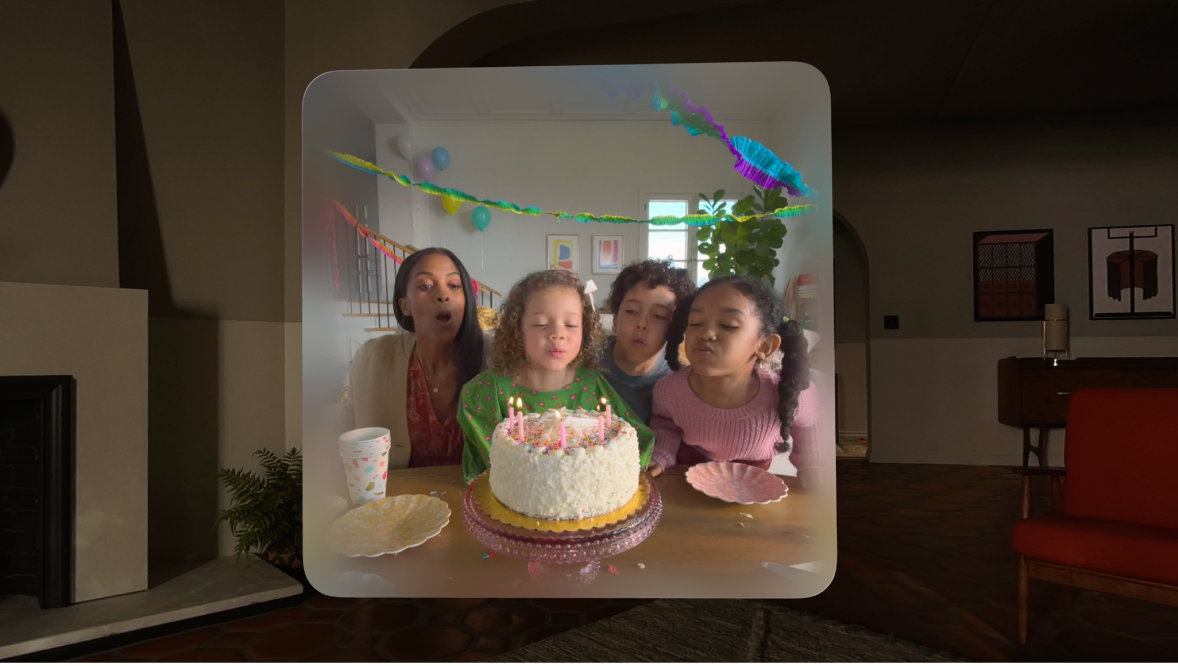
A spatial photo appears at just the right height and viewing angle to make it feel like you’ve gone back to a moment in time. A second tap of the UI breaks it out of the frame, as it grows and becomes even more immersive. Similarly, a panorama floats in a frame on first tap. Then on second tap of the UI, it expands to wrap all around you, creating a fully immersive experience.
Now in Safari 18 for visionOS 2 beta, you can use the Fullscreen API to create the same experience on the web. You can embed the photo in a web page, and provide the ability to tap. The photo will pop into a floating frame as the Safari window disappears. Then when the user taps on the spatial photo or panorama UI that visionOS provides, the photo will further expand to create a fully immersive experience. When they exit the image, the Safari window will return.
Let’s walk through how to support experiencing a spatial photo or panorama on the web using Fullscreen API. First, include the image on your web page using any of the techniques we’ve used on the web for years. Here, we can embed a flattened panoramic photo into the web page using simple HTML.
Then using JavaScript, we’ll trigger .requestFullscreen() on tap. Perhaps like this.
You could, of course, create your own UI for the user to tap, rather than making the entire photo the tap target.
Spatial images work just the same, although it’s likely we want to provide fallbacks for browsers that do not support HEIC files . We can do so with the picture element.
Spatial images are stereoscopic, with both a left and right channel. In Safari, when the image is embedded in the web page, the browser will show the left channel. And there’s no need to worry about providing a fallback of any sort for Safari on macOS, iOS, or iPadOS — the stereoscopic HEIC file works great.
This technique will also cause images to go fullscreen in any browser that supports Fullscreen API. Learn more about adding panorama and spatial photos to your websites by watching Optimize for the spatial web at WWDC24, available Tuesday June 11.
Writing Suggestions
At last year’s WWDC, Apple unveiled inline predictive text on iOS, iPadOS, macOS and more. It helps users input text faster by predicting what they might be typing and finishing the word, phrase or even a whole sentence when the user taps the space bar. Now, WebKit for Safari 18 beta on iOS, iPadOS, visionOS, macOS Sequoia and macOS Sonoma brings inline predictive text to the web.
While inline predictive text makes for a fantastic, personalized user experience, there might be specific situations on the web where it’s better to not have predictions. WebKit for Safari 18 beta on iOS, iPadOS, visionOS, macOS Sequoia and macOS Sonoma gives web developers the opportunity to disable inline predictions through the writingsuggestions attribute. By default, writing suggestions is set to true. You can turn off the capability by including the writingsuggestions="false" attribute on any type of text input field.
WebKit for Safari on iOS 18 beta adds haptic feedback for <input type=checkbox switch> . This means, now when a user taps a switch control on iPhone, a single tap is felt — just like how toggling a switch feels in Settings app on iOS. Try this demo to see what it’s like.
Date and time inputs
WebKit for Safari 18 beta on macOS improves accessibility support for date and time input field types. Now <input type="date"> , <input type="datetime-local"> , and <input type="time"> elements work properly with VoiceOver.
Usually elements have the labels they need, but sometimes there is no text label for a particular button or UI. In this situation, ARIA can be used to provide an accessible label. The aria-label attribute provides names of labels while aria-roledescription provides the description for the role of an element.
On very rare occasions, you may need to override aria-label or aria-roledescription to provide different names or descriptions specifically for braille. The aria-braillelabel and aria-brailleroledescription attributes provide such an ability. They exist to solve very specific needs, including educational contexts where the site needs to render the specific braille table dot pattern. If you do use braille-related ARIA attributes, be sure to test them using a braille reader. If in doubt, relying on the accessible name from content or aria-label / aria-roledescription is almost always the better user experience . WebKit has supported these ARIA attributes for years.
Now, WebKit for Safari 18 beta adds support for the ariaBrailleLabel and ariaBrailleRoleDescription element reflection properties. These make it possible to get and set the aria-braillelabel and aria-brailleroledescription ARIA attributes on DOM elements directly via JavaScript APIs, rather than by using setAttribute and getAttribute .
Watch video without distractions in Viewer for Safari 18 beta on macOS.
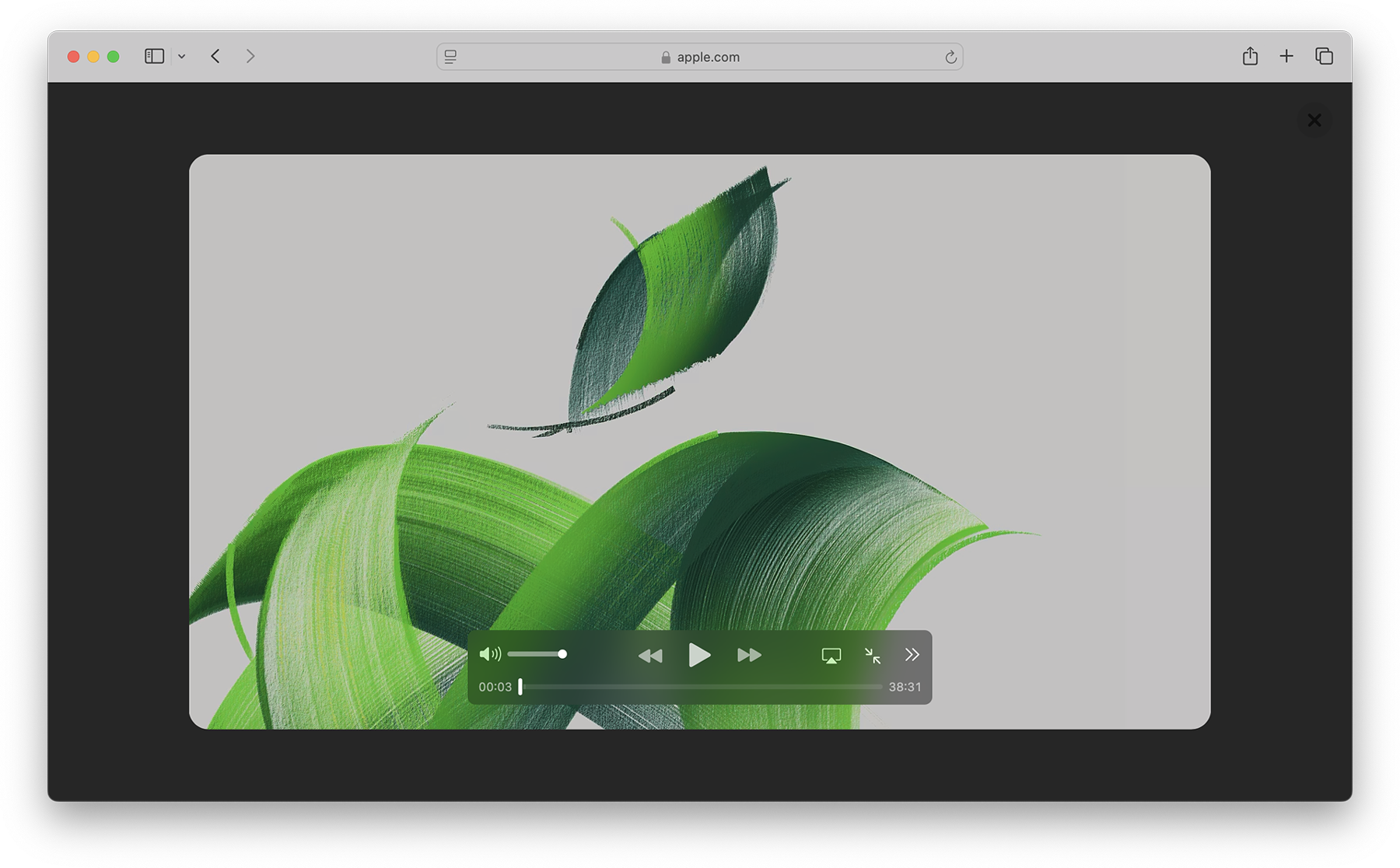
When you play in Viewer, the video fills the Safari window, while providing full access to system playback controls. Then it automatically enters picture-in-picture anytime you switch tabs, close the window, or occlude the web page with another window. Look for Video Viewer in the new page menu in Safari whenever you are on a web page with a prominent video element.
Video on visionOS

Managed Media Source
WebKit for Safari 18 beta adds Workers support for both Managed Media Source (MMS) and Media Source Extensions ( MSE ). This can be especially helpful on complex websites that want to ensure continuous and smooth video playback even when other site activity (such as live commenting) causes a very busy main thread. You can see the performance difference in this demo .
WebKit for Safari 18 beta adds support for the WebRTC HEVC RFC 7789 RTP Payload Format. Previously, the WebRTC HEVC used generic packetization instead of RFC 7789 packetization. This payload format provides a new option for improving videoconferencing, video streaming, and delivering high-bitrate movies and TV shows.
WebKit for Safari 18 beta adds support for MediaStreamTrack processing in a dedicated worker. And it adds support for missing WebRTC stats.
Two years ago at WWDC22, we announced support for passkeys — a groundbreaking industry-standard way to login to websites and app services. Passkeys provide people with an extremely easy user experience, while delivering a profound increase in security. To learn more, watch Meet Passkeys or read Supporting passkeys .
WebKit for Safari 18 beta adds support for three new features as we continue to improve passkeys. First, Safari 18 beta adds support for using mediation=conditional for web authentication credential creation. This allows websites to automatically upgrade existing password-based accounts to use passkeys. Learn more by watching Streamline sign-in with passkey upgrades and credential managers at WWDC24, available on Tuesday, June 11.
Second, WebKit for Safari 18 beta adds support for using passkeys across related origins. This lets websites use the same passkey across a limited number of domains which share a credential backend.
And third, WebKit for Safari 18 beta adds support for the WebAuthn prf extension. It allows for retrieving a symmetric key from a passkey to use for the encryption of user data.
WebKit for Safari 18 beta adds support for secure HTTPS for all images, video, and audio by upgrading passive subresource requests in mixed content settings. This means that if some files for a website are served using HTTPS and some are served using HTTP (known as “mixed content”), all images and media will now be auto-upgraded to HTTPS, in adherence with Mixed Content Level 2 .
WebKit for Safari 18 beta adds support for Unicode 15.1.0 characters in RegExp. Unicode 15.1 added 627 characters, bringing the total of characters to 149,813. Now, these new characters can be used in regular expressions.
WebKit for Safari 18 beta also adds support for the v flag with RegExp.prototype[Symbol.matchAll] . providing more powerful ways to match Unicode characters, as specified in the ECMAScript 2024 standard.
For example, you can now specify to only match on Latin characters, while avoiding matching on Cyrillic script characters.
Or split a string matching on Emojis.
WebKit for Safari 18 beta adds support for URL.parse() , a way to parse URLs which returns null rather than an exception when parsing fails.
WebKit for Safari 18 beta expands Declarative Shadow tree support by adding the shadowRootDelegatesFocus and shadowRootClonable IDL attributes to the <template> element. It also adds the shadowRootSerializable attribute and shadowRootSerializable IDL attribute to the <template> element, enabling those using Declarative Shadow roots to opt into making them serializable. Serializing can be done through the new getHTML() method that has been added at the same time.
WebKit for Safari 18 beta adds support for PopStateEvent ’s hasUAVisualTransition , indicating whether the user agent has a visual transition in place for the fragment navigation.
WebKit for Safari 18 beta adds support for subresource integrity in imported module scripts, which gives cryptographic assurances about the integrity of contents of externally-hosted module scripts.
WebKit for Safari 18 beta adds support for the bytes() method to the Request, Response , Blob , and PushMessageData objects. This replaces the need for web developers to call arrayBuffer() , which can be difficult to use, and wraps the result in a Uint8Array . Calling bytes() is now the recommended way going forward when you need to access the underlying bytes of the data these objects represent.
WebKit for Safari 18 beta adds support for feature detecting text fragments by exposing document.fragmentDirective . Note that the returned object (a FragmentDirective ) doesn’t provide any functionality, but it’s helpful if you need to know if Fragment Directives are supported by the browser.
WebKit for Safari 18 beta adds support for the willReadFrequently context attribute for the getContext() method. It indicates whether or not a lot of read-back operations are planned. It forces the use of a software accelerated 2D or offscreen canvas, instead of hardware accelerated. This can improve performance when calling getImageData() frequently.
WebKit for Safari 18 beta extends 2D canvas support for currentcolor . It can now be used inside color-mix() or Relative Color Syntax. Here currentcolor will default to the computed color property value on the canvas element.
WebKit for Safari 18 beta adds support for six new WebGL extensions:
- EXT_texture_mirror_clamp_to_edge
- WEBGL_render_shared_exponent
- WEBGL_stencil_texturing
- EXT_render_snorm
- OES_sample_variables
- OES_shader_multisample_interpolation
WebKit for Safari 18 beta adds support for fuzzy search code completion in the Web Inspector’s CSS source editor.
WebKit for iOS 18 beta, iPadOS 18 beta, visionOS 2 beta, and macOS Sequoia beta adds support for two new API — the Writing Tools API and an API to control adaptive image glyph insertion. Learn more about these API by watching Get started with Writing Tools and Bring expression to your app with Genmoji at WWDC24, both available Tuesday June 11.
WebKit for Safari 18 beta adds support for Apple Pay funds transfer.
While it’s rare to deprecate older technology from the web, there are occasions when it makes sense. We’ve been busy removing -webkit prefixed properties that were never standardized, aging media formats that were never supported in other browsers, and more. This helps align browser engines, improve interoperability, and prevent compatibility problems by reducing the possibility that a website depends on something that’s not a web standard.
WebKit for Safari 18 beta removes support for OffscreenCanvasRenderingContext2D ’s commit() method.
WebKit for Safari 18 beta deprecates support for a number of rarely used -webkit prefixed CSS pseudo-classes and properties — and even one -khtml prefixed property.
- -webkit-alt and alt properties
- :-webkit-animating-full-screen-transition pseudo-class
- :-webkit-full-screen-ancestor pseudo-class
- :-webkit-full-screen-controls-hidden pseudo-class
- :-webkit-full-page-media pseudo-class
- :-webkit-full-screen-document pseudo-class
- :-khtml-drag pseudo-class
WebKit for Safari 18 beta also deprecates support for the resize: auto rule. Support for the resize property remains, just as it’s been since Safari 4. The values Safari continues to support include : none , both , horizontal , vertical , block , inline , plus the global values. Early versions of CSS Basic User Interface Module Level 3 defined auto , but it was later written out of the web standard.
WebKit for Safari 18 beta also deprecates support for non-standardize WEBKIT_KEYFRAMES_RULE and WEBKIT_KEYFRAME_RULE API in CSSRule .
WebKit for Safari 18 beta removes support for the JPEG2000 image format. Safari was the only browser to ever provide support.
If you’ve been serving JPEG2000 files using best practices, then your site is using the picture element to offer multiple file format options to every browser. Safari 18 beta will simply no longer choose JPEG2000, and instead use a file compressed in JPEG XL, AVIF, WebP, HEIC, JPG/JPEG, PNG, or Gif — choosing the file that’s best for each user. Only one image will be downloaded when you use <picture> , and the browser does all the heavy lifting.
We have noticed that some Content Deliver Networks (CDN) use User Agent sniffing to provide one file to each UA, offering only JPEG2000 images to Safari — especially on iPhone and iPad. If you expect this might be happening with your site, we recommend testing in Safari 18 beta on both macOS Sequoia and iOS or iPadOS 18. If you see problems, contact your SaaS provider or change your image delivery settings to ensure your website provides fallback images using industry best practices.
If you notice a broken site, please file an issue at webcompat.com .
WebKit for Safari 18 beta removes support for non-standard VTTRegion.prototype.track .
WebKit for Safari 18 beta removes the last bits of support for AppCache.
When AppCache first appeared in 2009, in Safari 4, it held a lot of promise as a tool for caching web pages for use offline. It was imagined as “HTML5 Application Cache” back when HTML itself was being further expanded to handle more use cases for web applications. A developer could create a simple cache manifest file with a list of files to be cached. Its simplicity looked elegant, but there was no mechanism for cache busting, and that made both developing a site and evolving the site over time quite frustrating. AppCache also had security challenges. So new web standards were created to replace it. Today, developers use Service Workers and Cache Storage instead.
WebKit deprecated AppCache with a warning to the Console in Safari 11.0. Then in 2021, we removed support for AppCache from Safari 15.0, with a few exceptions for third-party users of WKWebView . Now we are removing those exceptions. This change to WebKit will only affect the rare web content loaded in older third-party apps that have JavaScript code which relies on the existence of AppCache related interfaces.
WebKit for Safari 18 beta removes the SVGAnimateColorElement interface.
WebKit for Safari 18 beta removes support for four non-standard Web APIs:
- KeyboardEvent.altGraphKey
- AES-CFB support from WebCrypto
- KeyboardEvent.prototype.keyLocation
- HashChangeEvent ’s non-standard initHashChangeEvent() method
In addition to all the new features, WebKit for Safari 18 beta includes work to polish existing features.
Accessibility
- Fixed role assignment for <header> inside <main> and sectioning elements.
- Fixed range input not firing an input event when incremented or decremented via accessibility APIs.
- Fixed setting aria-hidden on a slot not hiding the slot’s assigned nodes.
- Fixed comboboxes to expose their linked objects correctly.
- Fixed time input accessibility by adding labels to subfields.
- Fixed aria-hidden=true to be ignored on the <body> and <html> elements.
- Fixed datetime values being exposed to assistive technologies in the wrong timezone.
- Fixed time control accessibility by adding a label to the meridiem component.
- Fixed wrong datetime value being exposed to assistive technologies for datetime-local inputs.
- Fixed ignored CSS content property replacement text when it is an empty string.
- Fixed the computed role for these elements: dd , details , dt , em , hgroup , option , s , and strong .
- Fixed hidden elements targeted by aria-labelledby to expose their entire subtree text, not just their direct child text.
- Fixed accessible name computation for elements with visibility: visible inside a container with visibility: hidden .
- Fixed updating table accessibility text when its caption dynamically changes.
- Fixed updating aria-describedby text after the targeted element changes its subtree.
- Fixed the transition property to produce the shortest serialization.
- Fixed the animation property to produce the shortest serialization.
Authentication
- Fixed navigator.credentials.create() rejects with “NotAllowedError: Operation Failed” after a conditional UI request is aborted.
- Fixed renaming DigitalCredential’s response attribute to data .
- Fixed setting the cancel flag once the cancel completes regardless of a subsequent request occurring.
- Fixed drawImage(detachedOffscreenCanvas) to throw an exception.
- Fixed OffscreenCanvas failing to render to the placeholder with nested workers.
- Fixed losing the contents layer of the placeholder canvas of OffscreenCanvas when switching off the tab.
- Fixed drawImage to not alter the input source or the destination rectangles.
- Fixed toggling the visibility on a canvas parent undoing the effect of clearRect() .
- Fixed the Canvas drawImage() API to throw an exception when the image is in broken state.
- Fixed setting white-space to a non-default value dynamically on a whitespace or a new line.
- Fixed turning text-spacing properties into font properties.
- Fixed custom counter styles extending disclosure-open and disclosure-closed to point to the correct direction in right-to-left.
- Fixed backface-visibility to create a stacking context and containing block.
- Fixed getComputedStyle() to work with functional pseudo-elements like ::highlight() .
- Fixed: Aliased :-webkit-full-screen pseudo-class to :fullscreen .
- Fixed: Aliased :-webkit-any-link to :any-link and :matches() to :is() .
- Fixed getComputedStyle() pseudo-element parsing to support the full range of CSS syntax.
- Fixed @supports to correctly handle support for some -webkit prefixed pseudo-elements that were incorrectly treated as unsupported.
- Fixed updating media-query sensitive meta tags after style changes.
- Fixed changing color scheme to update gradients with system colors or light-dark() .
- Fixed incorrect inline element size when using font-variant-caps: all-small-caps with font-synthesis .
- Fixed :empty selector to work with animations.
- Fixed preserving whitespace when serializing custom properties.
- Fixed updating style correctly for non-inherited custom property mutations.
- Fixed element removed by parent to end up losing the last remembered size.
- Fixed an incorrect difference between implicit and explicit initial values for custom properties.
- Fixed the contrast of Menu and MenuText system colors.
- Fixed keeping the shorthand value for CSS gap as-is in serialized and computed values.
- Fixed the style adjuster for @starting-style incorrectly invoking with a null element.
- Fixed excluding -apple-pay-button from applying to any element that supports appearance: auto and is not a button.
- Fixed missing color interpretation methods added to CSS color specifications.
- Fixed hsl() and hsla() implementation to match the latest spec changes.
- Fixed the implementation of rgb() and rgba() to match the latest spec.
- Fixed the hwb() implementation to match the latest spec.
- Fixed the remaining color types to be synced with the latest spec changes.
- Fixed carrying analogous components forward when interpolating colors
- Fixed applying the fill layer pattern for mask-mode .
- Fixed displayed datalist dropdown to sync its options elements after a DOM update.
- Fixed <select multiple> scrollbars to match the used color scheme.
- Fixed updating the input value when selecting an <option> from a <datalist> element.
- Fixed the value attribute not getting displayed in an input element with type="email" and the multiple attribute.
- Fixed the iOS animation for <input type=checkbox switch> .
- Fixed form controls drawing with an active appearance when the window is inactive.
- Fixed constructed FormData object to not include entries for the image button submitter by default.
- Fixed the properties of History to throw a SecurityError when not in a fully active Document.
- Fixed “about:blank” document.referrer initialization.
- Fixed parsing a self-closing SVG script element. It now successfully executes.
- Fixed RegExp.prototype.@@split to update the following legacy RegExp static properties: RegExp.input , RegExp.lastMatch , RegExp.lastParen , RegExp.leftContext , RegExp.rightContext , and RegExp.$1, ... RegExp.$9 .
- Fixed String.prototype.replace to not take the fast path if the pattern is RegExp Object and the lastIndex is not numeric. (
- Fixed spec compliance for Async / Await, Generators, Async Functions, and Async Generators.
- Fixed async functions and generators to properly handle promises with throwing “constructor” getter.
- Fixed return in async generators to correctly await its value.
- Fixed Symbol.species getters to not share a single JS Function.
- Fixed throwing a RangeError if Set methods are called on an object with negative size property.
- Fixed eval() function from another realm to not cause a direct eval call.
- Fixed eval() call with ...spread syntaxt to be a direct call.
- Fixed try/catch to not intercept errors originated in [[Construct]] of derived class.
- direct eval() in a default value expression inside a rest parameter creates a variable in the environment of the function rather than the separate one of the parameters;
- a ReferenceError is thrown when accessing a binding, which is defined inside rest parameter, in eval() , or a closure created in a default value expression of a preceding parameter, but only if there is a var binding by the same name;
- a closure, created in the default value expression inside a rest parameter, is created in a different VariableEnvironment of the function than its counterparts in preceding parameters which causes the incorrect environment to be consulted when querying or modifying parameter names that are “shadowed” by var bindings.
- Fixed TypedArray sorting methods to have a special-case for camparator returning false .
- Fixed programming style for bitwise and in setExpectionPorts.
- Fixed emitReturn() to load this value from arrow function lexical environment prior to the TDZ check.
- Fixed NFKC normalization to work with Latin-1 characters.
- Fixed parsing of private names with Unicode start characters.
- Fixed instanceof to not get RHS prototype when LHS is primitive.
- Fixed bracket update expression to resolve property key at most once.
- Fixed bracket compound assignement to resolve the property key at most once.
- Fixed Object.groupBy and Map.groupBy to work for non-objects.
- Fixed Array.fromAsync to not call the Array constructor twice.
- Fixed inconsistent output of Function.prototype.toString for accessor properties.
- Fixed Set#symmetricDifference to call this.has in each iteration.
- Fixed logical assignment expressions to throw a syntax error when the left side of the assignment is a function call.
- Fixed throwing a syntax error for nested duplicate-named capturing groups in RegEx.
- Fixed ArrayBuffer and SharedArrayBuffer constructor to check length before creating an instance.
- Fixed Intl implementation to ensure canonicalizing “GMT” to “UTC” based on a spec update.
- Fixed RegEx lookbehinds differing from v8.
- Fixed fractionalDigits of Intl.DurationFormat to be treated as at most 9 digits if it is omitted.
- Fixed navigator.cookieEnabled to return false when cookies are blocked.
- Fixed video sound coming from another window after changing tabs in the Tab Bar in visionOS.
- Fixed playback for MSE videos on some sites.
- Fixed allowing a video’s currentTime to be further than the gap’s start time.
- Fixed broken audio playback for a WebM file with a Vorbis track.
- Fixed sampleRate and numberOfChanges to be required and non-zero in a valid AudioEncoderConfig.
- Fixed media elements appending the same media segment twice.
- Fixedrejecting valid NPT strings if ‘hours’ is defined using 1 digit.
- Fixed an issue where Safari audio may be emitted from the wrong window in visionOS.
- Fixed upgrading inactive or passive subresource requests and fetches in would-be mixed security contexts to match standards.
- Fixed incorrect Sec-Fetch-Site value for navigation of a nested document.
- Fixed loading WebArchives with a non-persistent datastore.
- Fixed Timing-Allow-Origin to not apply to an HTTP 302 response.
- Fixed print buttons with a print action implementation.
- Fixed Open in Preview for a PDF with a space in its name.
- Fixed Greek uppercase transforms failing for some characters.
- Fixed resizing a <textarea> element with 1rem padding.
- Fixed the color correctness of the color matrix filter.
- Fixed backdrop-filter to apply to the border area of an element with a border-radius .
- Fixed intrinsic inline size calculators to account for whitespace before an empty child with nonzero margins.
- Fixed overlapping elements with flex box when height: 100% is applied on nested content.
- Fixed incorrect grid item positioning with out-of-flow sibling.
- Fixed break-word with a float discarding text.
- Fixed min-content calculation for unstyled only-child inlines elements.
- Fixed ellipsis rendering multiple times when position: relative and top are used.
- Fixed a bug for inline elements inserted in reverse order after a block in a continuation.
- Fixed the flash of a page background-colored bar in the footer when the window is resized.
- Fixed the cursor not updating as content scrolls under it on some pages.
- Fixed the SVG parser to interpret “form feed” as white space.
- Fixed error handling for invalid filter primitive references.
- Fixed displaying an SVG element inside a <switch> element.
- Fixed SVG title to have display: none as the default UA style rule.
- Fixed the UA stylesheet for links in SVGs to apply cursor: pointer matching standards.
- Fixed returning the initial value for the SVG gradient stop-color if it is not rendered in the page.
- Fixed the SVG marker segment calculations if the marker path consists of sub-paths.
- Fixed SVGLength to sync with the WebIDL specification.
Web Animations
- Fixed percentage transform animations when width and height are animated.
- Fixed updating an animation when changing the value of a transform property while that property is animated with an implicit keyframe.
- Fixed animating with color-mix .
- Fixed cssText setter to change the style attribute when the serialization differs.
- Fixed history.pushState() and history.replaceState() to ignore the title argument.
- Fixed URL text fragment directives not fully stripped from JavaScript.
- Fixed showPicker() method to trigger suggestions from a datalist .
- Fixed lang attribute in no namespace to only apply to HTML and SVG elements.
- Fixed unnecessarily unsetting the iframe fullscreen flag.
- Fixed DOM Range to correctly account for CDATASection nodes.
- Fixed getGamepads() to no longer trigger an insecure contexts warning.
- Fixed inserting a <picture> element displaying the same image twice.
- Fixed throwing exceptions in navigation methods if in a detached state.
- Fixed a minor issue in URL’s host setter.
- Fixed cloning of ShadowRoot nodes following a DOM Standard clarification.
- Fixed GeolocationCoordinates to expose a toJSON() method.
- Fixed GeolocationPosition to expose a toJSON() method.
- Fixed setting CustomEvent.target when dispatching an event.
- Fixed navigator.language only returning the system language in iOS 17.4.
- Fixed: Removed presentational hints from the width attribute for <hr> .
- Fixed resolving www. sub-domain for Associated Domains for all web apps.
Web Assembly
- Fixed initialization of portable reference typed globals.
- Fixed font sizes in the Audits tab.
- Fixed expanded sections of Storage to not collapse
- Fixed CSS font property values marked !important not getting overridden when using the interactive editing controls.
- Fixed an issue where the Web Inspector viewport might appear cut off.
- Fixed runtimes to be aligned in the Audit tab.
- Fixed remembering the message type selection in the Console tab.
- Fixed autocomplete for the text-indent property suggesting prefixed properties instead of each-line or hanging .
- Fixed background autocompletion suggestion to include repeating-conic-gradient .
- Fixed console clearing unexpectedly when Web Inspector reopens
- Fixed console code completion to be case-insensitive.
- Fixed overflow: scroll elements to scroll as expected when highlighting an element from the DOM tree.
- Fixed showing additional Safari tabs from an iOS device in the Develop menu.
- Fixed Console and code editor completion not auto-scrolling the suggestion into view.
- Fixed search in the DOM tree view unexpectedly chaning the text display.
- Fixed clicking the “goto” arrow for computed CSS when “show independent Styles sidebar” is disabled.
- Fixed inspectable tabs from Safari in the visionOS Simulator don’t appear in Developer menu on the host macOS.
- Fixed Gamepad API in WKWebView.
- Fixed repainting HTML elements when their width or height change in legacy WebView.
- Fixed VideoTrackGenerator writer to close when its generator track (and all its clones) are stopped.
- Fixed WebRTC AV1 HW decoding on iPhone 15 Pro.
- Fixed black stripes with screen sharing windows.
- Fixed black stripes with getDisplayMedia captured windows when the window is resized.
You can test Safari 18 beta by installing the beta of macOS 15, iOS 18, or iPadOS 18. Or, if you’d like, you can try out Safari 18 beta on macOS Sonoma or macOS Ventura by downloading the Safari 18 beta , once it’s available. (Sign in using a free Apple ID to download. Installing Safari 18 beta on macOS Sonoma or macOS Ventura will replace your existing version of Safari with no way to revert to an earlier version.) You can also help test many of these features in Safari Technology Preview .
We love hearing from you. To share your thoughts on Safari 18 beta, find us on Mastodon at @[email protected] and @[email protected] . Or send a reply on X to @webkit . You can also follow WebKit on LinkedIn . If you run into any issues, we welcome your feedback on Safari UI (learn more about filing Feedback ), or your WebKit bug report about web technologies or Web Inspector. If you notice a website that seems broken in Safari, but not in other browsers, please file a report at webcompat.com . Filing issues really does make a difference.
Download the latest Safari Technology Preview on macOS to stay at the forefront of the web platform and to use the latest Web Inspector features.
You can also find this information in the Safari 18 beta release notes .
Safari User Guide
- Get started
- Go to a website
- Bookmark webpages to revisit
- See your favorite websites
- Use tabs for webpages
- Import bookmarks and passwords
- Pay with Apple Pay
- Autofill credit card info
- View links from friends
- Keep a Reading List
- Hide ads when reading
- Translate a webpage
- Download items from the web
- Add passes to Wallet
- Save part or all of a webpage
- Print or create a PDF of a webpage
- Interact with text in a picture
- Change your homepage
- Customize a start page
- Create a profile
- Block pop-ups
- Make Safari your default web browser
- Hide your email address
- Manage cookies
- Clear your browsing history
- Browse privately
- Prevent cross-site tracking
- See who tried to track you
- Change Safari settings
- Keyboard and other shortcuts
Set up a proxy server using Safari on Mac
Your network administrator may ask you to specify a proxy server to access the internet if your Mac connects to it through a firewall. Your administrator should tell you the type of proxy server to specify, the IP address or host name, and a port number.
Open Safari for me
Click Change Settings (next to Proxies) to open Network settings.
Change the proxy settings using the information your network administrator provided.

IMAGES
VIDEO
COMMENTS
Step 1: Open the Settings app on the iPhone. Step 2: Navigate to Safari > Content Blocker and turn off the service for the Safari browser. 5. Modify DNS Settings. One of the prime reasons you are ...
Click on the Safari menu at the top and open Settings. Open Network on the left sidebar and click on Wi-Fi. While being connected to a network, click on Details. Go to TCP/IP on the left sidebar ...
Connect to a different network. Try to load a website, like www.apple.com, using cellular data. If you don't have cellular data, connect to a different Wi-Fi network, then load the website. If you're using a VPN (Virtual Private Network), check your VPN settings. If you have a VPN turned on, some apps or websites might block content from loading.
Shut your mac down. Restart it and press CMD+R during start up. Here we go , you will see Recovery Partition screen. Click on Get Online Support. Try to hit your website. If yes: There is no DNS or IP related problem, your modem works fine, there is a problem in your Software.
Clear Safari Cache. Clearing Safari data is one of the effective ways to troubleshoot common browser issues on Mac. Step 1: Open Safari on Mac. Select Safari at the top and open Settings. Step 2 ...
To get started, browse to Apple > System Preferences > Network. Find the network option in the preferences. From this window, select your connection, then click on the Advanced tab, followed by DNS. Next, click on the (+) icon next to IPv4 or IPv6 addresses. Click on the DNS tab.
Updating Safari can resolve server connection problems and improve your browsing experience. 5. Incorrect URL or Typo. Sometimes, the simplest explanation is the correct one. Safari may need help finding the server because you entered an incorrect URL or made a typo. Verify the website address again in the address bar to be sure it is correct.
Discover why Safari cannot find server and learn how to troubleshoot this issue. Find out the best solutions to resolve Safari server connection problems.
See Set up a proxy server using Safari. Contact the website's owner to find out if the web server has a problem, or if the website is incompatible with Safari. For example, Safari can't open a website that uses a protocol other than http or https. Choose Apple menu > App Store, then click Updates. Use the latest version of Safari.
Safari checks each website's certificate to verify the connection is secure. Take a close look at the Smart Search bar at the top of Safari to find out how secure the current website you're looking at is. ... Change your DNS server to a free alternative. The Domain Name System (DNS) your computer or device uses acts like a phone directory ...
How to Fix Safari Cannot Connect to Server on Windows. Resolving the "Safari cannot connect to server" issue on a Windows system involves a systematic approach to address potential underlying causes and restore seamless browsing experiences. Here's a comprehensive guide to troubleshooting and fixing this connectivity problem on Windows: 1.
Restart your Device. The most simple and popular troubleshooting method that is universally followed by everyone is to restart the device. Simply press and hold the volume and power button to slide across and restart the device. Older devices can press and hold the power button followed by dragging the slider to restart.
Here are the key culprits behind Safari's server woes: Internet Connection Issues: A shaky or unreliable internet connection is often the primary suspect when Safari struggles to find a server. Whether it's due to network outages, weak Wi-Fi signals, or disrupted cellular data, an unstable connection can impede Safari's ability to establish a ...
Here's how you can do this: Head to System Preferences on your Macbook and then click Network. Next, inside the Wi-Fi tab, click the 'Advanced' button and head to DNS settings. Add Google's Public DNS - '8.8.8.8' and select the OK button to make changes. Refresh the site to see if it loads now.
Launch the program. Select "Standard Mode" from the app UI. Step 2: Connect your iPhone to the PC through a USB. If the phone is running in normal mode, unlock it and press "Trust" on the device's screen. Sometimes, the tool might not be able to detect the device.
Safari cannot connect to server or Safari can't find server are two common issues you might face with this browser. The reason your iPhone or iPad Safari cannot connect can be related to the device or your internet connection; figuring it out might take time.
What helps translate domain names into IP addresses is a DNS (domain name system) server. There are a variety of DNS servers available online. It's likely that by default you're using the one provided by your ISP. But if you see that Safari can't find servers for your website, you can try changing the DNS server.
Get personalized access to solutions for your Apple products. Download the Apple Support app. Learn more about all the topics, resources, and contact options you need to download, update and manage your Safari settings.
Safari. Blazing fast. Incredibly private. Safari is the best way to experience the internet on all your Apple devices. It brings robust customization options, powerful privacy protections, and optimizes battery life — so you can browse how you like, when you like. And when it comes to speed, it's the world's fastest browser. 1.
Keep your browsing history to yourself. Use Private Browsing. To explore the Safari User Guide, click Table of Contents at the top of the page, or enter a word or phrase in the search field. If you need more help, visit the Safari Support website. Use Safari on your Mac to customize browsing, shop securely, read articles, and stop interruptions.
This can occur due to a weak or unstable Wi-Fi signal, network congestion, or even a complete loss of internet connection. When Safari fails to establish a connection with the server due to network issues, it promptly displays the "Safari cannot connect to the server" message. DNS Configuration Issues: The Domain Name System (DNS) plays a ...
Open Safari: Start by launching the Safari browser on your Mac.; Access Preferences: In the menu bar at the top of the screen, click "Safari" and then select "Settings" from the dropdown menu.; Go to the Advanced Tab: In the Preferences window, navigate to the "Advanced" tab.; Enable the Develop Menu: At the bottom of the Advanced tab, check the box next to "Show Develop menu in ...
Safari for visionOS 2 beta adds support for docking fullscreen videos into the current Environment. Anytime a user is watching a video fullscreen, they can tap to enter a fully immersive experience. Turning the Digital Crown adjusts the immersion. Light emitted from the video reflects off of the Environment, while audio is rendered on a large ...
In the Safari app on your Mac, choose Safari > Settings, then click Advanced. Click Change Settings (next to Proxies) to open Network settings. Change the proxy settings using the information your network administrator provided. Click OK. In Safari on your Mac, if you connect to the internet through a firewall, you may need to specify a proxy ...